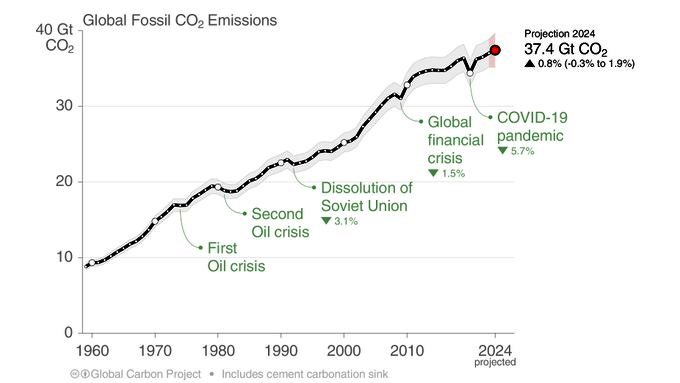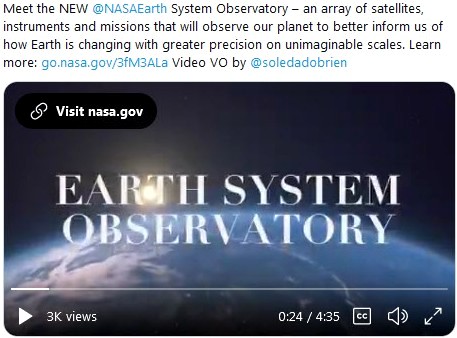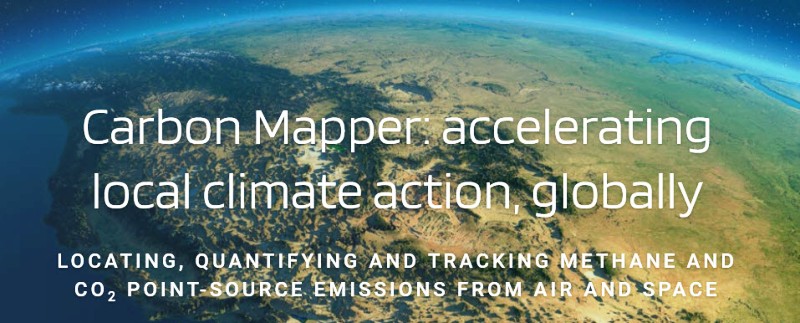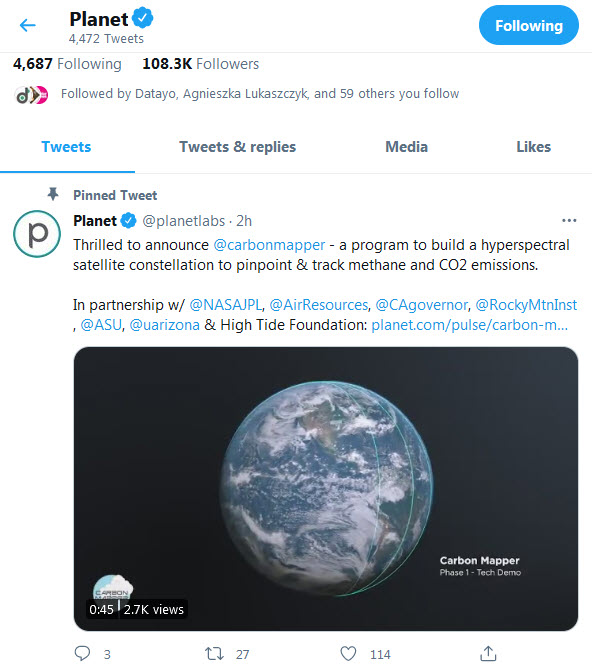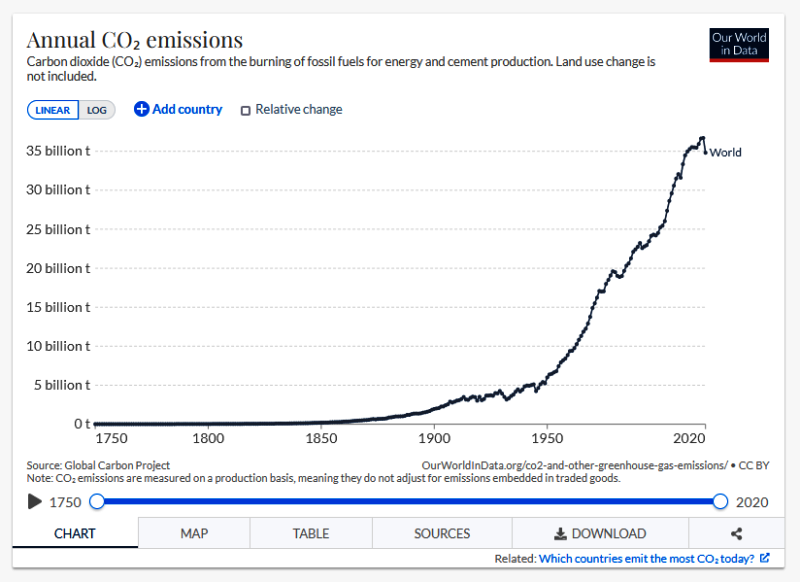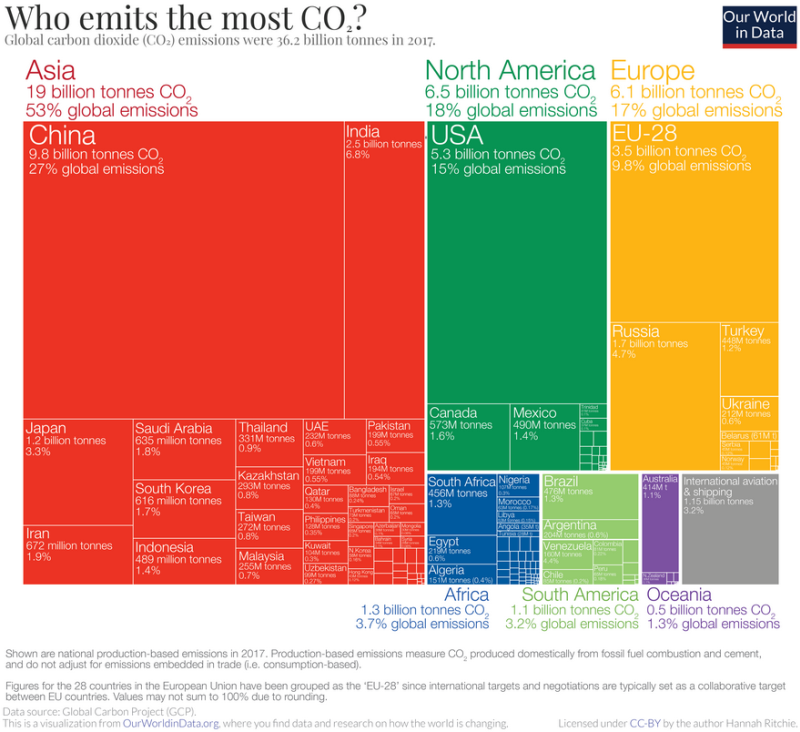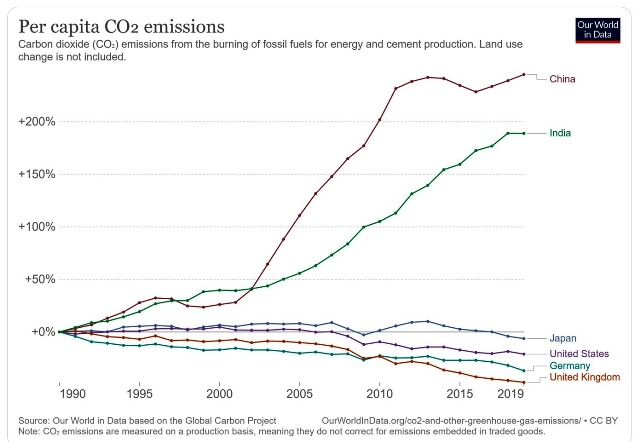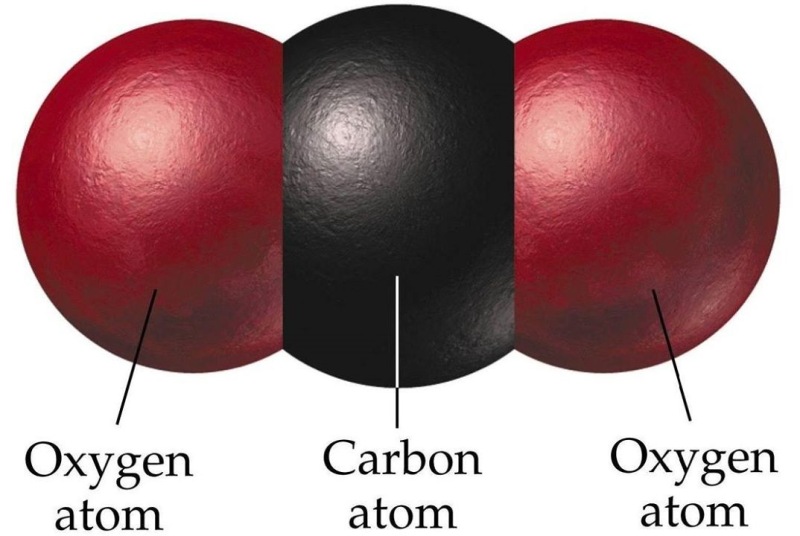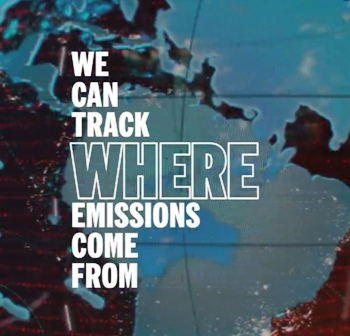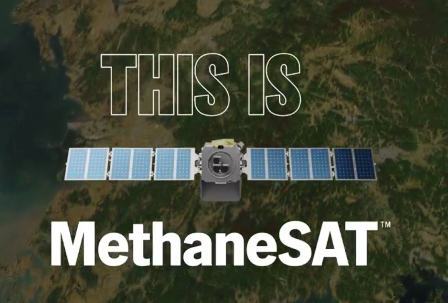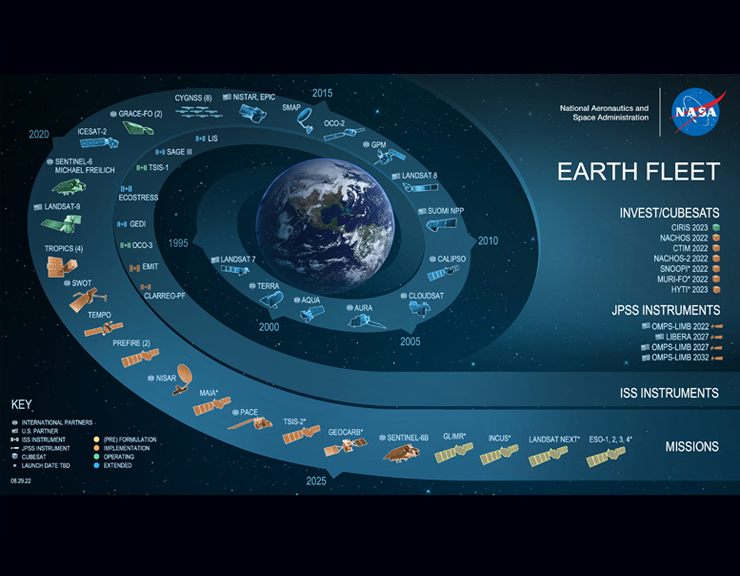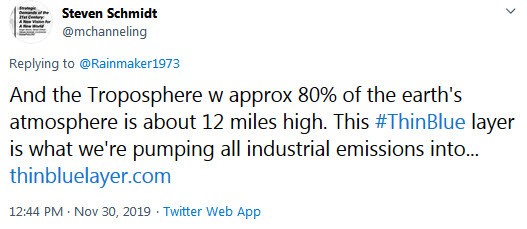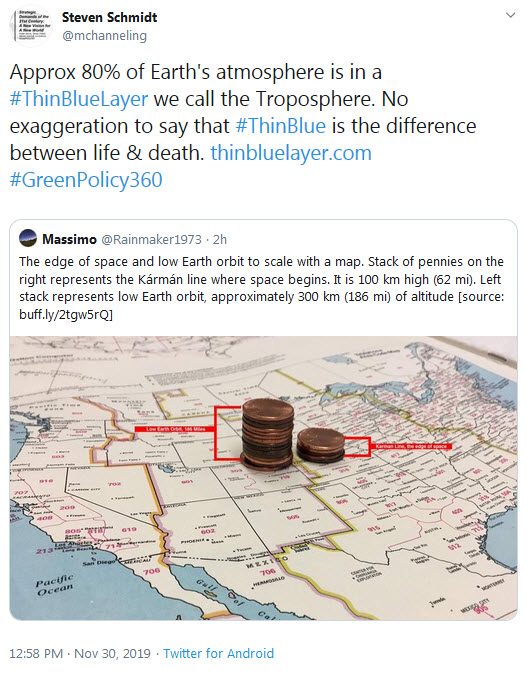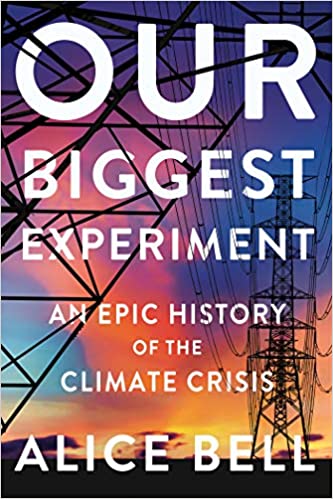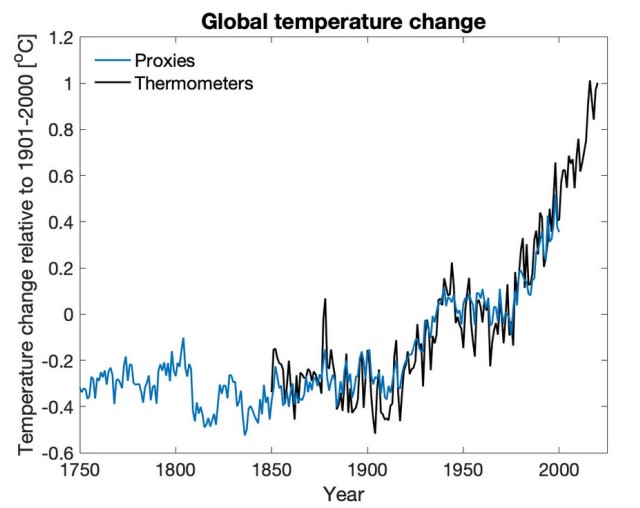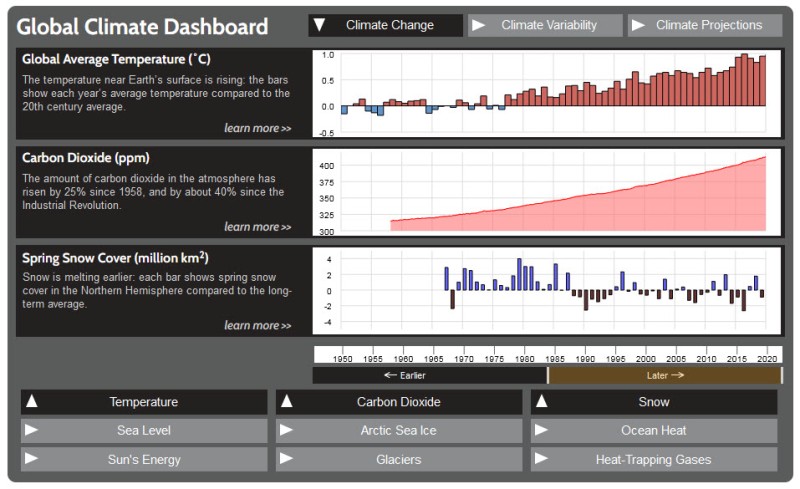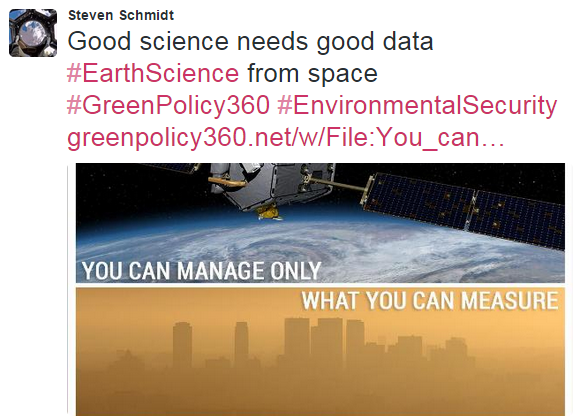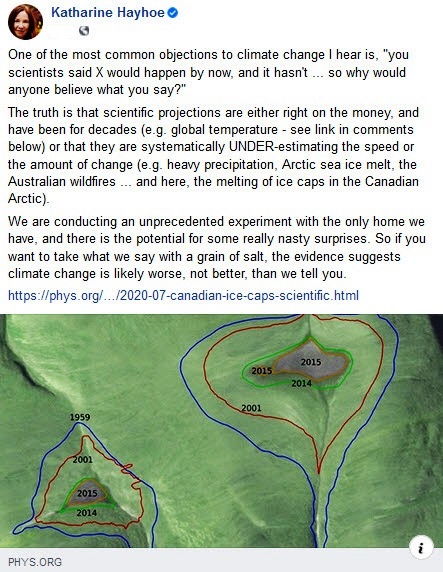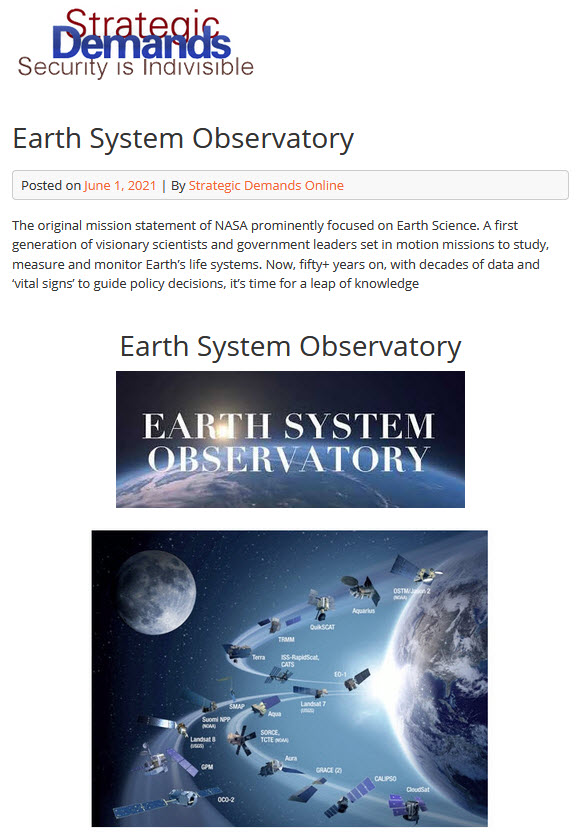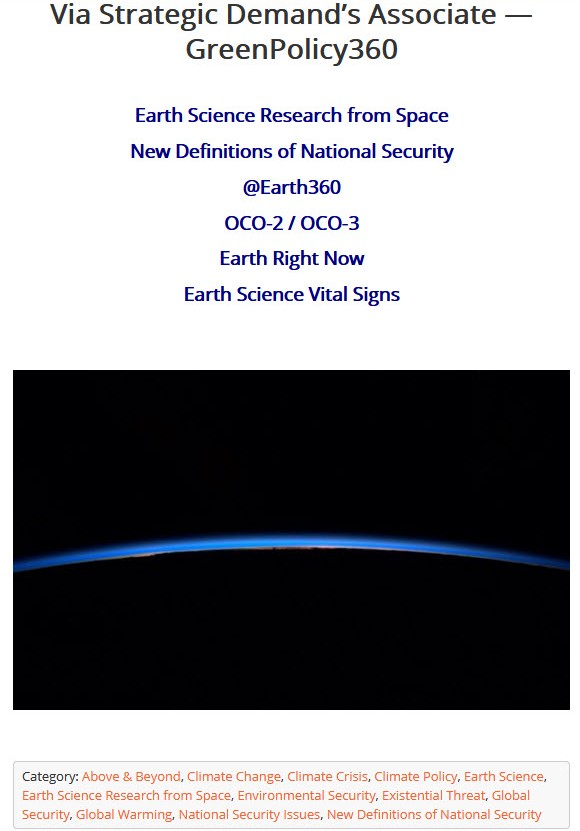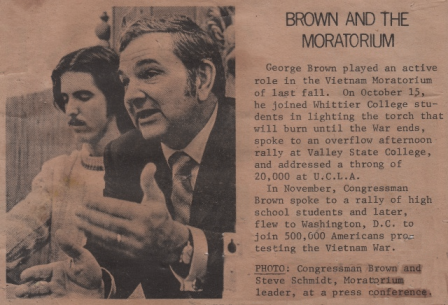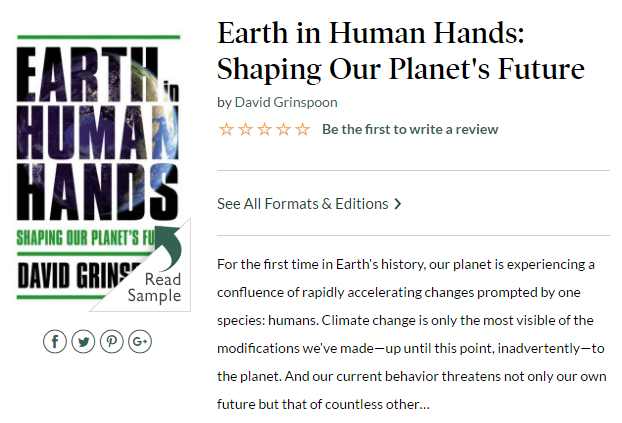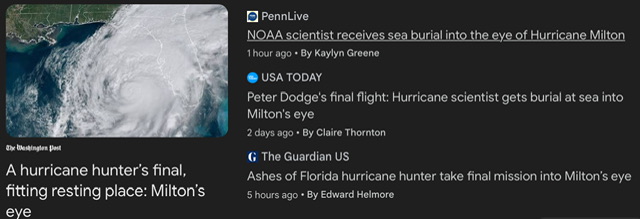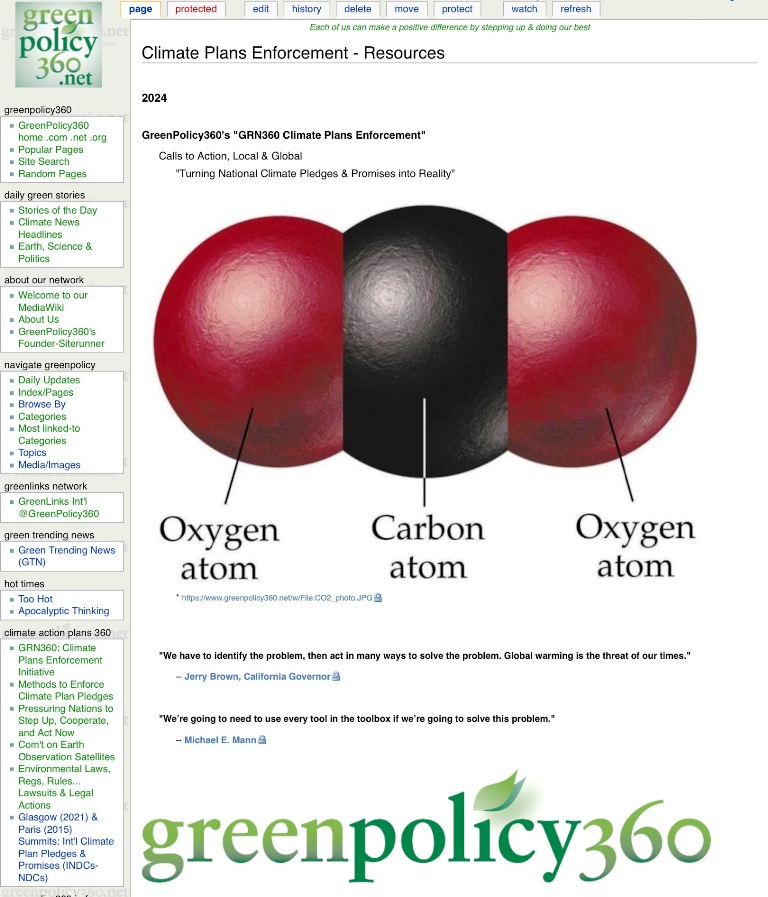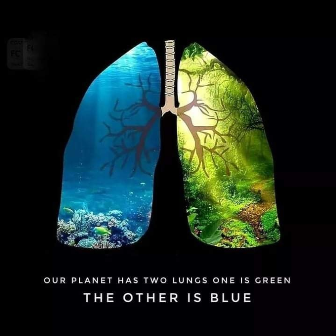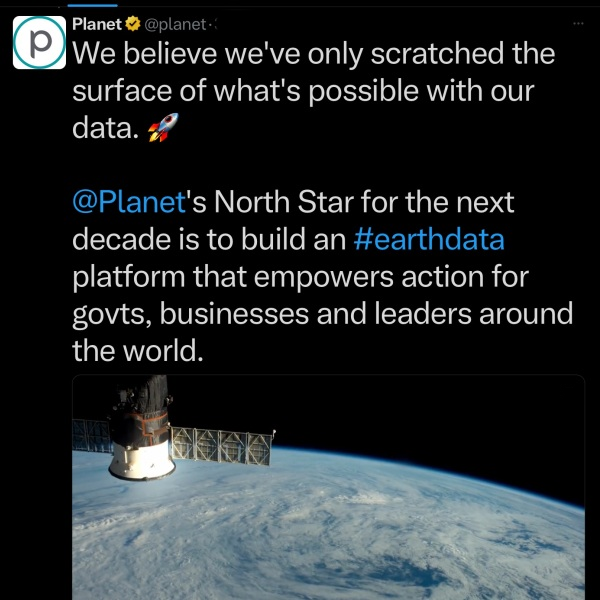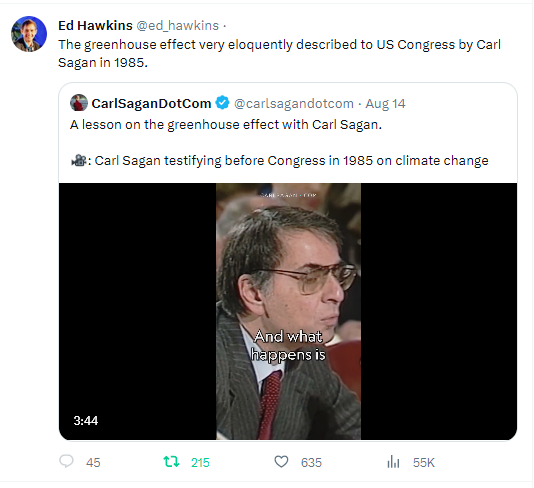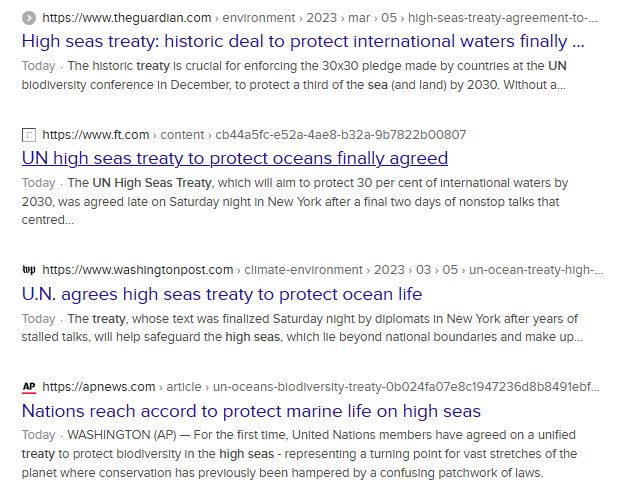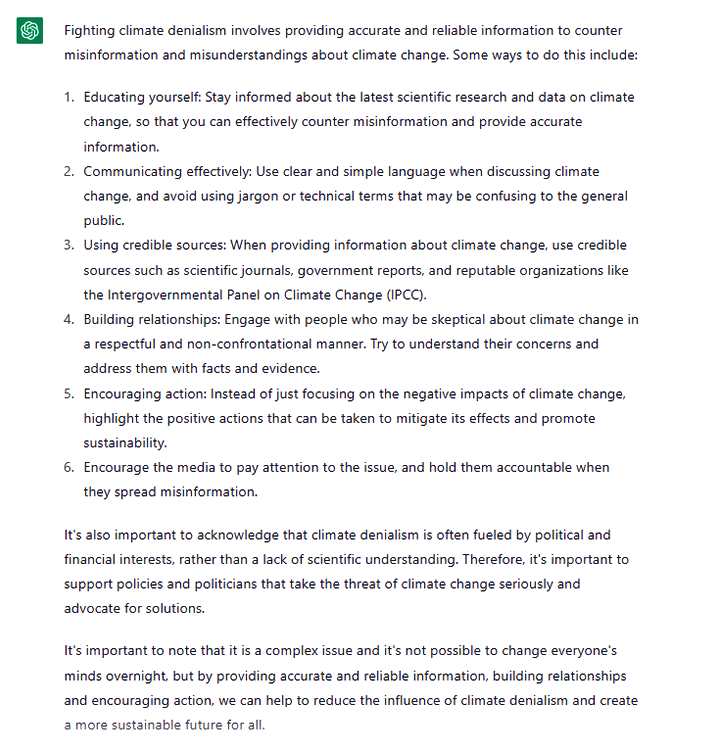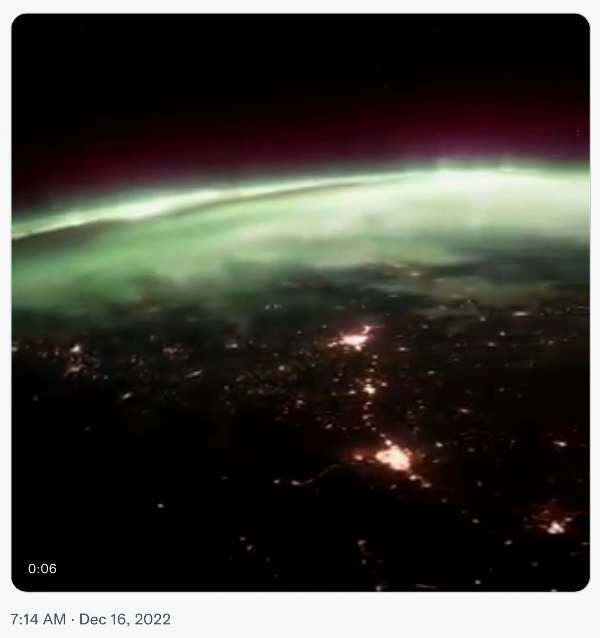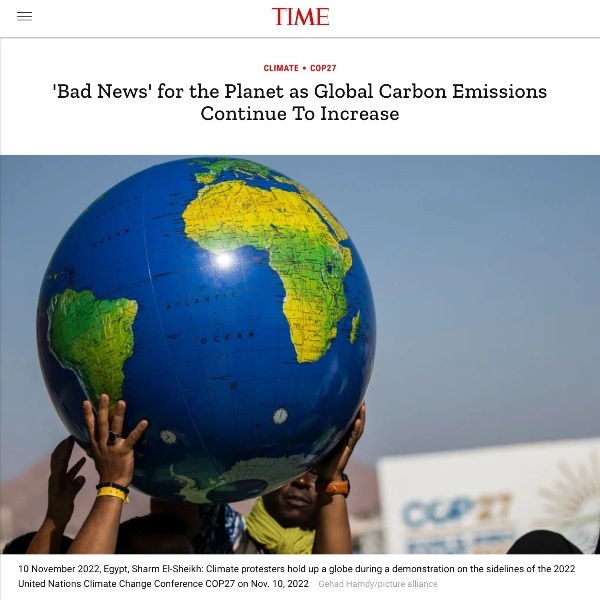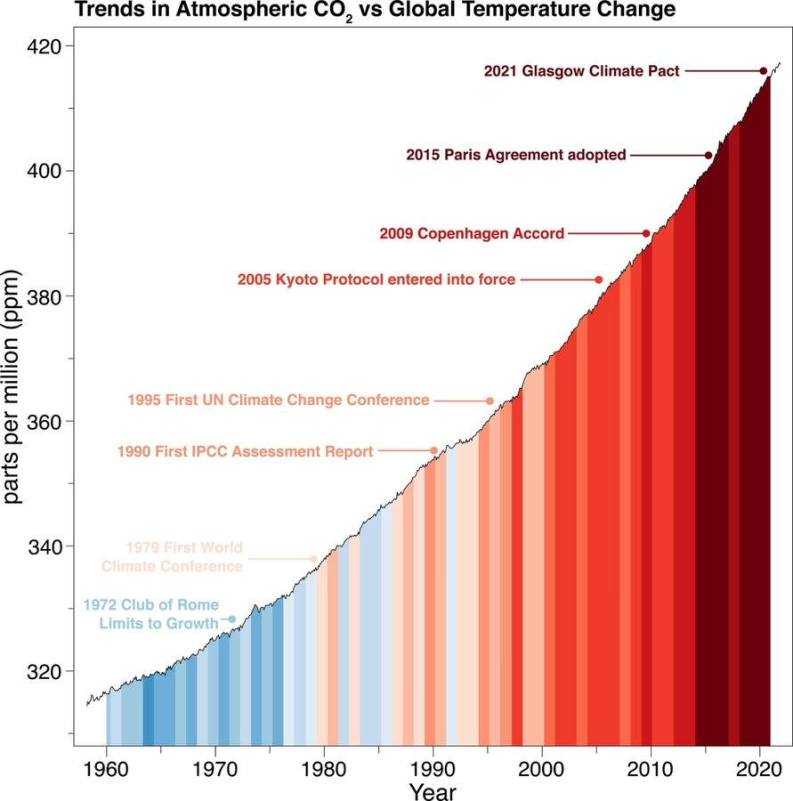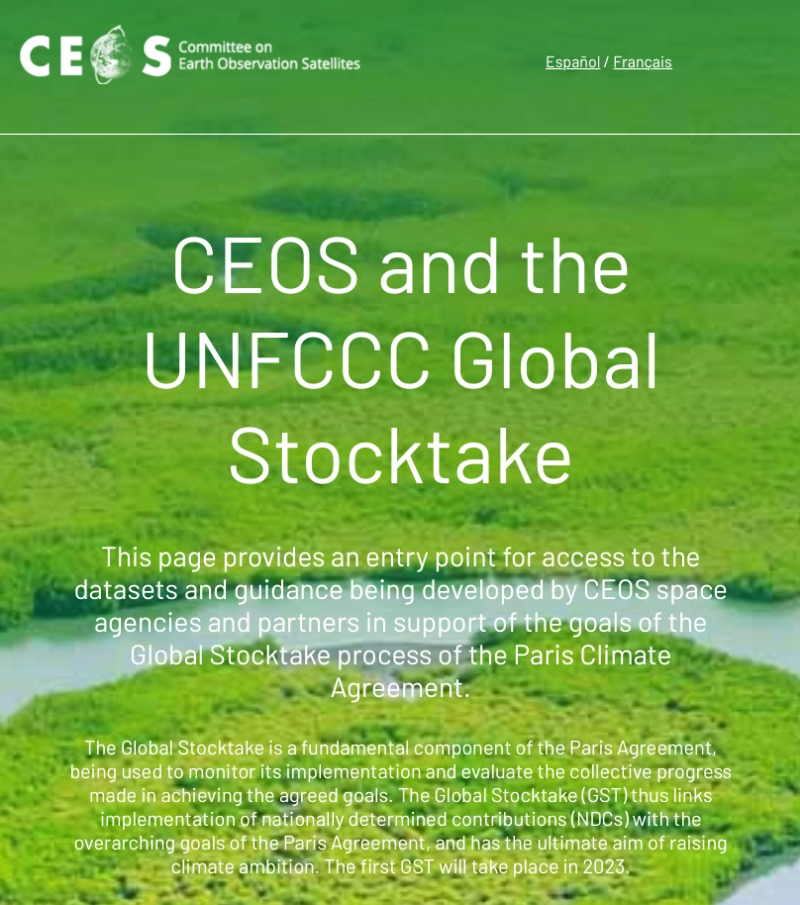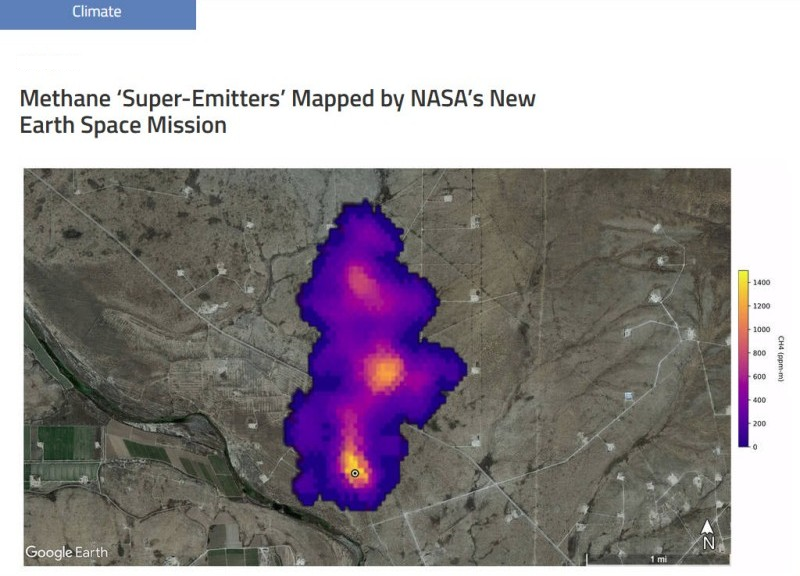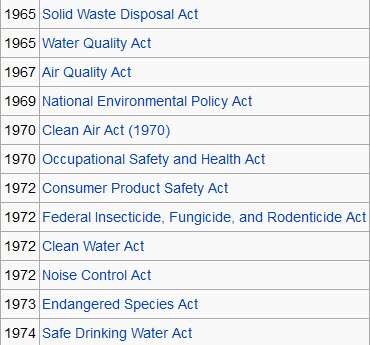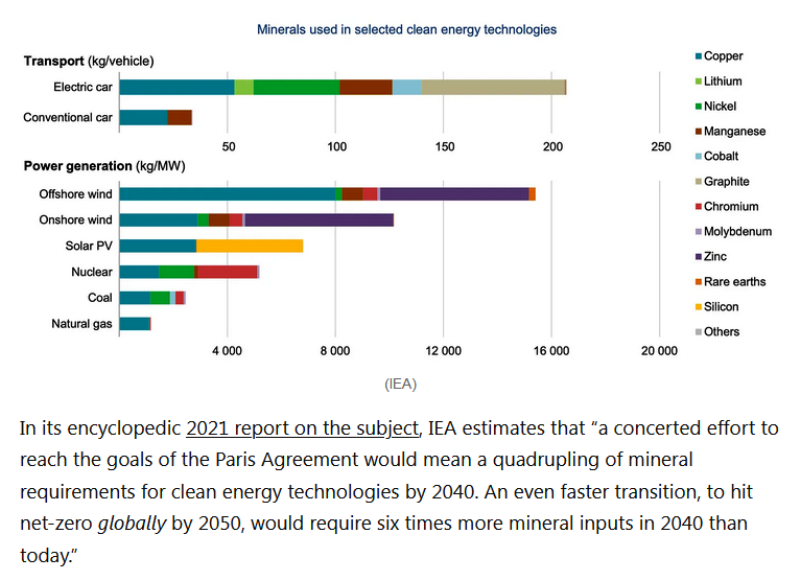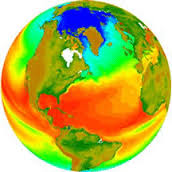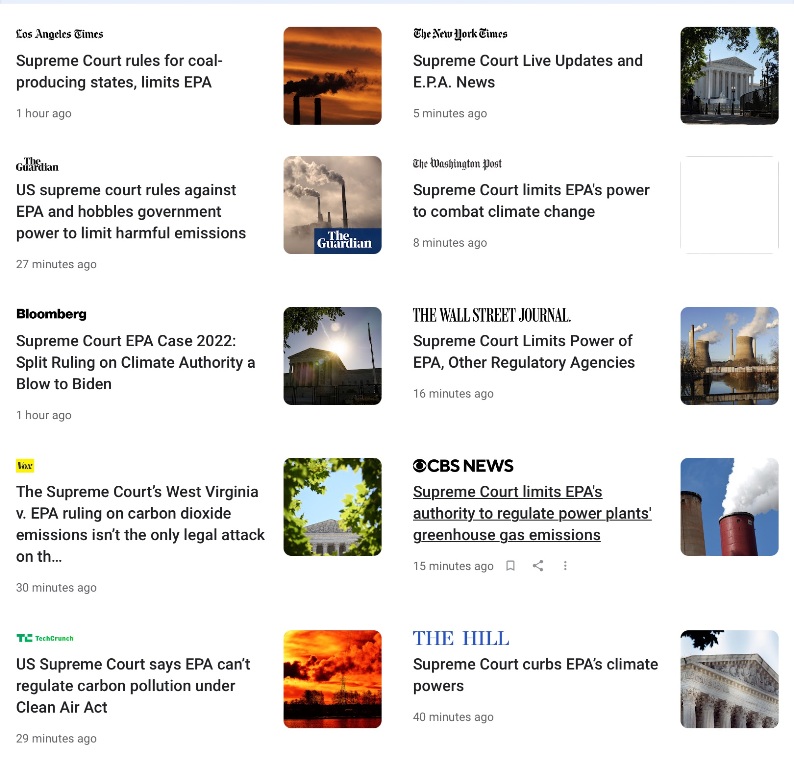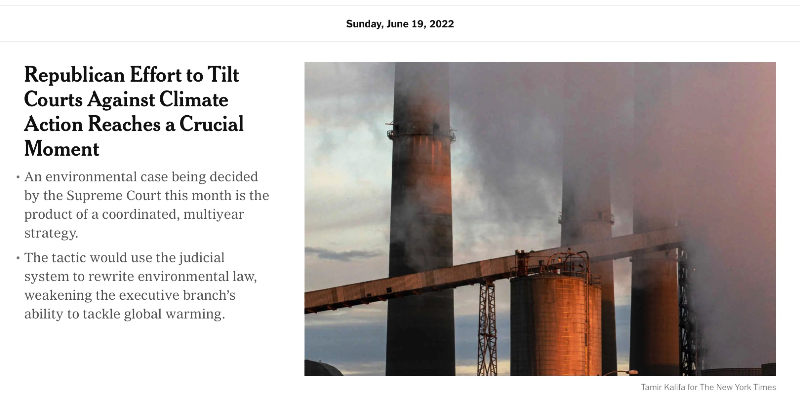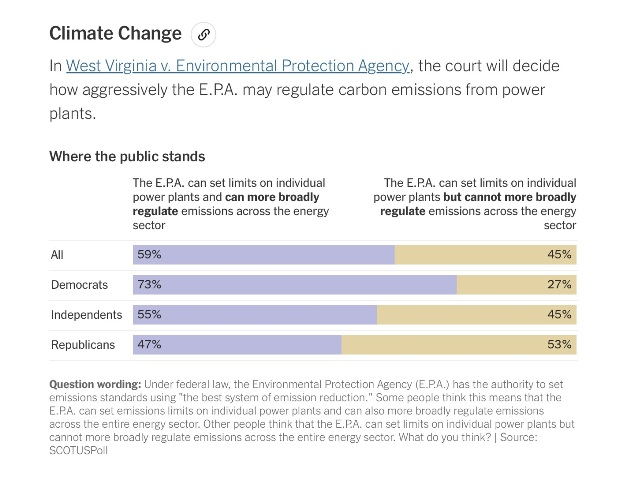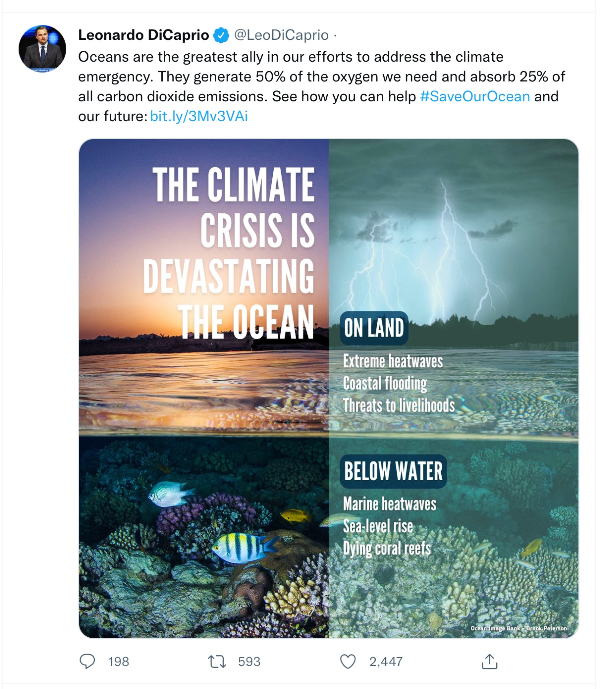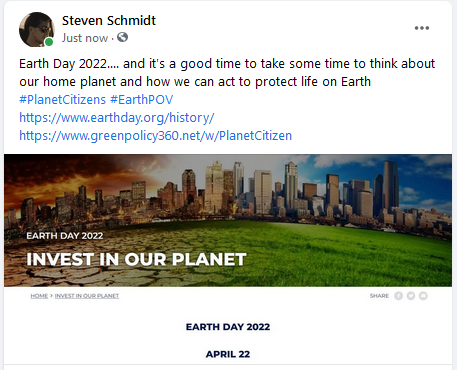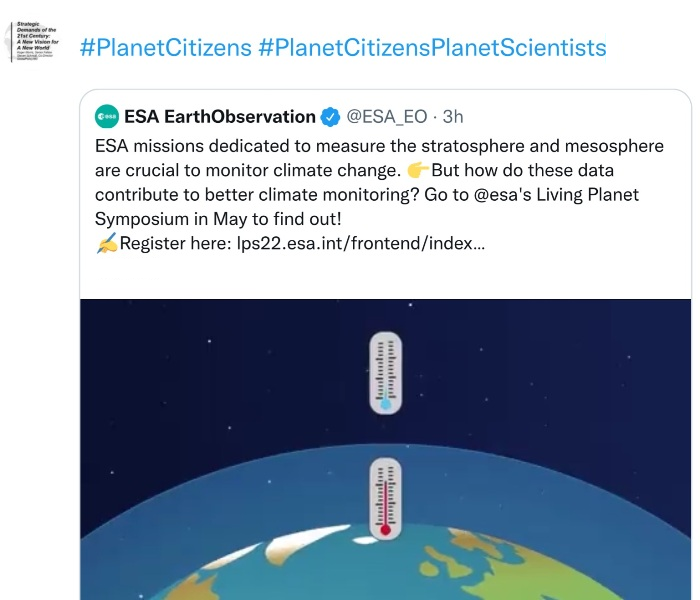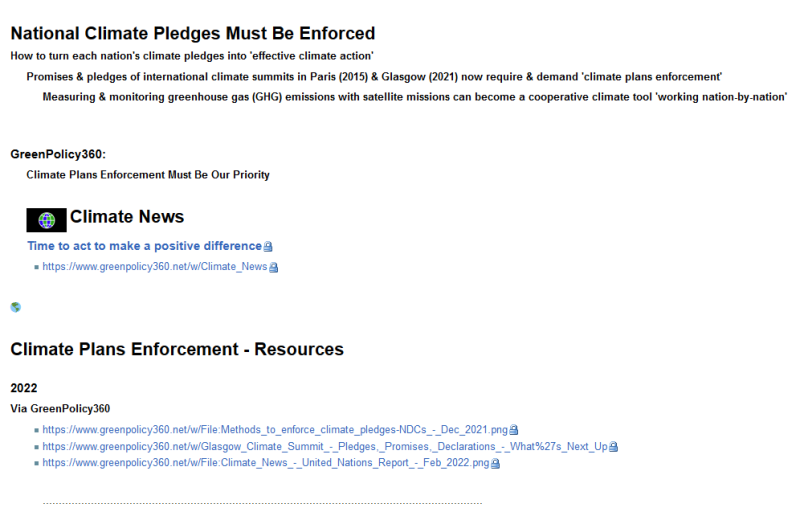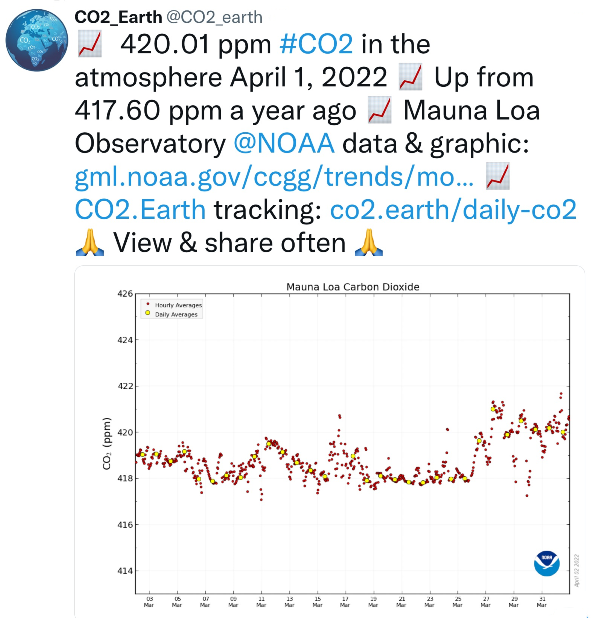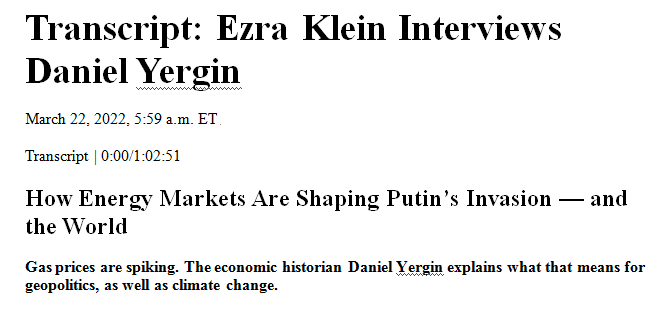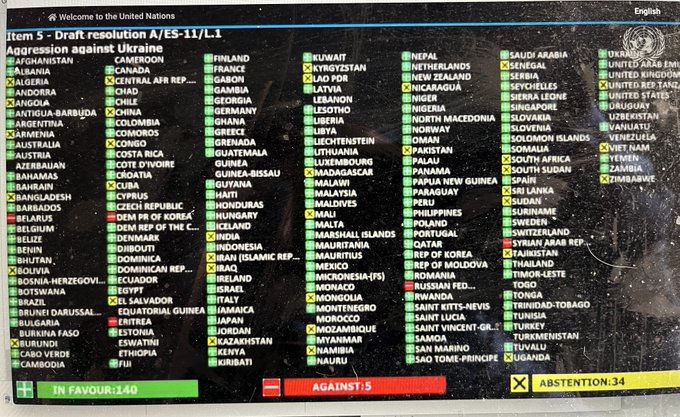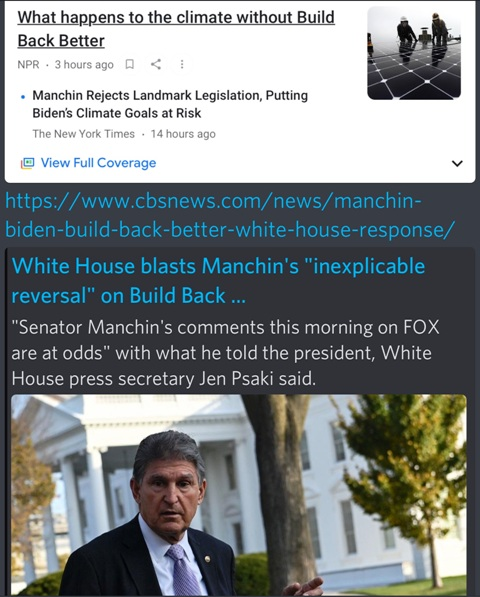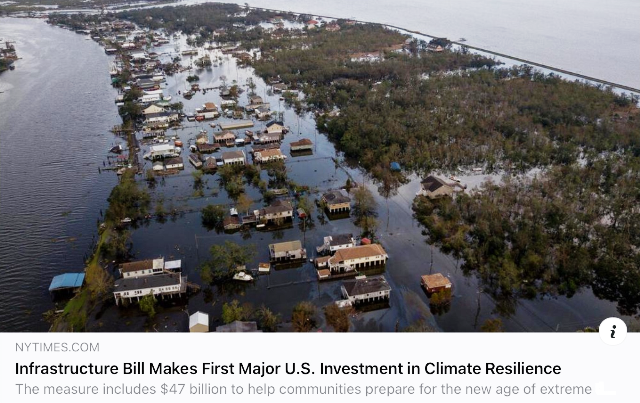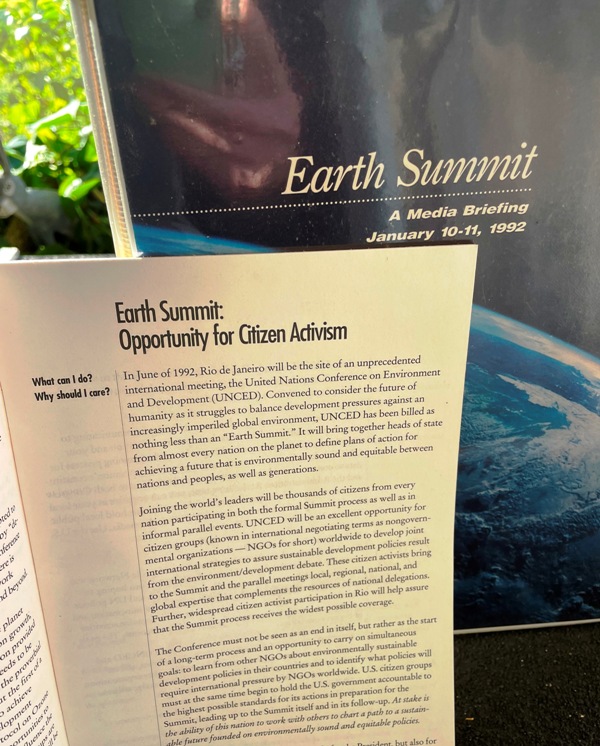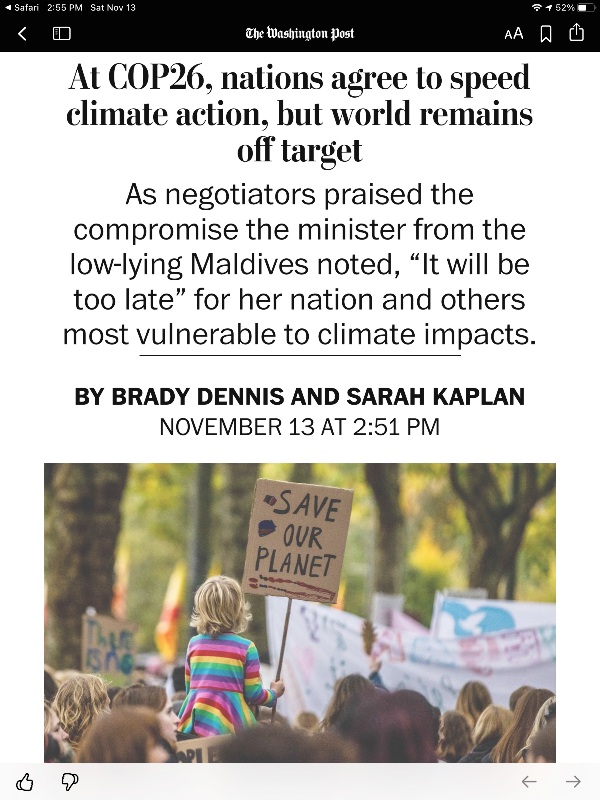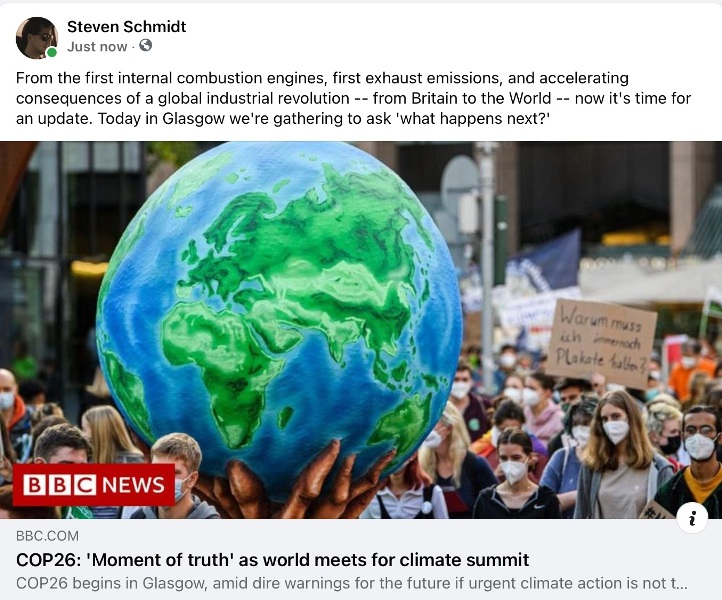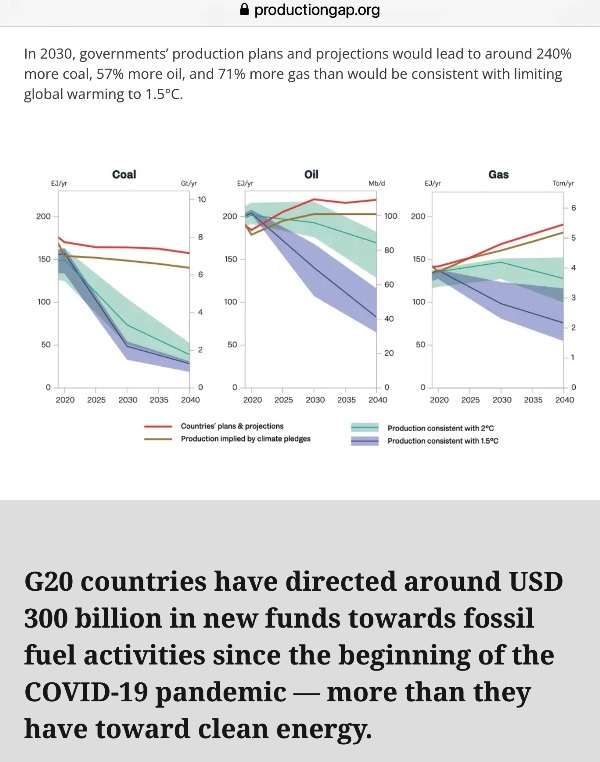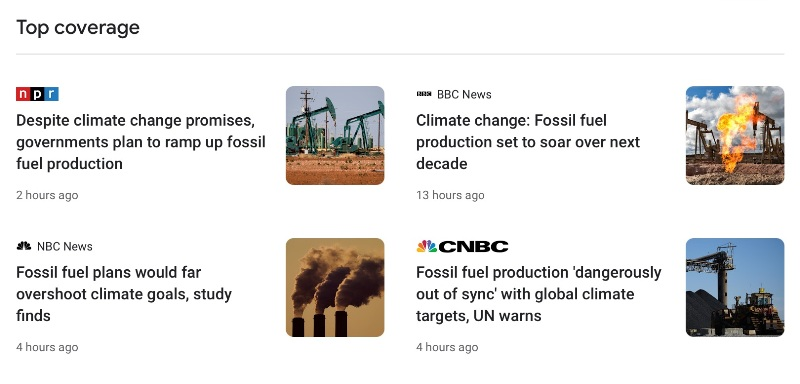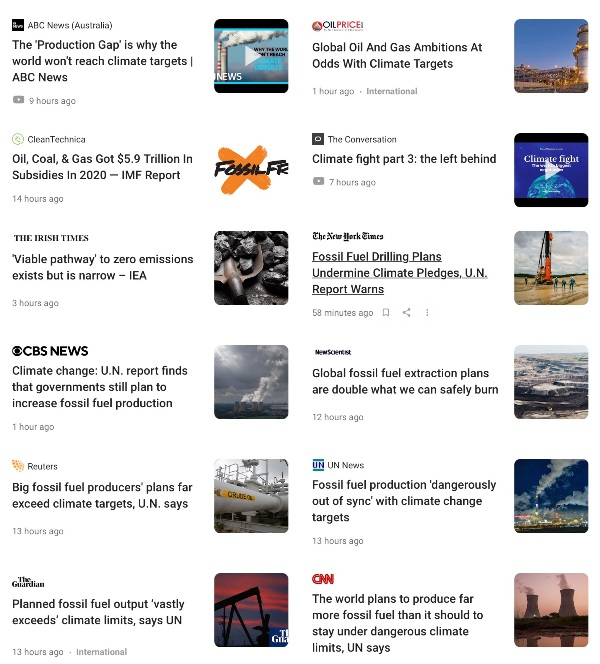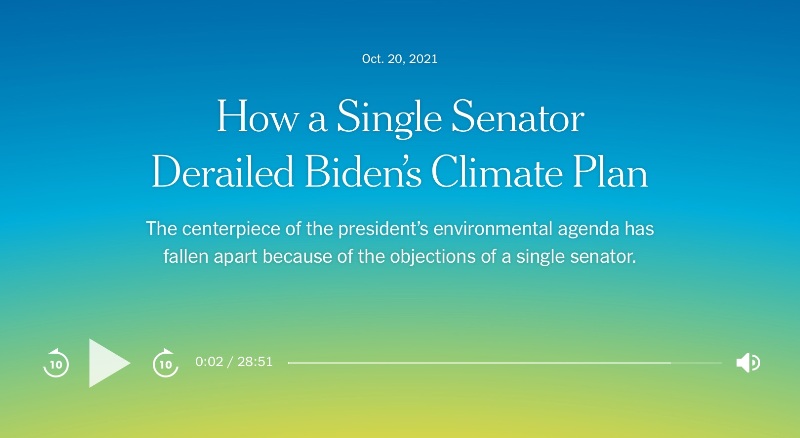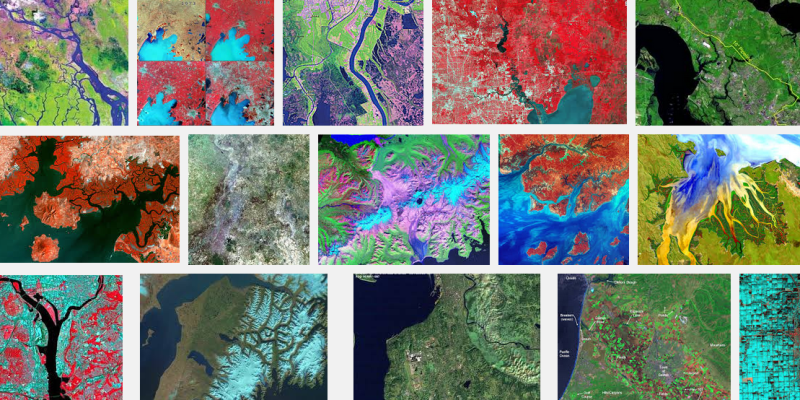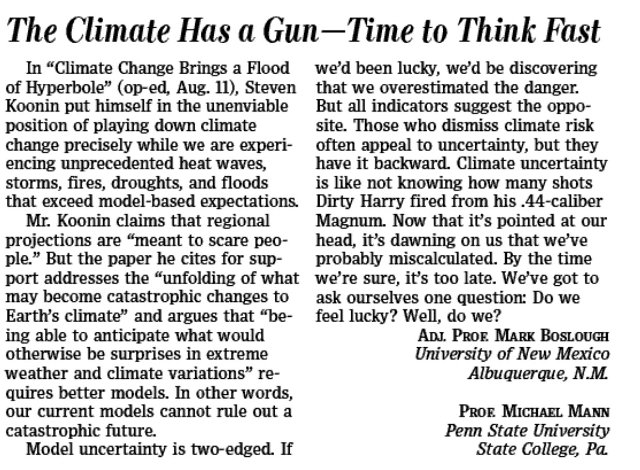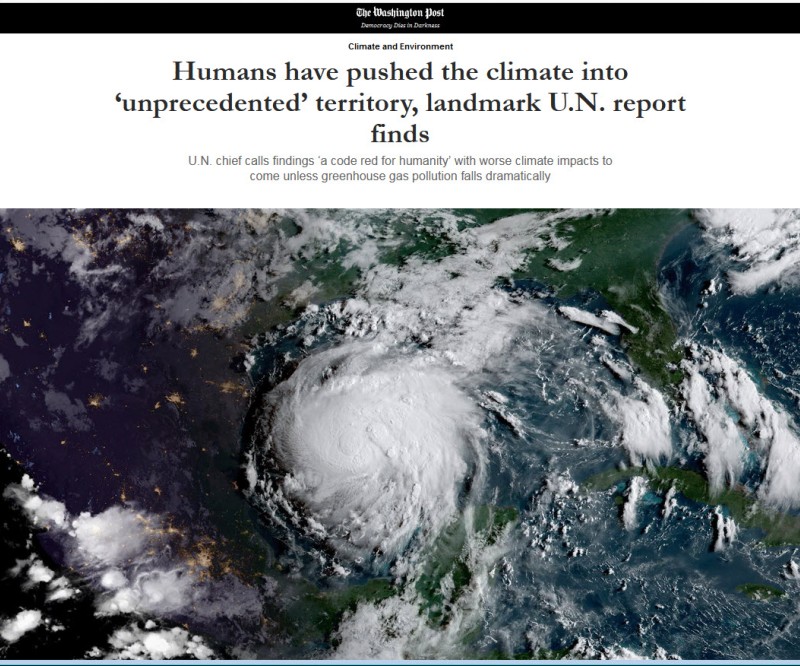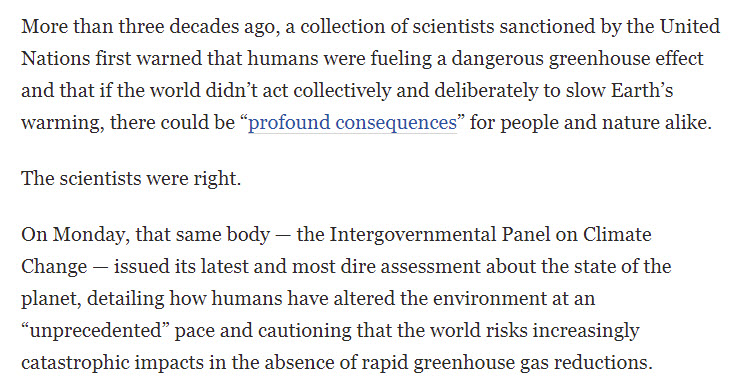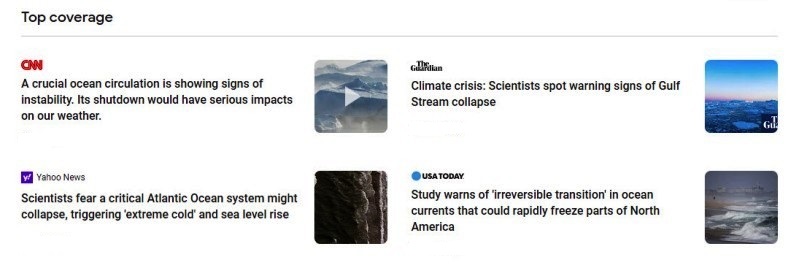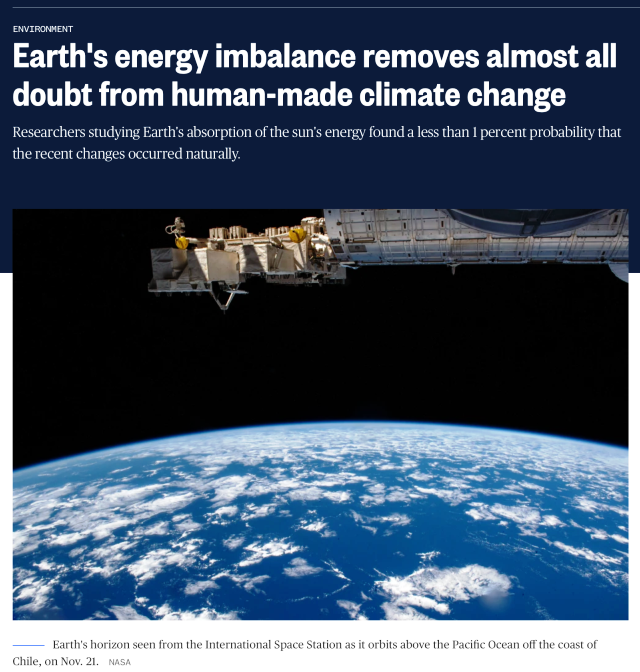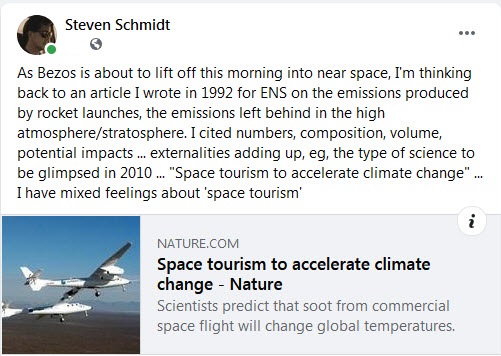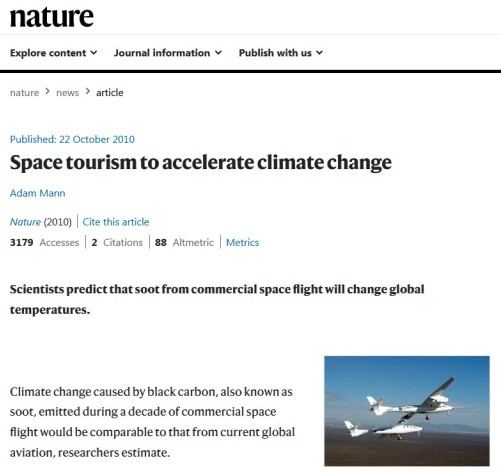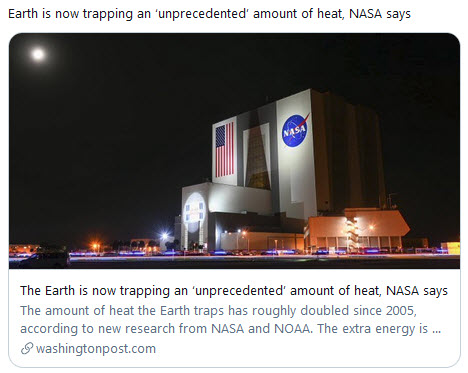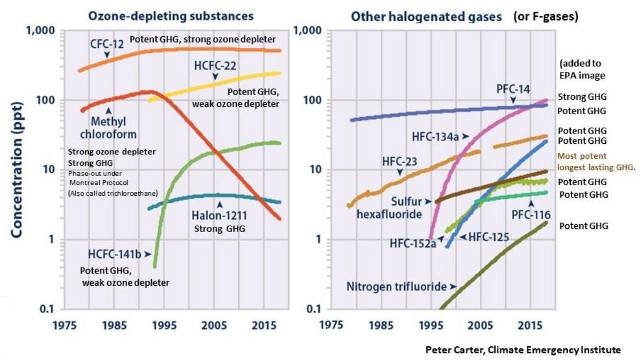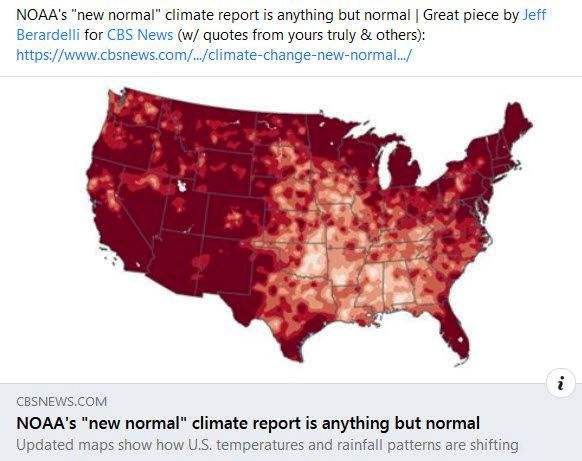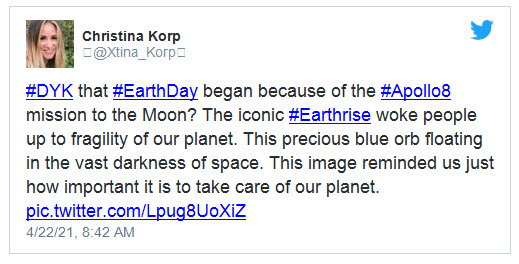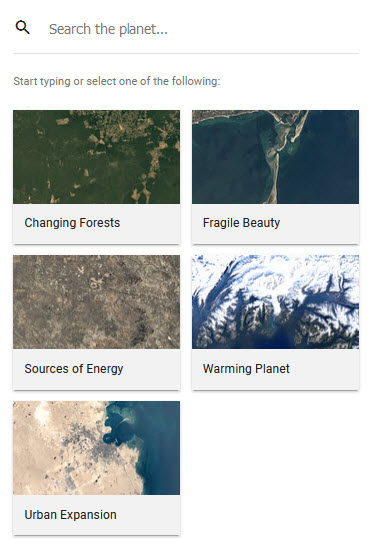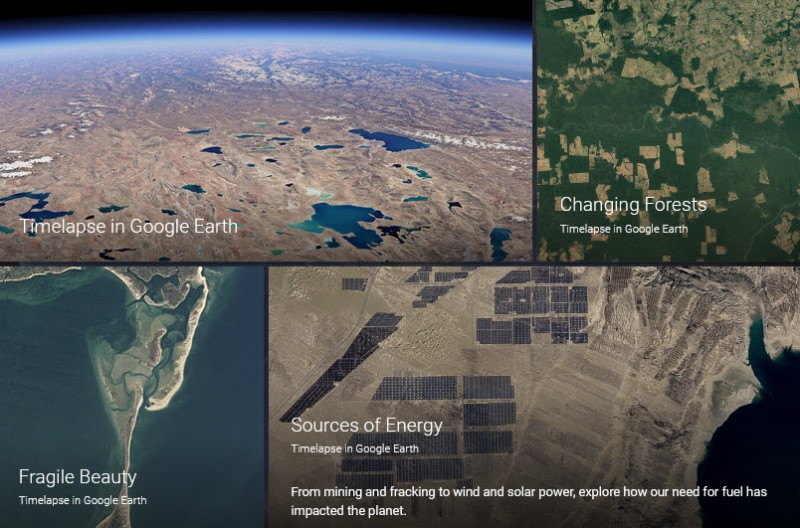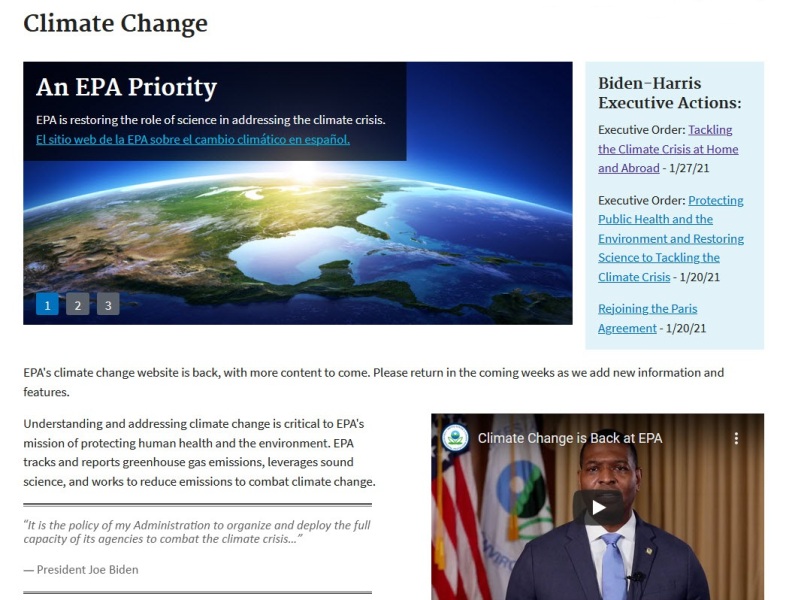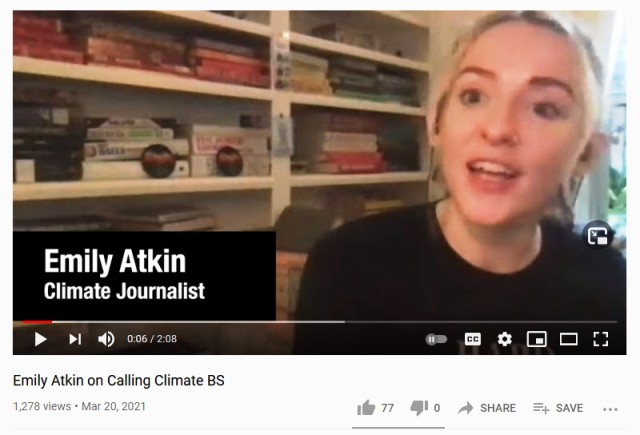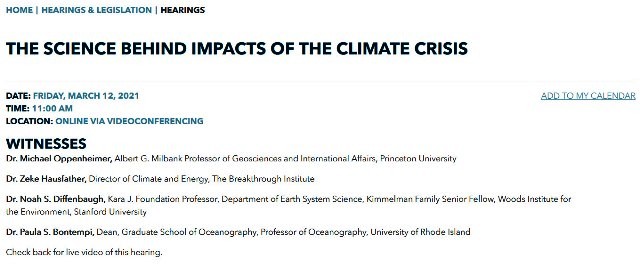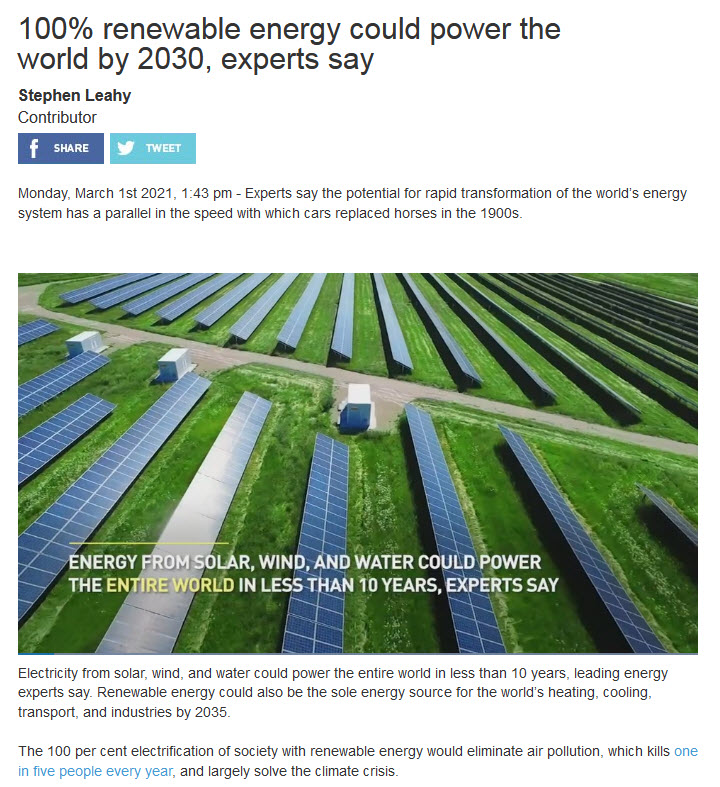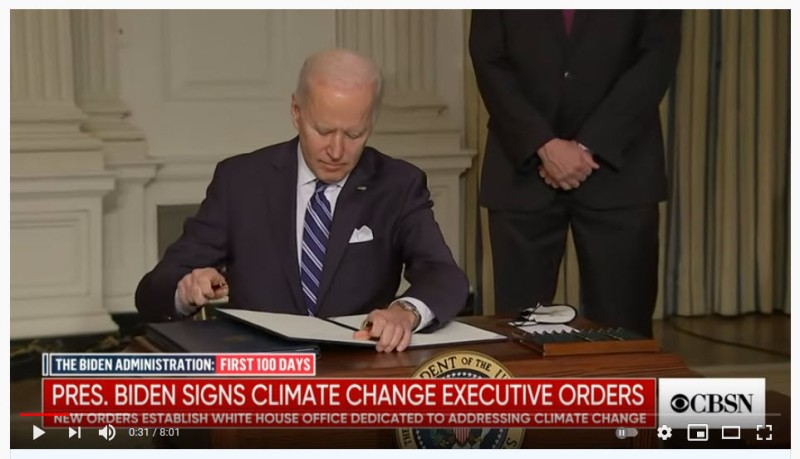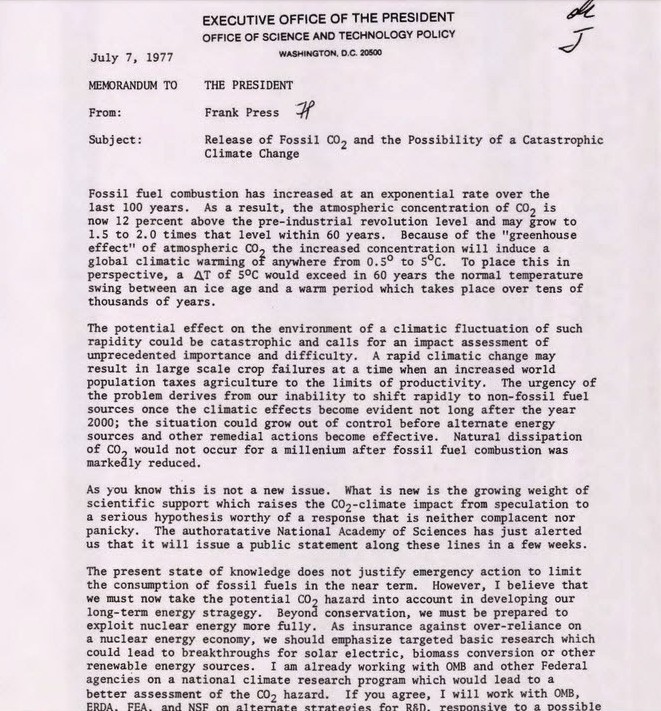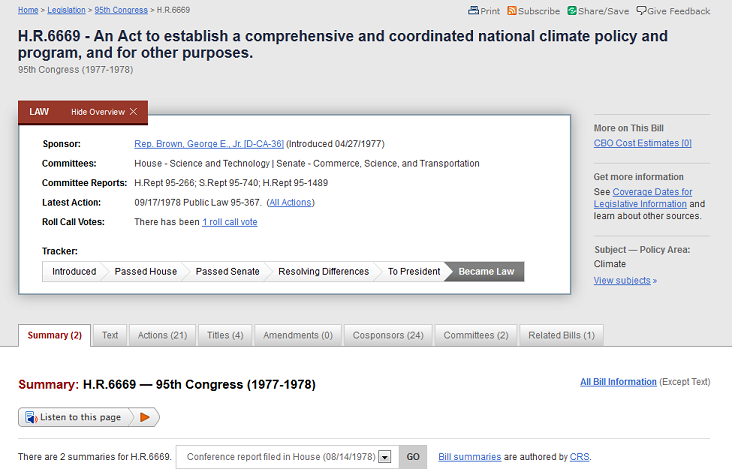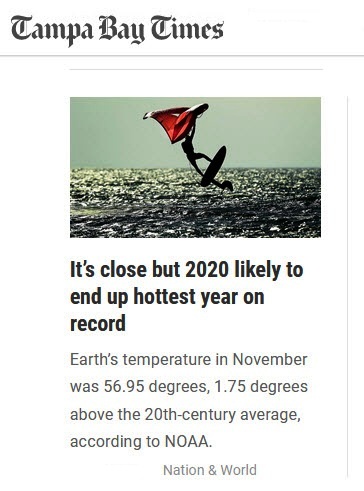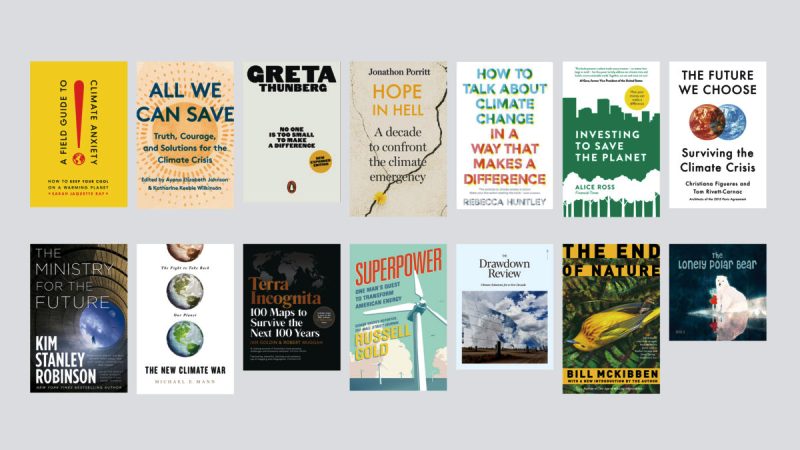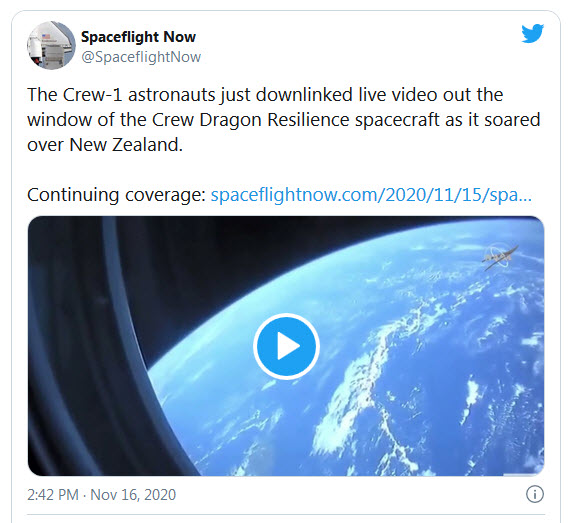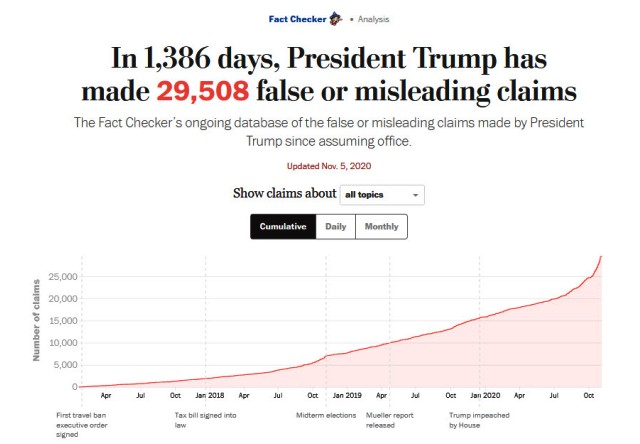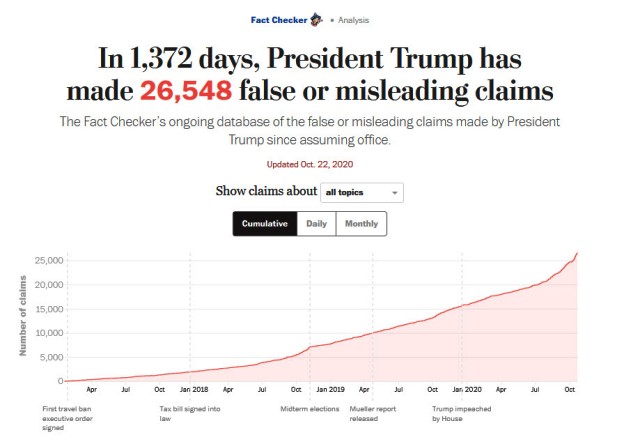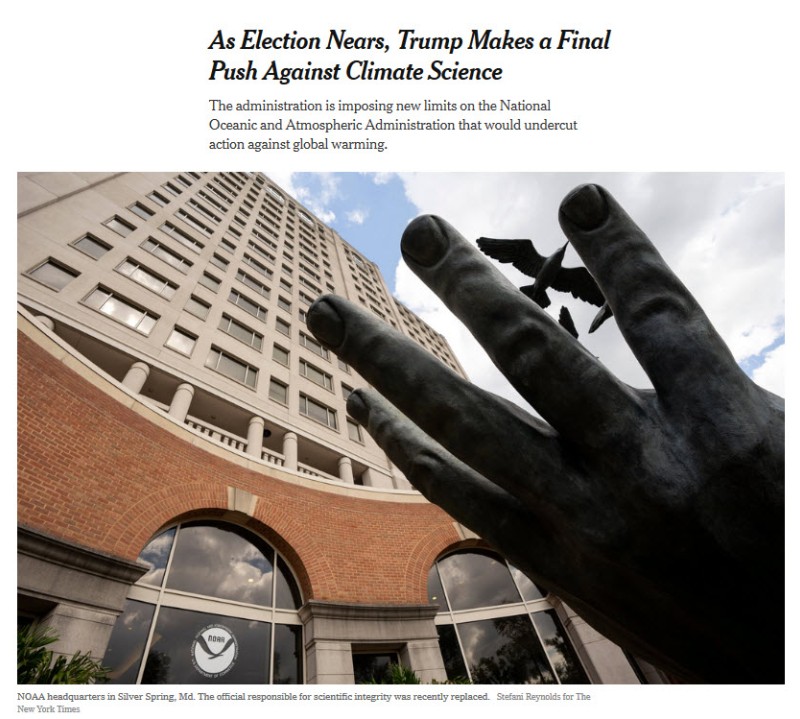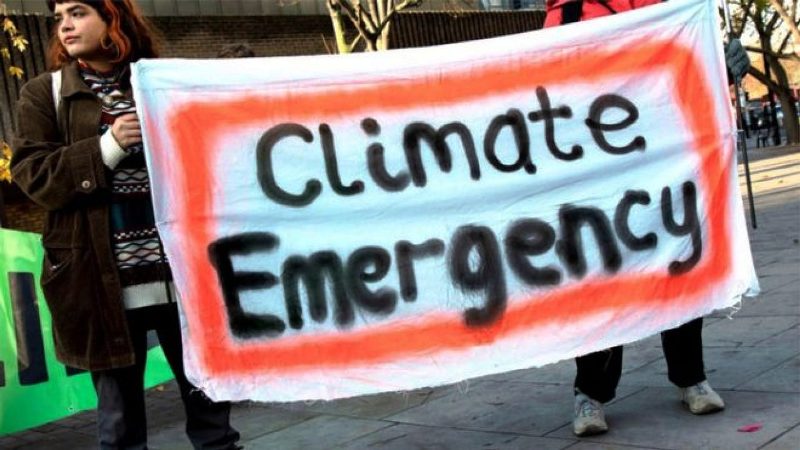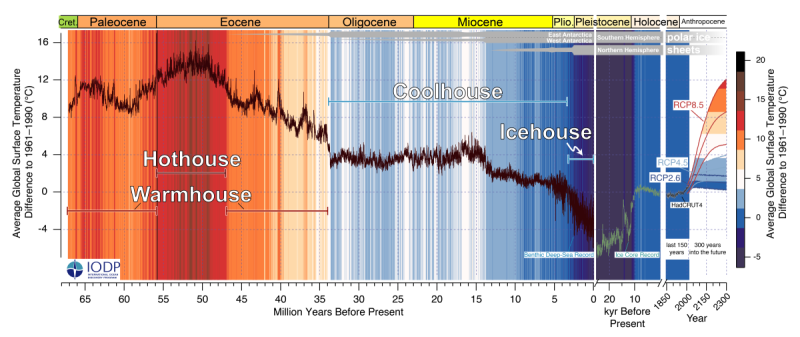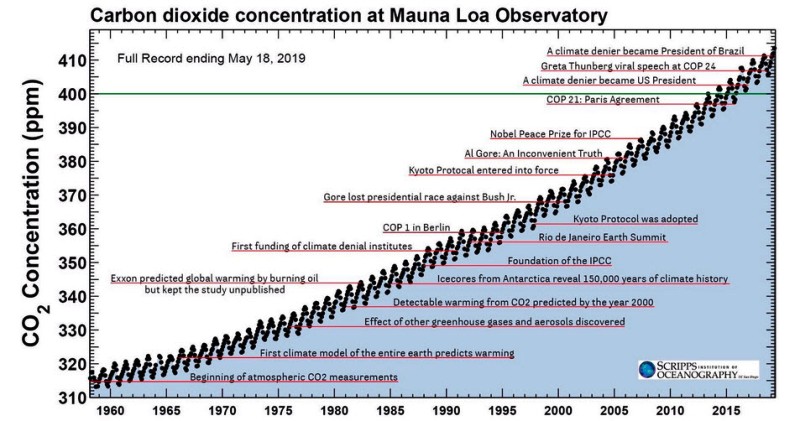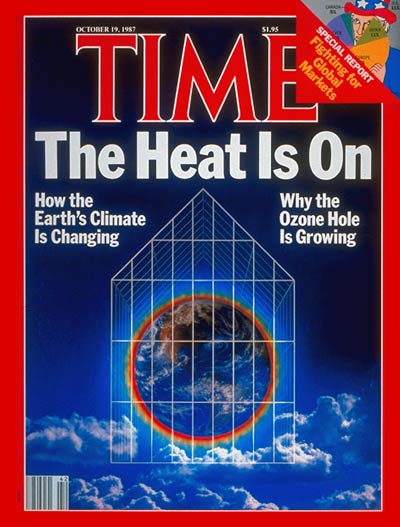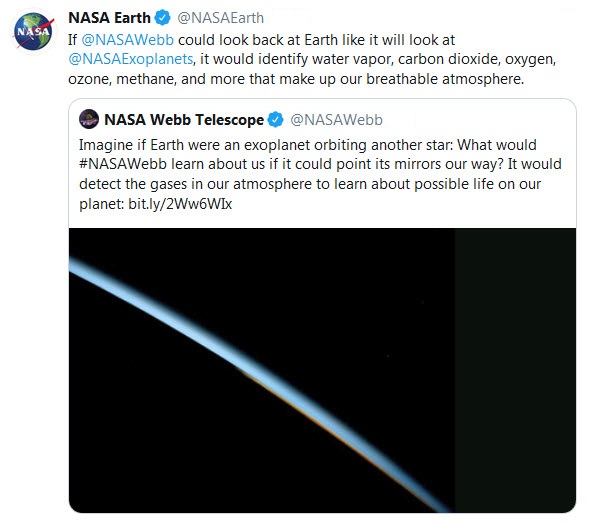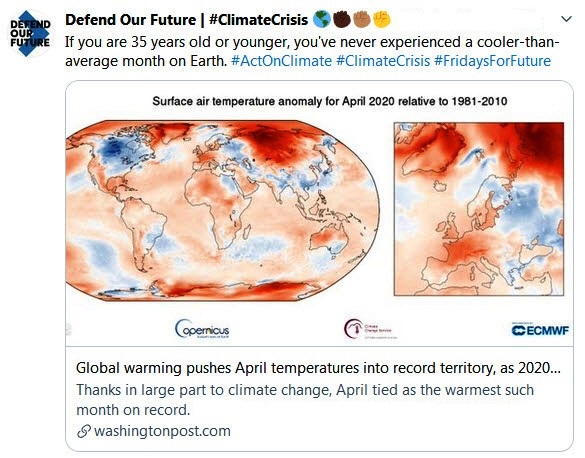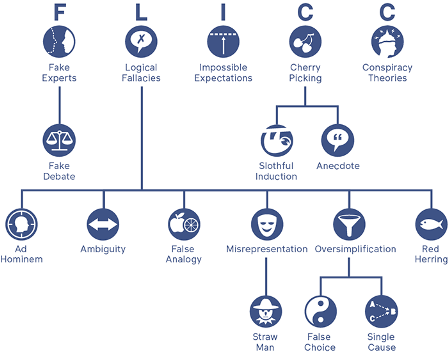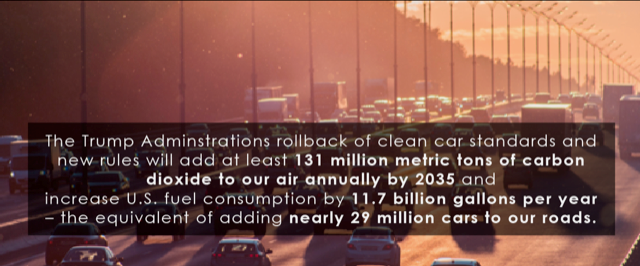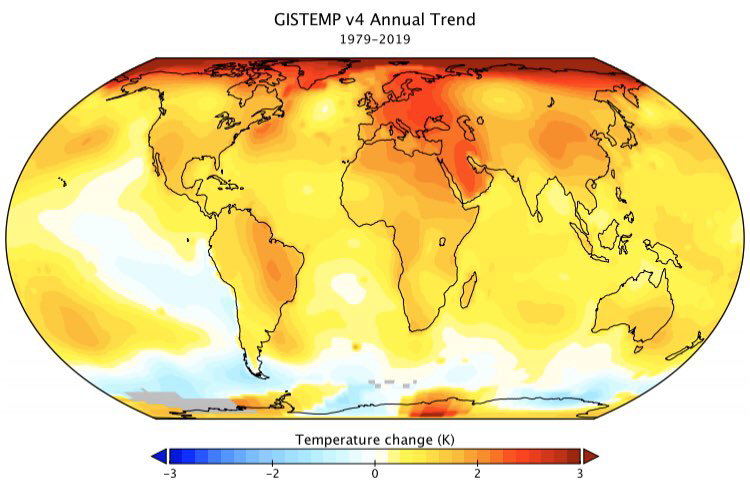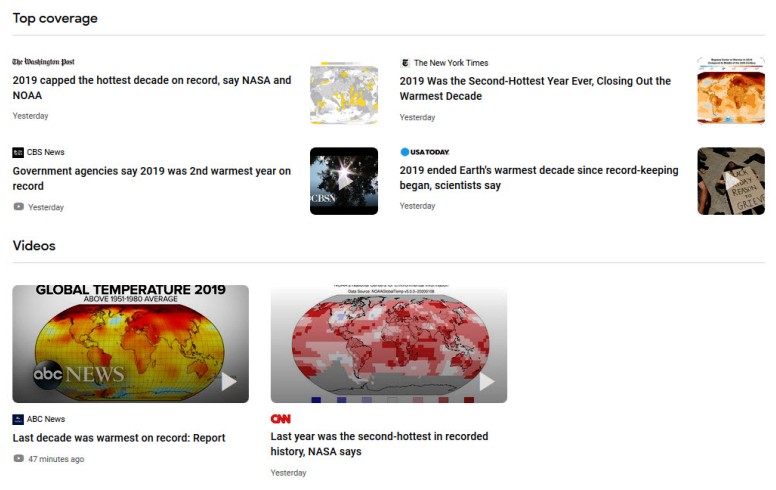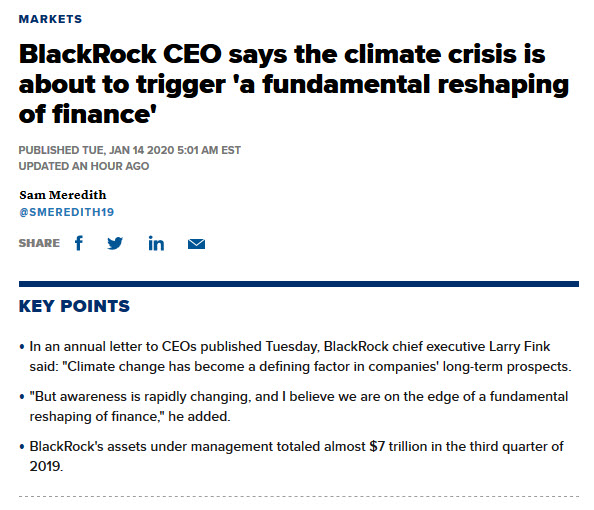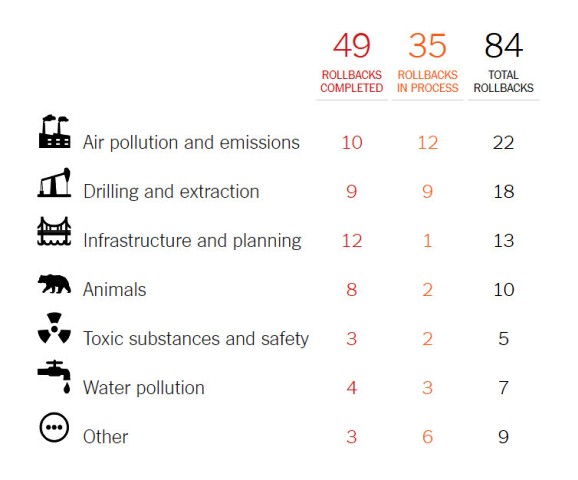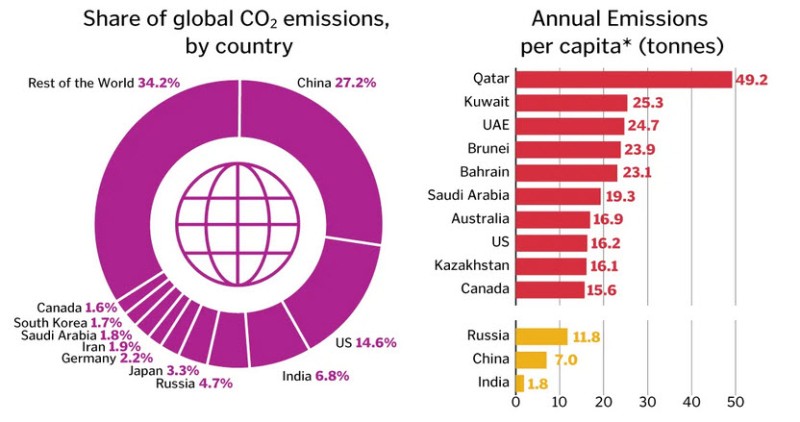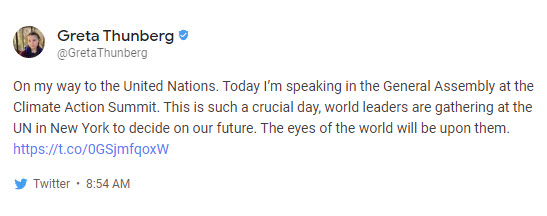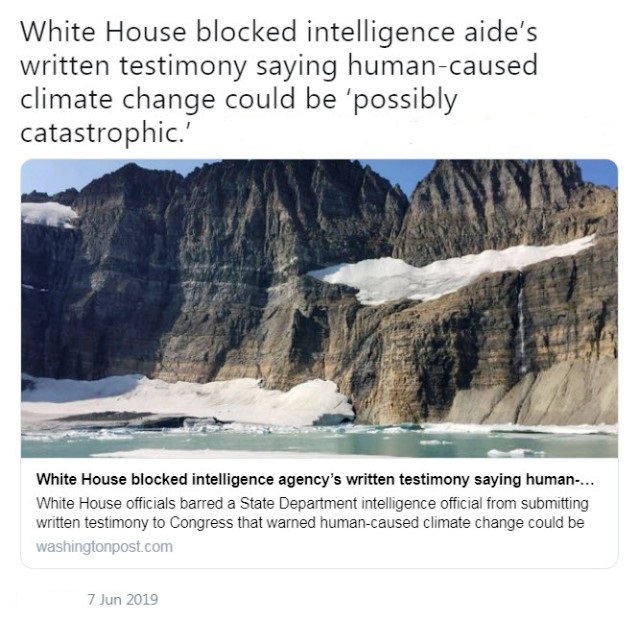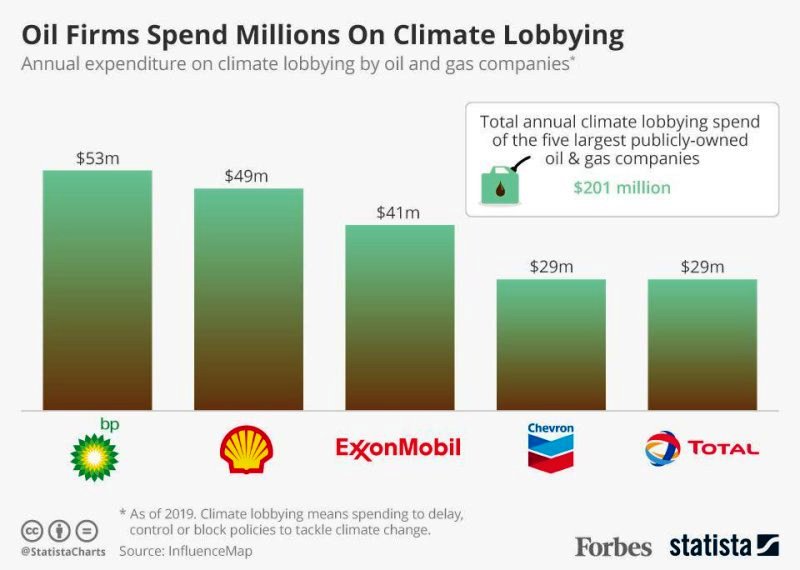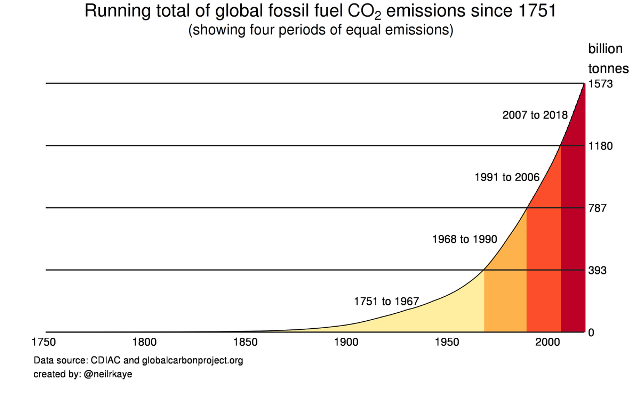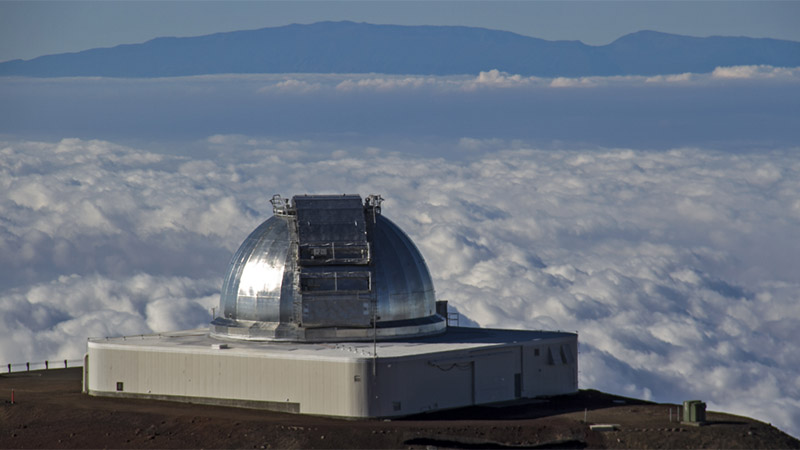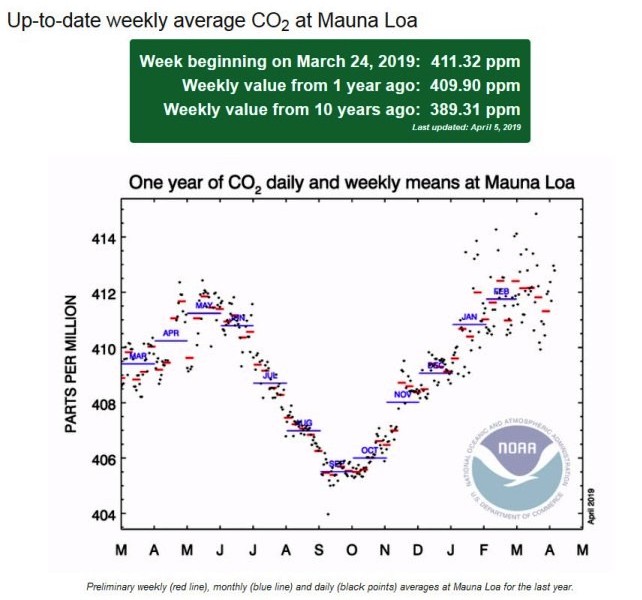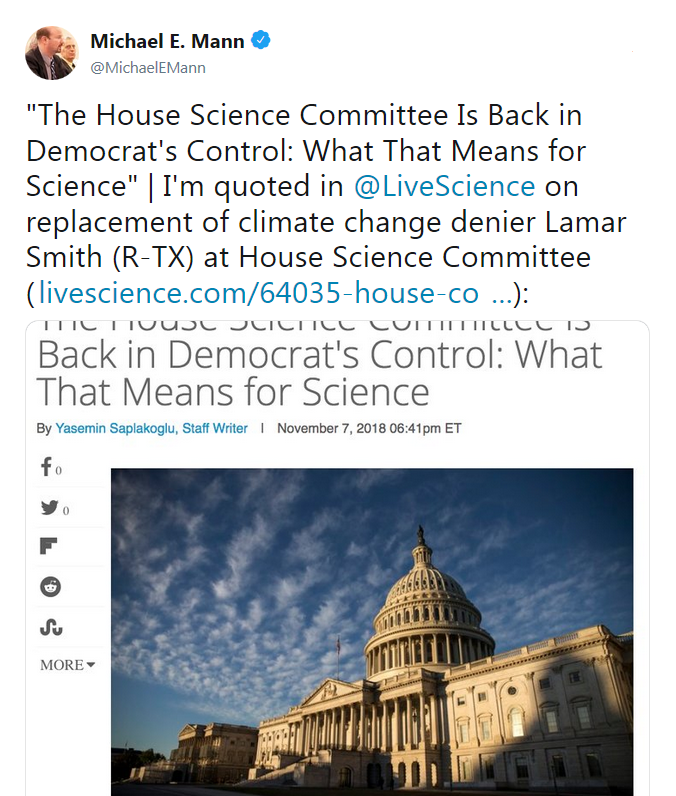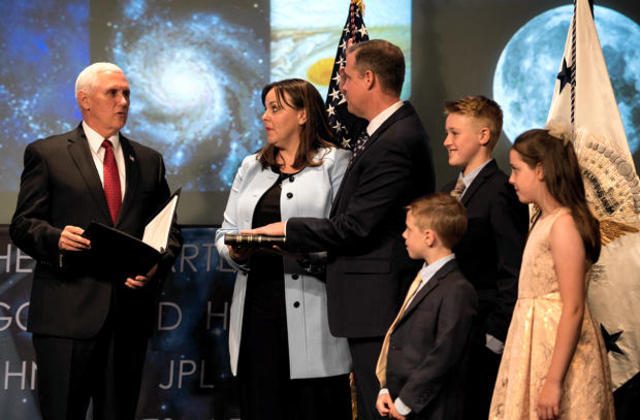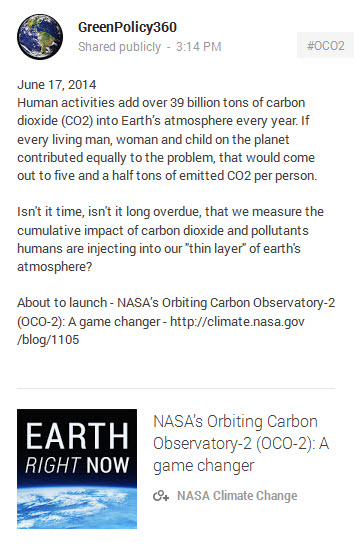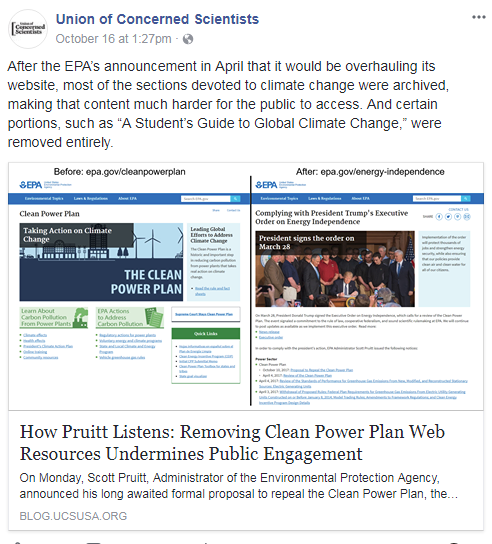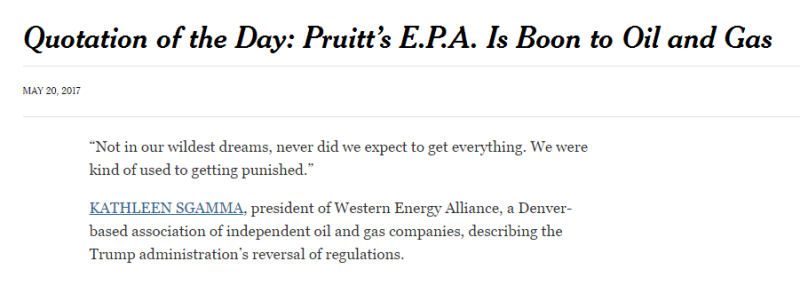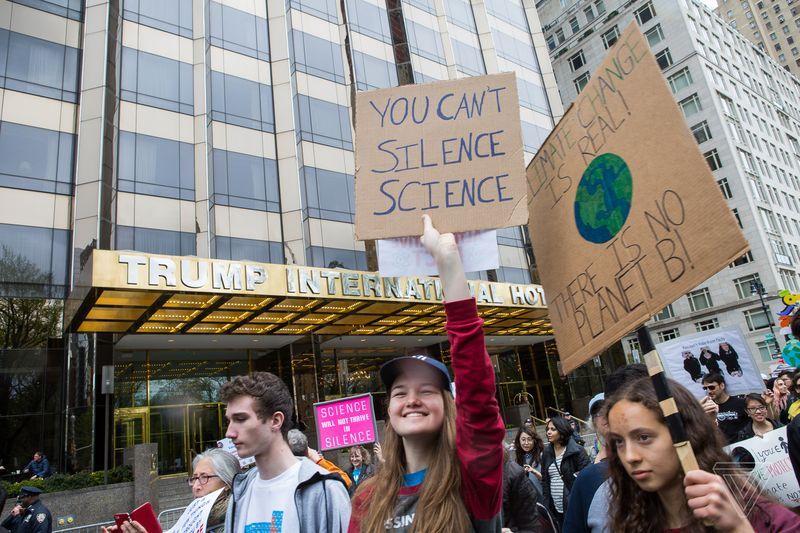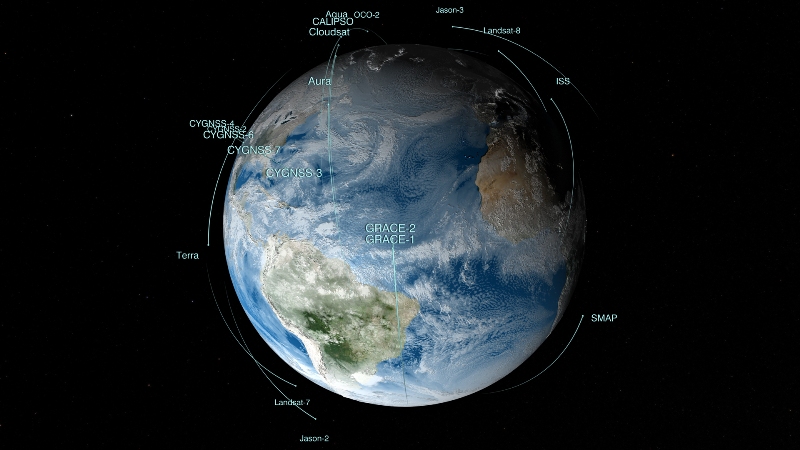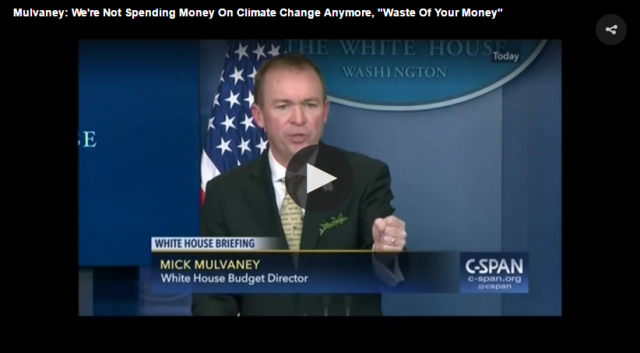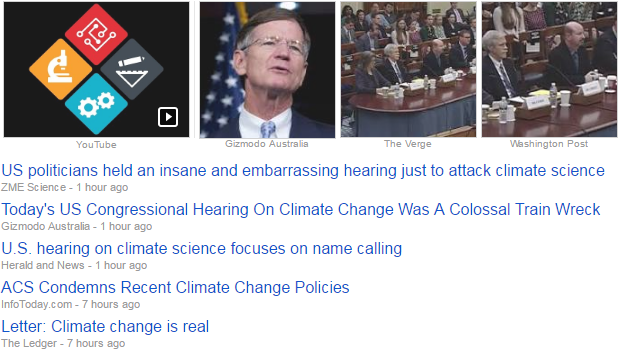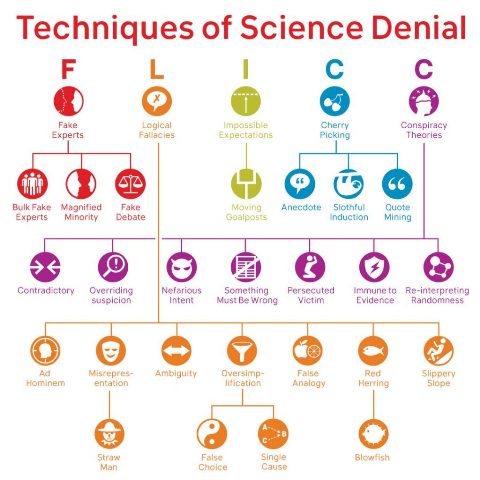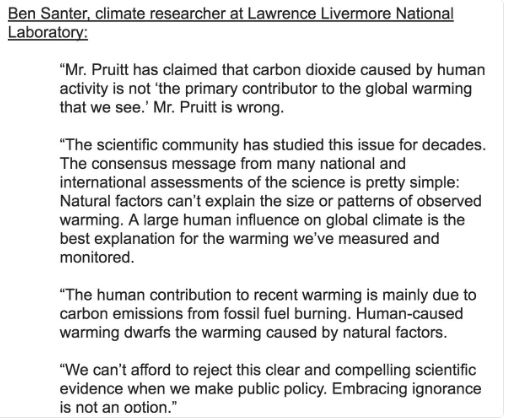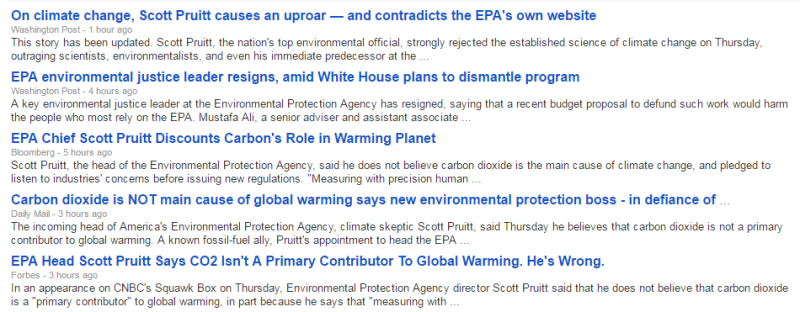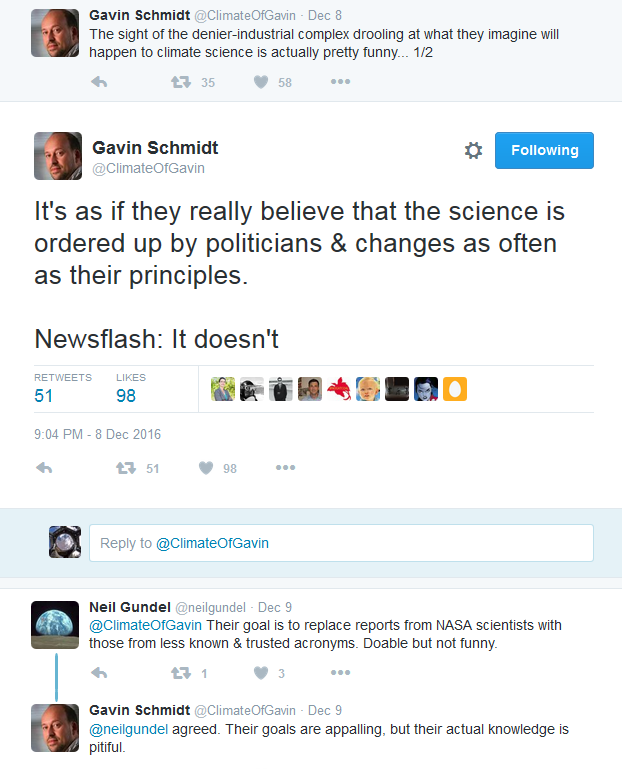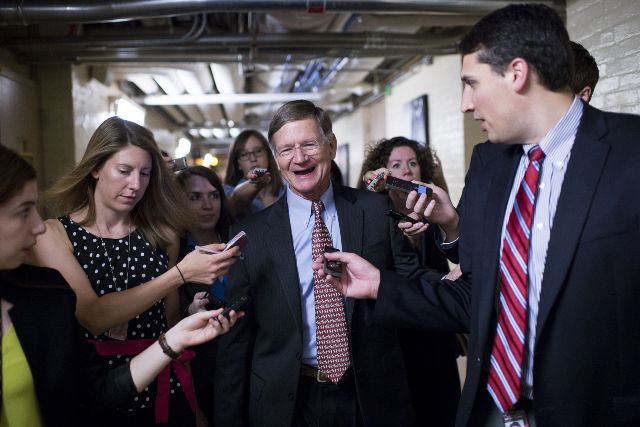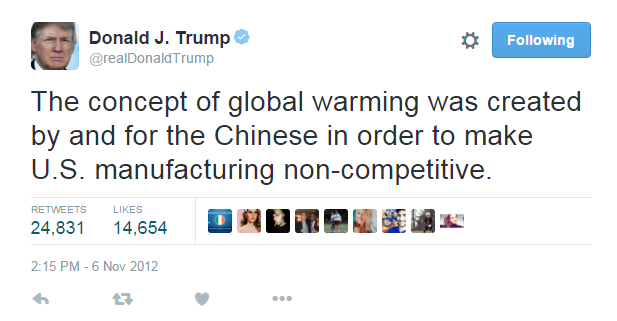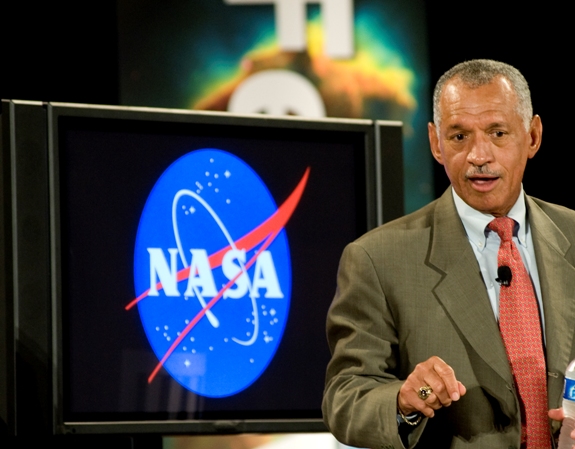Earth and Space, Politics
Astronaut Pesquet: When you look at the Earth from the space station, it's absolutely magical. You're not that far away, so you still have a relatively close-up view. But you can see the curvature and you see the atmosphere. It glows in blue. It is absolutely breathtaking the first time you see it. It's the most beautiful scenery you could possibly imagine.
When you're on the Earth, you feel that everything is so vast, everything is endless. You have a hard time understanding how limited we are. Then, when you take a step back and you see the Earth in its entirety, you suddenly understand that we live in an oasis in the cosmos. All around us is nothing, no life, blackness, emptiness, absolutely nothing -- apart from this blue ball with everything we need to sustain human life, and life in general, which is absolutely fragile.
It makes you want to cherish the Earth and protect it, the more you see it from space.
Planet Citizen Vision of Living Earth
GreenPolicy360: The following Earth and Space, Politics page is presented in two parts: 1) first an introduction to Earth and Climate science, and how we have watched and participated in this 'first generation' work over the years. We give special attention to the original NASA Mission Statement as a key to understanding how science/imaging/data from Landsat and successive generation of satellite programs were pushed forward to 'measure, monitor and manage' Earth's living and changing systems. Read the story of a unique Congressional leader, visionary 'Big Science' George E. Brown and linked Earth Science source material offered throughout GreenPolicy360. Experience through our eyes how a generation first became aware of environmental issues, the climate crisis, and then worked over decades to understand and protect Planet Earth; 2) then, as you continue here, take some to consider our highlights of latest Planet Citizen news, stories, and events arranged yearly and monthly. We're all riding together here on Planet Earth, partners!
Earth System Science | Earth Living Systems
The Original Mission Statement of NASA
Highlight of NASA's Mission -- “To understand and protect our home planet..."
GreenPolicy360 continues its campaign to restore the original Earth Sciences mission language into today's operating NASA Mission Statement.
Planet Citizens / Scientists, Preserving & Protecting the Home Planet Earth
- Earth Science Vital Signs @GreenPolicy360 and StrategicDemands
'Thin Blue': Look at how thin the Earth's atmosphere is...
NASA - Astronaut Reid Wiseman
* https://greenpolicy360.net/images/Reid_Wiseman_thinbluelayer_m.jpg
* https://pbs.twimg.com/media/BuDZa8ZCEAAJzmd.jpg:large
Monitoring CO2 in Earth's Atmosphere
Carbon Mapper
Have you ever wondered about the emissions, i.e. 'externalities', being injected into Earth's atmosphere?
Elevated Levels of Global Warming Greenhouse Gases
Efforts to scientifically ascertain and attribute mechanisms responsible for recent global warming and related climate changes on Earth have found that the main driver is elevated levels of greenhouse gases produced by human activities...
According to the Intergovernmental Panel on Climate Change (IPCC) in 2021, it is "unequivocal that human influence has warmed the atmosphere, ocean and land since pre-industrial times."
Studies on attribution have focused on changes observed during the period of instrumental temperature record, particularly in the last 50 years. This is the period when human activity has grown fastest and observations of the atmosphere above the surface have become available.
- Photo via @AstroSamantha
- "We have to identify the problem, then act in many ways to solve the problem. Global warming is the threat of our times."
- "We’re going to need to use every tool in the toolbox if we’re going to solve this problem."
PlanetCitizen.org | PlanetCitizens.org
Pressuring Nations to Step Up, Cooperate, and Make a Positive Difference
Nationally Determined Contributions (NDC) Tracking
- Measuring and Monitoring Climate Plans & Climate Actions
- 'Talking the Talk and/or Walking the Walk'
As of 2024, On the Road and echoes of the first National Climate Act in 1978
Congressman George E. Brown and the initial decades of US Earth Science from Space
"Earth Observing System": Decades of Earth Science/Climate Science Data Accessible for Planet Citizen Action
🌎
GreenPolicy360's Campaign to 'Turn National Climate Promises & Pledges into Reality' (2021)
- Our Climate Plans Enforcement Initiative continues as the next Global Climate Conference approaches, November's Conference of the Parties (COP27)
- Drawing from the database of Earth Science resulting from decades of space-based missions designed to provide us with actionable 'Earth-system and Climate-related data'
- Measuring and Monitoring to better manage Earth's Living, Dynamic and Changing Systems, Local, National and Global
Methods to Enforce Climate Plan Pledges
GreenPolicy360: Climate Plans Enforcement Initiative
Pressuring Nations to Step Up, Cooperate, and Act Now
Environmental Laws, Regs, Rules... Lawsuits & Legal Actions
Glasgow (2021) & Paris (2015) Summits: Int'l Climate Plan Pledges & Promises (INDCs-NDCs)
Data Tracking the Climate Actions of Nations, 2015 on...
🌎
Countries with Largest CO2 Emissions
- ················································································
Earth, Science & Politics:
- Planet Citizens, Planet Scientists
🌎
Driving Up There, From Down Here
NASA
Troposphere - https://en.wikipedia.org/wiki/Troposphere
- Stratosphere - https://en.wikipedia.org/wiki/Stratosphere
- Kármán line - https://en.wikipedia.org/wiki/K%C3%A1rm%C3%A1n_line
- Earth's Atmospheric Layers - https://www.nasa.gov/mission_pages/sunearth/science/atmosphere-layers2.html
- GreenPolicy360:
- Covering 50+ Years of Climate Science
SJS/GreenPolicy360: The science is saying that humanity is facing a #ClimateCrisis.
- NOW is the time to act to make a difference in our common future. "Each of us can make a positive difference by stepping up & doing our best."
- * https://www.greenpolicy360.net/w/George_E._Brown_Jr
- * https://www.greenpolicy360.net/w/File:US_Public_Law_95-367.png
·····················································································
"There is a near-linear relationship between cumulative anthropogenic CO2 emissions and the global warming they cause."
Copernicus Programme - Climate Change Service
Authoritative information about the past, present and future climate, as well as tools to enable climate change mitigation and adaptation strategies by policy makers and businesses.
- ·······························································
- https://www.greenpolicy360.net/w/File:Good_science_needs_good_data_.png | GreenPolicy360, Facts & Data
- https://www.greenpolicy360.net/w/Stats_-_Green_Research_%26_Science | GreenPolicy360, Our Policy on Science
- https://www.greenpolicy360.net/w/Climate_Change_-_Global_Warming_Keyword-Terms | Global Climate Keywords
·····································
Facts Count
🌎
GreenPolicy360: We're Into Earth Science
- We believe in 'critical thinking skills'
🌎
Climate of Deception: How Viral Misinformation Fuels the Climate Emergency
- https://www.greenpolicy360.net/w/Merchants_of_Doubt | Merchants of Doubt
- https://www.greenpolicy360.net/w/File:Science_denial_graph.jpg | Techniques of Science Denial (Graph)
- https://www.greenpolicy360.net/w/File:FLICC_techniques_of_science_denial.png | Techniques of Science Denial (Video)
- http://www.nature.com/news/wikipedia-shapes-language-in-science-papers-1.22656 | Wiki Community Science
🌎
Set in Motion with "Measure-to-Manage" Earth Science Missions in the 1970s
"Good science needs good data"
Good data and accurate facts, measuring and monitoring, and sound science are the way to go -- if one expects to get to where one is intending to go.
The facts of #EarthScience ... data, measurements and monitoring ... and a climate action agenda by #PlanetCitizens making a positive difference
🌎
We all play a role in the unfolding story
- GreenPolicy360: We are now putting forward a proposal to restore the Earth Science provisions to the Mission Statement of NASA
>“To understand and protect our home planet; to explore the universe and search for life; to inspire the next generation of explorers ...”
>In February 2006, the phrase "to understand and protect the home planet" was quietly removed from the National Aeronautics and Space Administration (NASA)'s official mission statement.
In a way we are 'bit players' in a larger game-on-earth...
Advancing an Intergenerational Science Mission
Earth Right Now -- the Earth System Observatory
🌎
'Eco' Envisioning, a 360 Whole Earth Perspective
🌐 Beginnings of the Earth Systems Science Mission and Launch of Earth Observation Satellites in the 1970s/80s
🌐 Digitally Measuring & Monitoring Planet Earth to Provide Databases of Knowledge for Environmental Management & Protection
🌍
The Vision: Environmental Protection, Earth Science, Education, Energy in Action
"Memories on the Road to the First "Earth Day"
By Steve Schmidt / GreenPolicy360 Siterunner
"Beginnings of the Modern Environmental movement"
1969: Attempting to Turn from War to Peace
Recalling 'Calls to Action' alongside George E. Brown, 1969-70
GreenPolicy360 Founder Steve Schmidt & Rep. George E. Brown
2023: A PBS 'American Experience' Special Television Event
In the “Movement and the Madman” 2023 documentary, PBS reveals the how close the U.S. came to using nuclear weapons in Vietnam.
Daniel Ellsberg in his book, 'Doomsday Machine, Confessions of a Nuclear War Planner’ recalls the Vietnam Moratorium Peace demonstrations of October and November 1969 — and with National Security Council senior staff interviews now, decades later, PBS retells how close we and the world came to nuclear war.
GreenPolicy360's founder-siterunner at that time was a student and a coordinator of the Vietnam Moratorium Committee.
Steve Schmidt became a source of information for the PBS film and, pointing to Daniel Ellsberg and Roger Morris as first-hand source accounts, helped to guide the documentary producers to revealing moments of history here:
The Movement and the Madman - PBS - March 2023
- https://www.greenpolicy360.net/w/The_Movement_and_the_Madman_-_PBS_-_March_2023
- https://www.greenpolicy360.net/w/Surviving_Victory:_Security_Priorities
- https://www.greenpolicy360.net/w/Vietnam_Moratorium_for_Peace_1969-1970
🌍
"Your Moment on Earth Planet Citizen"
🌍
31 Vital Earth Signs
'Virtual signs' worsening
Tipping points, deepening disaster
Researchers, part of a group of more than 14,000 scientists who have signed on to an initiative declaring a worldwide climate emergency, said that governments had consistently failed to address the root cause of climate change: "the overexploitation of the Earth".
Of 31 "vital signs"—key metrics of planetary health that include greenhouse gas emissions, glacier thickness, sea-ice extent and deforestation—they found that 18 hit record highs or lows.
🌎
"Our loyalties are to the species and the planet. We speak for Earth...
Our obligation to survive is owed not just to ourselves but also to that Cosmos, ancient and vast, from which we spring."
-- Carl Sagan, Cosmos
2024
November
November 6, 2024
Donald Trump Elected US President: Election Will Bring Far-Reaching Change
············································································································································
Beyond the U.S. politics and the presidential election on the fifth of November, a day that will be remembered, is the physics of nature, the dynamic, changing interactions between human systems and natural systems. Planet Earth as it moves in space and time will be around long after politics... and yes, remember, now and in the immediate future, 'Earth is in human hands'...
November 4, 2024
Michael E. Mann, as quoted in a Forbes interview on what’s at stake in the U.S. election
How significant is the outcome of the presidential election for the climate?
I'll be blunt. This upcoming election is a critical juncture where Americans will choose one of two paths, and the difference between those two paths couldn't be more stark. One of those paths, represented by Donald Trump and the Republican Party, involves basically abandoning the efforts that we've already made here in the United States to tackle the climate crisis. That includes dismantling the EPA, getting rid of the National Oceanographic and Atmospheric Administration, which of course runs the National Hurricane Center and the hurricane hunters that make the measurements fly, take their lives, put their lives at risk of flying into hurricanes to make critical measurements that are fed into our models so we can better predict the intensification and the paths of these dangerous storms. It would abandon all that.
But fundamentally it would abandon our commitment to the rest of the world to lead on this issue, to reduce our carbon emissions, to incentivize a shift away from fossil fuels, it would seek to, for example, deactivate the Inflation Reduction Act, which was landmark legislation passed by the Biden Administration, or signed by Joe Biden passed by Congress, the provisions of which have the potential to lower our carbon emissions here in the United States by 40% by 2030. It's not enough. We need to do even more. We need to build on that, but it puts us on the right path.
What are the international implications?
You have on the one hand a Republican party and their presidential nominee Donald Trump, who would in essence end any US leadership on climate. And in the absence of US leadership, we are the world's largest legacy carbon polluter. We have to display moral leadership if we can expect the rest of the world to come to the table, other industrializing nations, China, India, etcetera. And what we know is that when we do take leadership, as we did during the Obama administration and again during the Biden administration, then those other countries come to the table and we begin to forge a path forward to truly take the actions necessary to avert catastrophic warming.
We're at 1.2 [degrees] Celsius warming now. At 1.5 Celsius, 3 Fahrenheit, we will start to see far worse consequences than those that we're already seeing, and we're already seeing dangerous climate change. Just in the last month or so with Hurricane Helene and Hurricane Milton, these are storms that were amplified. They were more intense. They produced greater amounts of flooding rains that in one case killed hundreds of people. We are witnessing the devastating consequences of human-caused climate change. And if we don't take action now and prevent warming of 1.5 [degrees] Celsius, we're already at 1.2. There isn't a whole lot of wiggle room. What it basically means is we've got to ramp carbon emissions down dramatically over the next decade, and bring them down to zero mid-century. The only hope to do that would be to build on the policies that were put in place by the Biden administration.
So that's where we stand. We have a monumental choice before us. It's not getting, in my view, as much coverage as it ought to in the US media because wow, there are so many crises. We face public health crises, international security, crises, wars, et cetera. If we don't act now on the climate crisis, there's no going back. We lock in truly dangerous and deadly consequences for decades to come. And so that's where we are at this very critical juncture.
October
The Outcome of the US 2024 Election -- and Potential for a Planetary Threat
Michael E. Mann
Project 2025.... would put an end to US climate action at this critical moment.
The energy and environmental provisions of Project 2025 were effectively written by polluters, with front groups such as the Koch-funded “Competitive Enterprise Institute” and “Heartland Institute” playing a key role in drafting the report. They are seeking to dismantle climate policy in the US through a combination of executive actions, such as the elimination of federal agencies with oversight over energy and environmental policy, and legislative actions.
Project 2025 would gut the EPA, which is responsible for enforcement of environmental policies, and it would reverse the EPA’s 2009 “endangerment finding” that classified carbon dioxide as a pollutant to be regulated under the Clean Air Act. It would eliminate the National Oceanic and Atmospheric Administration (NOAA), which monitors changes in our atmosphere, oceans and climate. Project 2025 would eliminate clean energy loan programs at the Department of Energy and remove climate change—one of the greatest national security threats we face—from the National Security Council agenda. It supports more oil drilling in the environmentally sensitive Arctic and asserts that the government has an “obligation to develop vast oil and gas and coal resources.”
Perhaps most problematic, Project 2025 would repeal the Inflation Reduction Act (IRA), the single most substantial piece of climate legislation in US history. Passed with a tie-breaking vote from current Democratic presidential nominee Vice President Kamala Harris and 50 Senate democrats but not a single Republican, the IRA provides $370 billion of investment in clean energy infrastructure. Independent experts have estimated that it will greatly accelerate the transition from fossil fuels to renewable energy, leading to an estimated 40 percent reduction in US carbon emissions by 2030.
GreenPolicy360: The message here of Dr. Mann, the presidential distinguished professor and director of the Center for Science, Sustainability and Media at The University of Pennsylvania should be at the forefront of Us presidential and congressional election. The choice being made is one that will directly and lastingly effect all in the nation and quality of life across the planet. The challenge is a generational challenge. The science is a guide. The choice of direction taken is in human hands.
🌎
Hurricane Milton, Measured & Monitored, in Memory of a Hurricane Hunter
In the Gulf of Mexico the Climate-Induced Warming Waters Supercharge Hurricanes, NOAA Knows
🌎
Hurricane Helene Devastates Southeast, Impacts NOAA NCEI Headquarters
National Centers for Environmental Information
NCEI headquarters in Asheville, NC, has been severely impacted by Hurricane Helene. First and foremost, we’re grateful to report that all of our employees and staff have been accounted for. All data holdings–including paper and film records–are also safe.
The scale of destruction and impact Helene has had across the Southeast, especially on its people, has been massive, and we stand in solidarity with all who are suffering. We also want to express our deepest gratitude towards those who have reached out with support, and encourage all to keep expressing their support now and in the future. The road to recovery for the entire region will be a long one, and one we will be traveling as well, both as people and as an international data center focused on meeting the data information needs of those we serve.
All of the employees located at the North Carolina NCEI site also express how proud of and thankful we are for the 300 NCEI employees in Colorado, Maryland, Mississippi and around the country for their care, support and professionalism helping us recover. Our team is truly unmatched.
Now to more formal updates on NCEI’s functionality–here is what we know:
NCEI’s network service provider has limited functionality and there is no definitive timeline for when it will be fully operational.
All archived data at NCEI is currently inaccessible, and limited new data is being ingested. We are working with our partners to minimize the risk of any potential data loss; however, Helene has made many key products and services unavailable at this time.
Products impacted include access to NCEI’s weather and climate data. NCEI’s monthly State of the Climate reports and data will be be delayed until services are restored, which means the September 2024 U.S. and global climate reports, originally scheduled to be released on October 8 and 10 respectively, will be unable to meet this deadline. At this time, we do not have more specifics on when they might be available.
September
Diplomacy Watch: Russian media in eye of the storm | Responsible Statecraft
Facebook, Instagram, and WhatsApp owner Meta said that it was going to ban a number of Russian state media outlets, including RT (formerly Russia Today).
“After careful consideration, we expanded our ongoing enforcement against Russian state media outlets: Rossiya Segodnya, RT and other related entities are now banned from our apps globally for foreign interference activity,” Meta saidin a statement.
This occurs just days after the Biden administration announced sanctionsagainst RT. United States Secretary of State, Antony Blinken said that Russian media entities “are no longer merely fire hoses of Russian propaganda and disinformation. They are engaged in covert influence activities aimed at undermining American elections and democracies, functioning like a de facto arm of Russia’s intelligence apparatus.”
In its own statement, the State Department said “The United States supports the free flow of information. We are not taking action against these entities and individuals for the content of their reporting, or even the disinformation they create and spread publicly. We are taking action against them for their covert influence activities.”
More re: Geopolitics, Democracy, Networking, Media, Internet, Disinformation, Fact Checking
- https://www.greenpolicy360.net/w/In_Defense_of_Democracy_and_Freedom
- https://greenpolicy360.net/w/Category:Democracy
- https://www.greenpolicy360.net/w/Category:Internet
- https://www.greenpolicy360.net/w/Category:Media
- https://www.greenpolicy360.net/w/Category:Networking
- https://greenpolicy360.net/w/Fact_Checking,_Facts_Count
- https://greenpolicy360.net/w/Fact_Checking
- https://greenpolicy360.net/w/Disinformation_-_Online_-_Dangerous
Visit GreenPolicy360's associate, Strategic Demands / StratDem
August
The coming era of unlimited — and free — clean energy
Via The Washington Post
Futurist Ray Kurzweil notes that solar power has been doubling every two years for the past 30 years — as costs have been dropping. He says solar energy is only six doublings — or less than 14 years — away from meeting 100 percent of today’s energy needs. Energy usage will keep increasing, so this is a moving target. But, by Kurzweil’s estimates, inexpensive renewable sources will provide more energy than the world needs in less than 20 years. Even then, we will be using only one part in 10,000 of the sunlight that falls on the Earth. ...
We are surely heading into the era of abundance that Peter Diamandis has written about — the era when the basic needs of humanity are met through advancing technologies. The challenge for mankind will be to share this abundance, ensuring that these technologies make the world a better place.
·········································
Mapping the Forests from Satellites
- Turning the Data into Actionable Forest Management & Repleneshment
- Yes, Planting Trees Is a Smart Eco-Strategy for Now & Tomorrow
'Nature Climate Change Journal'
Scientific study suggests that reforestation in developing countries can sequester up to ten times more carbon at lower costs than previously estimated.
The research advocates for a balanced approach using both natural regeneration and tree planting to optimize carbon capture. Economic incentives like carbon payments and timber sales can further enhance the viability of these reforestation efforts.
Beyond Expectations: Reforestation Can Remove 10x More CO2 From the Atmosphere Than Previously Estimated...
July
U.S. Senators Move to Pass Legislation Clarifying Executive Agencies Powers to Regulate Congressional Laws
SCOTUS activism to limit scope of EPA and other agencies, forcing legislative committee reworking of statute drafting and bill 'specifics' now meets political gridlock
Senate rules, blocking maneuvers, filibustering, need for increased committee markups, timelines and budgets (i.e. SCOTUS-ordered lawmaking process changes) now all come into play
Republicans and Democrats are pushing competing legislation as a result of the Supreme Court’s decision to overturn thee "Chevron" case deference earlier this month.
Sen. Bill Cassidy (R-La.) became the latest GOP lawmaker seeking to compel the Biden administration to rein in its rulemaking, while Sen. Elizabeth Warren (D-Mass.) is leading an effort that would codify the high court’s previous decades-old precedent.
The new bills, released Tuesday, are part of among members of both parties in response to the ruling. A majority of justices said courts no longer had to give agencies deference when interpreting ambiguous laws.
🌎
DSCOVR:EPIC
GreenPolicy360: "Moon Transit" as rendered by NASA's DSCOVR:EPIC. There we are and the Earth's moon in a sequence of images scanned from space, then digitally delivered into a database to have its numbers, pixels, 'crunched'.
Today, this DSCOVR:EPIC process is bringing to mind another deep imaging, a scanning and scraping system that's referred to as Large Language Model (LLM) deep learning.
Who's being observed? We are... yes, our site's been imaged and captured by remote scanning bots and our 50+ years of Earth and Space, Politics and our network of pages and content ranging over the history of the environmental movement are now in databases worldwide.
We're open access creative commons and so, as we've rolled, we've been freely sharing since AI came along and began arriving to take us up. Now, we're being 'repackaged' and delivered to digital systems 360. We're sort of an extension to online ChatGPTs
We think of our curated contributions as Green Education with verve.
What a journey it's been, what a tech trip it is ;-
June
June 7, 2024 ... In Memory of Astronaut William Anders
Associated Press / Former astronaut William Anders, who took iconic Earthrise photo, killed in Washington plane crash
🌎
- Apollo 8 Earthrise Photos
- December 1968
- Apollo 8's View of Earth on December 24, 1968
December 21, 1968 ... Apollo 8 launches from the Kennedy Space Center, the first humans on the way to the Moon --- and a vision looking back at home that empowered the modern environmental movement.
Apollo's mission? To explore the Moon in preparation for a Moon landing. A surprise comes into view as the spaceship circles the Moon. A window view, Whole Earth awareness of ourselves as #PlanetCitizens. "Earthrise" ... a profound image, first by human hands taken of our home planet. We see our #PlanetEarth with new born eyes ...
• http://www.youtube.com/embed/dE-vOscpiNc
• http://www.abc.net.au/science/moon/earthrise.htm
• http://www.greenpolicy360.net/w/File:Apollo_8,_Life_Jan10,1969.png
- Aboard Apollo, December 24, 1968...
As the spaceship swings around the Moon...
unexpectedly the Earth rises in the Apollo ship's window and the astronauts are amazed at what is coming into view...
Astronaut Bill Anders is the first to see the Earth...
·········································································
Anders: "Oh, my God, look at that picture over there," he can be heard saying. "There's the Earth coming up. Wow, is that pretty!"
What happened next will sound familiar to anyone who remembers the days before digital cameras:
Anders (to astronaut Jim Lovell): "You got a color film, Jim? Hand me a roll of color, quick, would you?"
Lovell: "Oh, man, that's great! Where is it?"
Anders: "Hurry. Quick."
Lovell: "Down here?"
Anders: "Just grab me a color. A color exterior. Hurry up. Got one?"
Lovell: "Yeah, I'm lookin' for one. C368."
Anders: "Anything quick."
Lovell hands him the film just as Anders is heard saying, "I think we missed it."
But within seconds, Lovell sees the shot again in another window of the command module. He asks for the camera from Anders, who seems a bit defensive at having his role as mission photographer usurped.
Anders: "Wait a minute, just let me get the right setting here now, just calm down. Calm down, Lovell!"
Anders then gets the shot that has been reproduced innumerable times all over the world...
Changing forever humanity's vision of ourselves, of who we are
🌎
May
Earth Day is every day... & every day is Earth Day
April 22, 2024
Personal Memories on the Road to the First Earth Day
PlanetCitizen.org / Earth System Science / Measuring "Vital Signs"
🌎
Intended to Determined, INDCs to NDCs
- Determined to Enforced
- Making National Climate Plans Reality
We Are Generation Green, Going Green (and It's No Easy Ride)
Generation Green | Going Green
February 2024
How the U.S. Became the World’s Biggest Gas Supplier
Via the NY Times
In just eight years, the United States has rocketed from barely selling any gas overseas to becoming the world’s No. 1 supplier, a remarkable shift that has profited oil and gas companies and strengthened American influence abroad...
America’s gas export boom initially caught many policymakers by surprise. In the early 2000s, natural gas was relatively scarce at home, and companies were spending billions of dollars to build terminals to import gas from places like Qatar and Australia.
Fracking changed all that. In the mid-2000s, U.S. drillers perfected methods to unlock vast reserves of cheap natural gas from shale rock. At the same time, natural gas prices began spiking elsewhere in the world, especially after Japan shut down its nuclear plants in the wake of the Fukushima reactor meltdown in 2011 and began demanding more fuel.
That led to a stunning reversal. American companies, led by Cheniere Energy, began spending billions more to convert import terminals into export terminals, and shipments of U.S. gas to other countries began to surge.
“It comes down to economics,” said Kenneth Medlock, senior director at the Center for Energy Studies at Rice University. “Production just keeps growing in the United States, which keeps prices low. And then we keep seeing major demand growth in the rest of the world.”
The export boom has transformed America’s role in energy geopolitics.
Europe has become the biggest importer of American gas in recent years, enabling the continent to slash by more than half its reliance on Russian gas since Russia’s invasion of Ukraine in 2022.
In the future, Europe is expected to curb its appetite for gas by adding more renewable energy sources like wind and solar power. The main growth markets for natural gas are expected to be fast-growing Asian countries such as China, India, Pakistan, Bangladesh and Vietnam that want to use the fuel for electricity, heating or industrial purposes.
January 2024
Green Solutions for Businesses with a Net Zero Energy Policy
Managing to Avoid 'Tipping Points'
Harmful tipping points in the natural world pose some of the gravest threats faced by humanity. Their triggering will severely damage our planet’s life-support systems and threaten the stability of our societies.
Planet Citizen Vision of Living Earth
GreenPolicy360 Page Highlights
Planet Citizens
Time for Planet Citizen Action
A Call to Action to Preserve & Protect Life on Earth
It's your time to become a Planet Citizen
We believe 'Each of us can make a positive difference by stepping up & doing our best"
🌎
Earth System Science Is Green360
Follow Planet and Planet API
Follow GreenPolicy360, look back at 50+ years of Plant Citizen Earth Science
Earth Science Research from Space
Planet (PlanetLabs) continues to democratize space and deliver 'mission' data...
2023
December
Facts count
- December 21, 2023
- Washington Post Editorial Board:
- “The world’s democracies should create a system to fight back that can speak plainly and consistently about the inherent advantages of democratic systems, while admitting the imperfections, and use creative ways to illuminate the flaws and depredations of authoritarian regimes.”
🌎
It been said that the US "Inflation Reduction Act" is a "Green New Deal"
The world is facing a “pivotal moment” in the climate crisis, Kamala Harris has told the Cop28 summit after the US vowed to phase out coal plants and slash methane emissions, but also came under attack for meagre assistance to developing countries and for its own booming oil and gas extraction industry.
The US vice-president, deputising for Joe Biden – who skipped the UN climate talks – said Biden’s administration had made the “largest climate investment in the history of our country, and some have said the world” via the Inflation Reduction Act.
The world is badly off track in efforts to slow the climate crisis, however, and Harris warned of the dangers posed by opponents of climate action, which could be seen as a reference to Donald Trump, who is likely to be Biden and Harris’s electoral opponent next year.
“This is a pivotal moment – our action collectively, or worse our inaction, will impact billions of people for decades to come,” Harris told delegates, including dozens of world leaders, at the summit in the United Arab Emirates. “Around the world there are those who seek to slow or stop our progress. Leaders who deny climate science, delay climate action and spread misinformation" ...
○
November
Circa 2023, the 'Musk Controversy' Continues
- Elon Musk was once an environmental hero: is he still a rare green billionaire?
○
Newly Selected Speaker of the US House of Representatives Mike Johnson (R - Louisiana) moves His Agenda and His Party's Messaging
In "Letters from an American", the historian Heather Cox Richardson provides accounts and analysis of the state of US politics, focusing her work largely on democracy - and dangers to the Republic as the US is roiled by political forces. Today's online column by Richardson includes the following report on the new House leader's agenda, and clearly makes Green News for the Day:
- In the last two days, for example, the House has voted to slash 39% of the budget of the Environmental Protection Agency (EPA) and 13% of the budget of the National Park Service. It voted to require the Biden administration to advance oil drilling off the Alaska coast. It has voted on reducing the salary of the EPA administrator, the director of the Bureau of Land Management, and the Secretary of the Interior to $1 each.
- Yesterday, Johnson told reporters he considers extremists Marjorie Taylor Greene (R-GA) and Thomas Massie (R-KY) close friends and said “I don’t disagree with them on many issues and principles.”
- To direct his communications team, Johnson has tapped Raj Shah, a former executive from the Fox News Corporation, who was a key player in promoting the lie that Trump won the 2020 presidential election. As the head of the “Brand Protection Unit,” Shah demanded that the Fox News Channel continue to lie to viewers who would leave the station if it told the truth. Johnson has hired Shah to be his deputy chief of staff for communications and, according to Alex Isenstadt of Politico, “help run messaging for House Republicans.”
○
Dr. Carl Sagan, 1985
* https://www.greenpolicy360.net/w/File:Carl_Sagan,_1985.PNG
Remembering the early day of Earth/Climate Science
'Climate Change' used to be called 'Global Warming'
Global Warming -- from Steve Schmidt, GreenPolicy360, writing about the initial days of climate research, environmental laws, and activism:
In the mid-1960s, a man who was trained in science and physics, and who was an engineer who became a politician in East Los Angeles, California, explained to me that the health impacts of LA's smog was dire, especially for children. He went on to explain the air quality was not just a local problem that needed to be 'fixed' (the air pollution in Southern California was considered among the urban areas worst in the world), but that the larger questions of industrial pollution needed to be addressed. He said we needed science, a major scientific mobilization to provide the atmospheric science. Tools to use, data to guide our solutions to the adverse human impacts on the atmosphere essential to health and life. The man's name was George E. Brown. We became friends, then colleagues in our work. Our paths and politics intertwined, and our stories reveal elements of the green first generation environmental movement in action. George Brown played historic roles in advancing Earth science, climate change science, and Earth system, atmospheric science, coordinating and overseeing Earth science research from space with a constellation of NASA missions until George passed away in Washington DC in 1999.
Let's start here -- with George's life and work.
- https://www.greenpolicy360.net/w/Earth_Science_Vital_Signs
- https://www.greenpolicy360.net/w/Planet_Citizens,_Planet_Scientists
Advancing an Intergenerational Science Mission
Earth Right Now -- the Earth System Observatory
○
September
As the G20 Meets, the United Nations 'Urges' the "Top Economic Powers" of Our Planet's Economy to Change Direction
NEW DELHI (International News Services) -- U.N. Secretary-General António Guterres on Friday urged the Group of 20 top economic powers, which are responsible for more than 80% of the emissions that cause global warming, to use their weekend summit to send a strong message on climate change.
Guterres said all licensing or funding for new fossil fuel projects should be stopped and that the G20 must keep the “1.5-degree goal alive,” referring to the 2015 Paris climate agreement that set 1.5 degrees Celsius (2.7 degrees Fahrenheit) as a global guardrail in atmospheric warming, with countries pledging to try to prevent that much long-term warming if possible.
Earlier this year, the U.N. weather agency had said that there’s a two-out-of-three chance that the world will temporarily hit a key warming limit within the next five years.
July 2023 was Earth’s hottest month on record by a wide margin...
'Radical' Changes Needed Now
This means that every aspect of our societies needs to change to rein in rising temperatures.
This includes the way we make energy, the way we travel, work and produce food. Experts say this type of change needs governments to take the initiative and make sure that their climate actions aren't immediately nullified by other policies and investments.
"One could also see the call for system transformations as a recognition that, while we still can, we should take our destiny in our own hands," said Dr Richard Klein from the Stockholm Environment Institute, who was involved in the initial stages of the stocktake.
"Either we transform society in a way that avoids the worst of climate change, or climate change will transform society for us..."
- https://news.yahoo.com/un-global-stocktake-climate-change-191618644.html
- https://www.reuters.com/business/environment/what-is-worlds-first-global-stocktake-climate-change-2023-09-08/
- https://www.msn.com/en-xl/news/other/what-is-the-un-global-stocktake-and-how-will-it-help-countries-limit-global-warming/ar-AA1gjMxo
- https://www.sciencemediacentre.org/expert-reaction-to-un-global-stocktake/
- https://indianexpress.com/article/india/as-g20-drags-feet-uns-global-climate-stocktake-flags-large-deficits-8931143/
- https://www.rte.ie/news/world/2023/0909/1404345-world-leaders-gather-in-new-delhi-as-g20-summit-begins/
August 2023
Uh-Oh. Now What? Are We Acquiring the Data to Understand the Situation?
14 August 2023
James Hansen, Makiko Sato, Reto Ruedy
Abstract. Global temperature in June and July shot far above the prior records for those months for the 140 years of good instrumental data. Early indications are that warming exceeds expectation based on only the long-term trend due to increasing greenhouse gases (GHGs) plus the emerging El Nino. Three additional mechanisms will have a near-term effect, with a result that the 12-month mean global temperature likely will pierce the 1.5°C warming level before this time next year. Uncertainties in present analyses draw attention to the inadequacy of and the precarious state of crucial global observations...
GreenPolicy360 Siterunner: I tried/we tried to graph the data back in the 1970s and 80s, hiring numerous scientists including from the National Labs, in Sandia/Los Alamos and Livermore/Berkeley, physicists, engineers who began the original Earth Science missions to study, measure and monitor Earth's systems and 'vital signs'... A central task was digitize the data, 'quantify it', 'dynamically' over time, as if I had to teach it to young students (ala a famed CalTech professor, Richard Feynman)... the results of first-gen Earth Science/Envirionmental activistm fed into Federal science, space and technololgy com't work and educational institutions, NASA/NOAA/USGS data banks, and more... In the mid 1980s a Senate hearing hit the news with Jim Hansen and Carl Sagan's warnings standing out among media stories that brought public awareness of the Greenhouse Effect and global warming...
July 2023
July 24
GreenPolicy360: "It's a wild world" and when we sort through the news (however we get it), every day seems to get wilder and wilder...
Start here - with the latest from our TOO HOT page...
We are living through Earth’s hottest month on record, scientists say
It’s not just a record-hot day or two, unprecedented heat waves or abnormally warm ocean waters: All indications are that this will be the hottest single month on Earth on record, and possibly in more than 100,000 years. Every day this month has set records for average global annual temperatures, and already, 17 days in July have been hotter than any others in more than 40 years of global observations, climate scientists said.
Not even three weeks into the month, scientists’ declarations of an already assured monthly global record serve to punctuate what has been an onslaught of recent weather extremes.
Then there's this -- hotter...
The next United Nations international conference on climate change, COP28, will be held in Expo City, Dubai
The President-Designate of the conference will be Sultan Ahmed Al Jaber, the CEO of Abu Dhabi National Oil Company (ADNOC).
The Abu Dhabi National Oil Company or ADNOC is the state-owned oil company of the United Arab Emirates (UAE).
It is the world's 12th largest oil company by production. As of 2021, the company has an oil production capacity exceeding 4 million bpd with plans to increase to 5 million bpd by 2030. It is the United Arab Emirate's largest oil company.
As of November 2019, the UAE holds the sixth-largest proven reserves of oil in the world at 105 billion barrels.[14] Most of these reserves are located in Abu Dhabi.
ADNOC is one of the world's largest energy companies measured by both reserves and production. ADNOC has 16 subsidiary companies in upstream, midstream, and downstream stages of production. ADNOC develops both onshore and offshore gas fields. The company operates two oil refineries, Ruwais Refinery and Umm Al Nar. ADNOC exports natural gas in the form of liquefied natural gas (LNG) in addition to producing supplies for local electricity and water utilities, to other domestic industries including petrochemicals plants, and for re-injection into reservoirs.
and then there's this ominous bit of news from an expert on climate (and a "former head of the UN climate body")...
World will miss 1.5C warming limit
Professor Sir Bob Watson, former head of the UN climate body, told the BBC's Today programme he was "pessimistic".
His warning comes amidst a summer of extreme heat for Europe, China and the US...
In the interview aired on Thursday he said: "I think most people fear that if we give up on the 1.5 [Celsius limit] which I do not believe we will achieve, in fact I'm very pessimistic about achieving even 2C, that if we allow the target to become looser and looser, higher and higher, governments will do even less in the future."
Based on current government commitments to cutting greenhouse gas emissions, Climate Action Tracker predicts that global temperatures will rise to 2.7C.
and to 'sum up' (dire global warming science, climate change news we've been waving-as-a-warning since 1977-78)...
Let's visit an old friend and early 2000's advisor to our Global/GreenPolicy work -- Bill McKibben
It's not a conspiracy we're talking 'bout, it's right out in the open...
Blackrock Bails on its Climate-related Pledges
So, in case you missed it, here’s the biggest thing that happened in the world last week: while our planet was experiencing its hottest month of all time, the earth’s biggest pile of cash (the asset manager Blackrock, with $8.59 trillion dollars under management) named to its board of directors the CEO of the world’s largest oil company, Saudi Aramco, which has produced more carbon emissions than any firm on earth. ...
... think of what it means. It is the ultimate signal that the world’s financial community has decided to essentially give up on even the modest commitments they made a couple of years ago in Glasgow (at the international climate conference/COP26), where they said they would work to decarbonize their portfolios.
Two things have happened since they made those big pledges (Blackrock’s Larry Fink said at the time, “we are on the edge of a fundamental reshaping of finance” to deal with the climate crisis). First, the war in Ukraine produced huge profits for the oil industry, as their old pal Vladimir Putin (who once hung a medal around the neck of Exxon’s CEO) pushed the price of petroleum into the stratosphere. And second, the oil industry’s bought-and-paid-for politicians in red-state America wrote nasty letters about “ESG investing” and threatened to break ties with the Wall Street firms that were “going woke.” Those two developments were more than enough to persuade barons like Fink to walk back their professed concern with a planet on fire. He is clearly a go-along get-along guy, and where we’re going is—well, if not hell then someplace with a similar temperature.
Stop -- and peruse McKibben's reflection and further explanation for this turn...
BlackRock made a name for itself, and many conservative enemies, in recent years by publicly embracing environmental, social and corporate governance considerations — known as E.S.G. — in its decisions, and arguing that other companies should do the same.
So the investment giant’s decision on Monday to name Amin Nasser, the C.E.O. of Saudi Arabia’s oil company Aramco, to its board feels like a major reversal, despite its claims that the move doesn’t contradict its E.S.G. commitments.
Nasser leads the world’s biggest oil producer, with Aramco having produced 13.6 million barrels of oil equivalent per day last year. He will succeed Bader Alsaad, the director general of the Arab Fund for Economic & Social Development, on BlackRock’s board.
Yes, it's a wild, wild world out there.
🌎
Via the United Kingdom | British Broadcasting
A series of climate records on temperature, ocean heat, and Antarctic sea ice have alarmed some scientists who say their speed and timing is unprecedented.
Dangerous heatwaves in Europe could break further records, the UN says.
It is hard to immediately link these events to climate change because weather - and oceans - are so complex.
Studies are under way, but scientists already fear some worst-case scenarios are unfolding.
"I'm not aware of a similar period when all parts of the climate system were in record-breaking or abnormal territory," Thomas Smith, an environmental geographer at London School of Economics, says.
"The Earth is in uncharted territory" now due to global warming from burning fossil fuels, as well as heat from the first El Niño - a warming natural weather system - since 2018, says Imperial College London climate science lecturer Dr Paulo Ceppi...
🌎
June 2023
Time for an exercise in critical thinking skills. Time to examine the US Supreme Court and its recent decisions subsequent to the appointment and confirmation of three new 'lifetime' SCOTUS judges. Let's look at the use of a new theory that has now become a tool for interpreting the legislative intent of the US Congress.
First, read this -- https://en.wikipedia.org/wiki/Major_questions_doctrine
Then 'compare and contrast' the consequences of three recent 'major question' decisions as determined by opinions and votes of the three new judges.
May 2023
Bi-Partisanship in Congress with Earth Science Legislation Passed
Via the Washington Post
The House on Tuesday (May 9) passed two bipartisan bills aimed at bolstering the federal government's research on climate modeling and climate impacts.
The Coastal Communities Ocean Acidification Act, which passed by a vote of 351-58, calls on the National Oceanic and Atmospheric Administration to study how coastal communities can best address ocean acidification, which is caused by warming ocean temperatures fueled by climate change. It was introduced by Reps. Chellie Pingree (D-Maine) and Michael Waltz (R-Fla.), whose states are home to robust fishing industries. The bill would also ensure that NOAA collaborates with historically underserved and rural communities that are already facing the challenges that come with changing oceans.
The House also passed the Advanced Weather Model Computing Development Act by a vote of 356-50. The legislation, which passed the House Science, Space and Technology Committee in March and was introduced by Rep. Max L. Miller (R-Ohio), would direct the Energy Department and NOAA to conduct joint research on how to improve the nation’s weather and climate forecasting system. It calls for developing new modeling or simulation methods via artificial intelligence and increasing data sharing between federal agencies and universities.
April 2023
The recent IPCC report, the 6th consensus, synthesis, assessment of climate change disruption was an exercise not just of science but of inside politics in action. Varied lobbying industries with influence, e.g. the meat industry continue to punch, as the saying goes, 'above their weight'. While the global scientific community meets to do climate science, the lobbyists act as if they are at a trade show and they're selling products and services with a public relations flair. 'Business-as-usual' as 'pay-to-play' politics is often called...
Let's take a look. First, here are reports from the Intergovernmental Panel on Climate Change.
Here is how one news organization, Quartz qz., revealed the 'success' of meat industry influencers to have their way. The big players do throw their weight around...
Sins of Omission
- The meat industry blocked the IPCC’s attempt to recommend a plant-based diet
A leaked draft revealed how the meat industry is obstructing efforts to curb climate change
It’s no secret that climate change discourse is shrouded in obfuscation, disinformation, greenwashing and lies, both outright and of omission. But a recent leak of a draft of the Intergovernmental Panel on Climate Change (IPCC) report released on March 20 has been particularly enlightening when it comes to just how much how delegations negotiate, watered down, and delete scientists’ findings.
Micheal Thomas, who writes the climate newsletter Distilled, outlined the shift in wording driven by Brazil and Argentina, countries with large and influential beef industries. As Thomas points out, the IPCC report’s authors initially recommended a shift to plant-based diets, stating that “plant-based diets can reduce GHG emissions by up to 50% compared to the average emission-intensive Western diet,” according to a draft leaked by Scientist Rebellion.
In the published report, the line was changed to “balanced, sustainable healthy diets acknowledging nutritional needs,” skirting a direct mention of beef and dairy, what a sustainable diet actually looks like, or any reference to the Western and largely wealthy countries that should most urgently start eating less meat.
While Monday’s (March 20th) IPCC report was the result of synthesizing years of research, Brazil and Argentina have been diligently pushing to delete references to “plant-based diets,” meat as a “high-carbon” food, and “Meatless Mondays” for years, according to a previous draft leaked in 2021 and analyzed by Unearthed, Greenpeace’s investigative outlet.
Climate action within the meat and dairy industries faces substantial economic and political headwinds. The global beef industry was estimated at about $400 billion in 2022, and Brazil and Argentina both have long-standing, powerful beef lobbies who have held positions in government and influenced important climate policy...
And so the beat goes on... money talks. PR is at work... politics and earth-related realities are everyday struggles in an arena of facts -- and spin.
Call the spin "obfuscation, disinformation, greenwashing and lies"
More on the 'spin' industry here:
Disinformation - Online - Dangerous
🌎
Nations Agree on Language for Historic Treaty to Protect Ocean Life
The United Nations agreement is a significant step toward protecting biodiversity under growing threat from climate change, overfishing and seabed mining
March 4, 2023
After two decades of planning and talks that culminated in a grueling race over the past few days in New York, a significant majority of nations agreed on language for a historic United Nations treaty that would protect ocean biodiversity.
As marine life faces threats from climate change, overfishing, the possibility of seabed mining and other dangers, the treaty would make it possible to create marine-protected areas and enact other conservation measures on the “high seas,” the immense expanse of ocean covering almost half the world.
“Today the world came together to protect the ocean for the benefit of our children and grandchildren,” said Monica Medina, an assistant secretary of state. “We leave here with the ability to create protected areas in the high seas and achieve the ambitious goal of conserving 30 percent of the ocean by 2030.”
Nations Agree on Language for Historic Treaty to Protect Ocean Life
GreenPolicy360: This is historic and a foundation of legal agreement to build on... The text of the High Seas agreement comes after decades of geopolitical negotiating over ocean resources, rights and responsibilities of nations to the protection of oceans and ocean life, and now moves on to the realities of legal enforcement of promises/pledges that have now been memorialized
Nations agree on ‘world-changing’ deal to protect ocean life
More than 190 countries have reached a landmark deal for protecting the biodiversity of the world’s oceans, agreeing for the first time on a common framework for establishing new protected areas in international waters.
Via the Associated Press
Nichola Clark: “a once-in-a-generation opportunity to protect the oceans — a major win for biodiversity.”
The treaty will create a new body to manage conservation of ocean life and establish marine protected areas in the high seas. Clark said that’s critical to achieve the U.N. Biodiversity Conference’s recent pledge to protect 30% of the planet’s waters, as well as its land, for conservation.
Treaty negotiations initially were anticipated to conclude Friday (March 3), but stretched through the night and deep into Saturday. The crafting of the treaty, which at times looked in jeopardy, represents “a historic and overwhelming success for international marine protection,” said Steffi Lemke, Germany’s environment minister.
(Note from GreenPolicy360: Lemke is a member of the German Green Party and one of the co-founders of the Green Party in the GDR in 1989... see more about the Greens, Bündnis 90/Die Grünen who hold a number of top positions in the current German government -- https://en.wikipedia.org/wiki/Alliance_90/The_Greens)
“For the first time, we are getting a binding agreement for the high seas, which until now have hardly been protected,” Lemke said. “Comprehensive protection of endangered species and habitats is now finally possible on more than 40% of the Earth’s surface.”
The question now is how well the ambitious treaty will be implemented.
Formal adoption also remains outstanding, with numerous conservationists and environmental groups vowing to watch closely.
The high seas have long suffered exploitation due to commercial fishing and mining, as well as pollution from chemicals and plastics. The new agreement is about “acknowledging that the ocean is not a limitless resource, and it requires global cooperation to use the ocean sustainably...”
Via ICUN.org
International Union for Conservation of Nature
We congratulate the President of the Intergovernmental Conference on Marine Biodiversity of Areas Beyond National Jurisdiction, the secretariat of the UN, and all the state delegates for their efforts.
“The High Seas Treaty opens the path for humankind to finally provide protection to marine life across vast swathes of the ocean. Its adoption will close a significant gap in international law and offer a framework for governments to work together to protect global ocean heath, climate resilience, and the socioeconomic wellbeing and food security of billions of people. We stand ready to support its implementation,” says IUCN Director General, Dr Bruno Oberle.
Although more ambitious measures will be needed, this legally-binding agreement marks an important step towards protecting the two-thirds of the ocean that lies beyond national jurisdiction.
IUCN particularly applauds the alignment of the Treaty with other international commitments including the Kunming-Montreal Global Biodiversity Framework, and the creation of a special fund to finance the rehabilitation and ecological restoration of marine biodiversity.
IUCN and its Members have been advocating for such an agreement for two decades and have been providing scientific and legal advice to negotiators since the start of the formal negotiations (in 2018), in particular on provisions concerning area-based management tools, especially marine protected areas. Commitments must now be implemented in ways that help address climate change and the many threats to marine ecosystems, and guarantee the critical benefits marine ecosystems provide to people.
IUCN is calling for adoption and ratification to be fast-tracked, to bring the High Seas Treaty into force. The Union is offering its continued support to Parties and stakeholders to lay the foundation for a rapid, effective, and equitable implementation.
🌎
GreenPolicy360: Environmental Law Takes Precedent-Setting Legal Step after Decades of Negotiations
Future generations will look back this High Seas Treaty and ask why it took so long
We ask it's time 'to get to work' with enforcement, there is no time for delay
The agreement comes 41 years after Ambassador Tommy Koh served as President of the Third UN Conference on the Law of the Sea (known as resolution 2340 (XXII) of 18 December 1967), which led to the United Nations Convention on the Laws of the Sea and now another Singapore Ambassador, Rena Lee, has presided over successful negotiations on the UN high seas treaty.
Here are links to the legal documents: Intergovernmental conference on an international legally binding instrument under the United Nations Convention on the Law of the Sea on the conservation and sustainable use of marine biological diversity of areas beyond national jurisdiction
Fifth session
New York, 20 February – 3 March 2023
Further refreshed draft text of an agreement under the United Nations Convention on the Law of the Sea on the conservation and sustainable use of marine biological diversity of areas beyond national jurisdiction
UN Secretary General António Guterres said on the landmark treaty:
"Our ocean has been under pressure for decades. We can no longer ignore the ocean emergency. In adopting a robust and ambitious agreement at this meeting, you can take an important step forward in countering these destructive trends and advancing ocean health for generations to come. This treaty can ensure the conservation and sustainable use of marine biological diversity of over two-thirds of our life-sustaining ocean space."
UN Ambassador for the Oceans and Law of the Sea Issues Rena Lee said:
"Yesterday I mentioned the way forward, we have finish the text of the agreement. We will run through the text for technical edits. The text will then be translated into all six language versions and time to be specified. We will then formally adopt the text in all six official languages of the United Nations."
There are five main elements to the High Seas Treaty:
'Marine Protected Areas (MPAs)
High seas ecosystems, critical to the continuation of life in the ocean, are conserved by the establishment of fully protected, well-managed networks of marine protected areas.
Environmental Impact Assessments (EIAs)
Any proposed activity on the high seas that may negatively affect marine life is prematurely evaluated by scientists and relevant stakeholders.
Access & Benefit Sharing of Marine Genetic Resources
Developing nations have access to, and are able to benefit from, biological genetic materials discovered on the high seas.
Capacity-Building & Marine Technology Transfer
Developing nations have the capacity, technology, and educational/research opportunities necessary to participate in deep sea science.
Cross-cutting Issues
These are issues that affect a number of elements and are integrated throughout the new agreement.
🌎
ChatGPT talks of 'fighting climate denialism'
AI/Artificial Intelligence at work here, so the attached is uncredited
🌎
2022
December 2022
- Going Green
🌎
November 2022
Another Global Climate Conference, 27th Version
Via Strategic Demands (GreenPolicy360 associate @StrategicDemands.com)
November 13, 2022
🌎
Climate Summit / COP27 Updates - November 11, 2022
Via NY Times Reporters/Live - On Location
Time for Planet Citizen Action and a "CEOS", a Committee on Earth Observation Satellites
GreenPolicy360 welcomes the arrival of a global science mission, a "Global Stocktake", a collection of earth science data to be made available to the community of nations, to planet citizen activists and scientists, educational institutions, non-profits, NGOs, young and old to become tools for legal enforcement of national climate plans & pledges.
* https://www.greenpolicy360.net/w/File:Global_Stocktake,_the_first_GST.jpg
See GreenPolicy 2021 initiative for Legally Enforcing National Climate Plans
Visit GreenPolicy360's "Climate Plans Enforcement" (Project-in-Dev 2021-2022)
- "Turning National Climate Pledges & Promises into Reality"
🌎
As the nations of the world send their delegations to the 27th global conference on climate change, COP27, Conference of the Parties gathering in Egypt, and activists/citizens and planet citizens/NGOs and non-profit organizations/public interest groups/educational institutions/media and academics prepare, we at GreenPolicy360 renew our Initiative to 'Turn National Climate Plan Promises & Pledges into Reality'.
GreenPolicy360 focuses on using the tools of science and the law, the sharing of 'green best practices' using databases and online networking, to accelerate a full-range of problem identification and effective solutions.
The broader GreenPolicy360 goal is to work within all political systems, all nations and communities. GreenPolicy360 sees a broad-based approach to problem solving employing the latest technologies and deep funding/financing to empower public and private climate-related and clean energy solutions. We believe a multi-thread approach that is adaptable locally/nationally/culturally will act, in effect, as a Global Green New Deal), providing a critically needed and vital toolkit for Planet Citizens.
Now is the time for Planet Citizen climate action.
Planet Citizens, Planet Scientists
Climate Problems, Climate Solutions
🌎
GreenPolicy360's Campaign to 'Turn National Climate Promises & Pledges into Reality'
- Our 2021 Climate Plans Enforcement Initiative continues as the 2022 Global Climate Conference approaches, November's Conference of the Parties (COP27)
- Drawing from the database of Earth Science resulting from decades of space-based missions designed to provide us with actionable 'Earth-system and Climate-related data'
- Measuring and Monitoring to better manage Earth's Living, Dynamic and Changing Systems, Local, National and Global
Methods to Enforce Climate Plan Pledges
GreenPolicy360: Climate Plans Enforcement Initiative
Pressuring Nations to Step Up, Cooperate, and Act Now
Environmental Laws, Regs, Rules... Lawsuits & Legal Actions
Glasgow (2021) & Paris (2015) Summits: Int'l Climate Plan Pledges & Promises (INDCs-NDCs)
"Earth Observing System": Decades of Earth Science/Climate Science Data Accessible for Planet Citizen Action
🌎
Methane hot spots we're coming to find you, identify you, act to stop you and enforce climate laws
"Super emitters", we have a message for you, you can't hide....
* https://www.nasa.gov/feature/jpl/methane-super-emitters-mapped-by-nasa-s-new-earth-space-mission
Tracking Methane Emissions by Using Satellite Imaging
October 2022
After Hurricane Ian, New Methods of Earth Science to Map Damage and Respond to Disaster and Future Risks -- #DRR
September 2022
There are 'no easy fixes' in Florida. But could Hurricane Ian's havoc bring a call for better planning?
Via USA Today
Researchers who study flooding, development and climate change were horrified by the emerging images but not surprised. For years, they have warned that sprawling development in Florida and other coastal states wasn't sustainable, especially with the warming climate supercharging hurricane rainfall.
"This is kind of what we had expected for days in advance, and it's still heartbreaking to see so many people stranded," said Kevin Reed, associate professor in atmospheric science at Stony Brook University...
"None of this is surprising," said Linda Shi, an assistant professor in Cornell University's city and regional planning department. "How much does it take for us to want to make a change? Our policies and our choices have led us to this point."
Reed and colleagues recently published a study looking at all hurricanes during the 2020 season and concluded climate change was adding up to 10% more rain to today's hurricanes. On Thursday, they used the same models to compare Ian's rainfall and concluded it was at least 10% higher than it would have been without the warming climate.
"This is one of the clearest indicators of how climate change is impacting storms," Reed said. It may not seem like a lot, but 2 inches on top of an already large amount of rainfall makes an enormous impact.
What can Florida learn from Hurricane Ian?
"Mother Nature keeps telling us homes don't belong where we built them, yet we continue to build homes where they don't belong."
"We can’t stop cyclone events or stop the rain from falling, but we can build communities that are better able to withstand these events,” says John Dickson, president of the national Aon Edge Insurance Company. "We need to think about more resilient structure, and we need to make a plan to handle the water and move it away from our people and our families and our property.
Whether a storm water system is designed for rain that could occur once every 25 years or a rainfall event every 100 years, the system probably would be overwhelmed with rain like Ian's, said Chad Berginnis, executive director for the Association of State Floodplain Managers.
The state may have to accept the fact that developers will have to build at higher elevations.
···················································································
Re: Florida's Flood and Property Insurance Crisis
TAMPA, Fla. (WFLA) — As hurricane season approaches, it’s not an understatement to say that water is heading to Florida. However, in addition to the rain and storms coming to the Sunshine State, residents are also likely to see higher flood insurance costs in 2022.
Florida has 8,436 miles (13,576 km) of coastline, according to the National Oceanic and Atmospheric Administration, the second highest number of shore miles in the U.S. by distance.
~ The terms “coastline” and “shoreline” are often used interchangeably, but they have different meanings. The coastline of a place is defined as the boundary between the coast and the shore. In other words, a coastline is a big-picture view of the approximate line between the land and the sea. A shoreline is an ever-changing line that marks the specific place where the water and shore meet...
TAMPA, Fla. (WFLA) — Halloween isn’t the only scary thing coming up in October for Florida residents. More immediately, the state is going to see rate hikes on flood insurance as the Federal Emergency Management Agency implements a new risk rating system on Oct. 1.
Flood insurance is a yearly cost to homeowners who use it, and it covers homes in danger of water damage, particularly during storms. For Florida, that’s all year but particularly in hurricane season.
Starting on Oct. 1, FEMA is implementing a program update it calls Risk Rating 2.0, which will change the way that flood insurance rates are calculated and charged and could lead to price increases for thousands of homeowners with waterfront properties. The changes coming through the system update are part of FEMA’s 2018-2022 Strategic Plan.
Ian threatens Florida's already unstable insurance market
Six Florida property insurance companies were declared insolvent this year, and others are canceling or not renewing policies
··············
More Climate Data:
A new federal summary of the globe's climate ... 2021 "State of the Climate" report released Wednesday (Sept. 28).
"The data presented in this report are clear... compelling scientific evidence that climate change has global impacts and shows no sign of slowing,” said Rick Spinrad, administrator of the National Oceanic and Atmospheric Administration. The report is prepared by NOAA's National Centers for Environmental Information, with contributions from scientists around the world.
~ The Intergovernmental Panel on Climate Change's 6th IPCC report is a "dire warning about the consequences of inaction" on climate change.
~ It's not just ecosystems and weather being affected by warming: People are suffering and dying, experts say.
~ In North America, human life, safety and livelihood will be at risk from sea-level rise, severe storms and hurricanes, especially in coastal areas.
·····················
August
August 24, 2022
Democrats Designed the Climate Law to Be a Game Changer
Via the NY Times | 08/22/2022
················································
Via E&E News | CLIMATEWIRE
08/24/2022
CO2 as a Pollutant
Climate legislation signed into law this month by President Joe Biden bolsters EPA’s ability to regulate greenhouse gases
In a first, climate law defines CO2 as air pollutant
In enacting a sweeping climate measure, analysts said Biden and congressional Democrats signaled a desire for EPA to tackle greenhouse gas emissions. Firming up EPA’s legal footing also is a boost for an agency that has faced court challenges from conservatives who question EPA’s authority to regulate greenhouse gases under the Clean Air Act. That authority rests on Massachusetts v. EPA, a 2007 Supreme Court decision that found the agency is required to regulate CO2 as a pollutant dangerous to public health.
····························
WEEKLY PLANET
08/24/2022 / Via The Atlantic
by Robinson Meyer
While it’s true that the IRA itself consists almost only of carrots, that is not true of the broader structure of American climate law. There is, in fact, a big “stick” for tackling carbon pollution already on the books in the United States, as well as an agency tasked with wielding that stick. I’m talking about the Clean Air Act and the EPA. And the IRA, by design, strengthens the government’s ability to wield that stick.
It does this in at least two ways. The first is that the IRA confirms that carbon dioxide is a type of air pollution covered by the Clean Air Act, as initially reported by The New York Times earlier this week.
This has broader consequences than it might seem. In 2007, the Supreme Court ruled in Massachusetts v. EPA that carbon dioxide counted as an air pollutant, and that, if the EPA decided that CO2 harmed human health and the environment, it could regulate CO2 under the Clean Air Act. That ruling—and the EPA’s official determination, a few years later, that CO2 is dangerous—has anchored the agency’s climate regulations on cars and trucks, and its proposed rules for the power grid.
But then in June, the Court circumscribed some of the EPA’s authority over the power grid. Conservative justices have harped on the fact that Congress has never clearly delegated the power to regulate greenhouse gases to the EPA.
Now it has. The IRA repeatedly defines greenhouse gas as a form of air pollution. It amends several sections of the Clean Air Act to define “greenhouse gas” as encompassing “the air pollutants carbon dioxide, hydrofluorocarbons, methane, nitrous oxide, perfluorocarbons, and sulfur hexafluoride.” In another section, it grants money under the Clean Air Act for any project that “reduces or avoids greenhouse gas emissions and other forms of air pollution.”
Congress has now clearly spoken: Carbon dioxide is a form of air pollution. And though this will not undo this year’s ruling, it buttresses the EPA’s underlying legal authority to regulate climate pollution.
············································································
The EPA Just Quietly Got Stronger
·················································································································
More on CO2 and Greenhouse Gases as Pollutants to be Regulated under Law
··················································································
Your GreenPolicy360 Founder/Siterunner's thoughts:
To the Supreme Court: Here is the exacting and specific language about CO2 and air 'pollutants'
Over the years, and on our GreenPolicy360 site, I have shared my knowledge of the formation of the Environmental Protection Agency, the Clean Air Act, the first era of environmental protection legislation and the first National Climate Act. My long time friend Congressman George E Brown, a principal drafter of enabling legislation during the 1970s/80s/90s, and activist member and a chair of the House of Representative oversight committee of science, technology, and earth science/atmosphereic science space programs, was a mover and shaker who shared with me many of his thoughts and initiatives. Over the years, until his passing in 1999, I learned about the legislation and *the intent* of the legislation that he and his colleagues were drafting. His/their language, for example, the definitions of pollutants, was intended to be broad and expansive. The definition of air pollution in the Clean Air Act, for example, addressed health and safety, and protection of life ... They knew that the science of the day would become more empirically defined as atmospheric and earth science they were setting in motion w NASA/NOAA and USGS missions was supported, funded, launched and reported. The empirical data, as they planned, was collected and analyzed over the years and decades and the scientific case became clearer and clearer. CO2 and other greenhouse gases were impacting air quality and atmospheric disruption was forcing climate change. The U.S. Supreme Court, unfortunately for years, was unable to accept the intent and language of the legislators on this critically important work. Recently, with the Massachusetts v. EPA 2007 Supreme Court decision and now with the signing of clarifying 2022 legislative language, the climate action work will gather scope and speed at the federal agencies, especially at the EPA.
When Congressman Brown drafted originating legislation establishing a national climate change research program via the National Climate Program Act of 1978, the scientific community and nation were just beginning to awaken to a new national security threat. I remember his concern, our concern. He was trained as a scientist, an engineer, with an ability to see facts and data sets in a way others could not.
Representative Brown was out in front of "Big Science". In his decades on the House Science, Space & Technology Committee, he worked to expand the reach of science. He knew that good data enabled good policy decisions. He pressed for first-generation earth science satellites and ongoing earth monitoring missions and data sharing.
Among his many initiatives, George Brown was a key figure in proposing, establishing, and then saving the Landsat program and its unique 'open-access' database of Earth Science imaging when President Reagan attempted to shut Landsat down. Landsat was a model for all the following earth science research missions from space and is now moving into its fifth decade with Landsat 9.
Rep. George E. Brown, an activist member and for many years chair of the House Committee on Science, Space, and Technology
At the beginning of the 'space race', the House Committee on Science and Aeronautics was created by the 85th Congress in 1957 to oversee the newly-created National Aeronautics and Space Administration (NASA). The Science and Aeronautics Committee was the first committee since 1892 to be established for an entirely new area of jurisdiction. The committee’s jurisdiction over the years has expanded to include most civilian non-medical scientific research throughout the government, including National space policy, Earth remote sensing policy; Space commercialization, including commercial space activities relating to the Department of Transportation and the Department of Commerce, the National Science Foundation, the Energy Department, the National Institute of Standards and Technology (NIST), EPA, NOAA and the Department of Homeland Security. (Informally known as the Science committee, the committee's name was change to the "Committee on Science and Technology" in 1974. At that time, the Committee’s jurisdiction was expanded to include legislation related to energy, the environment, the atmosphere, civil aviation research and development, and the National Weather Service. The Committee on Science and Technology was also given a "special oversight" function providing for exclusive responsibility among all Congressional Standing Committees to review and study, on a continuing basis, all laws, programs and government activities involving Federal non-military research and development. In its early years, the Committee was an important partner in the Apollo Program that led to a man landing on the moon and strengthening science education and scientific research. After the Committee’s role expanded, the Committee has played an important role in much of the legislation Congress has considered dealing with domestic and international science, technology, standards, and competitiveness. In the 112th Congress, Chairman Hall changed the Committee's name to the "Committee on Science, Space and Technology."
Via Wikipedia / https://en.wikipedia.org/wiki/George_Brown_Jr.
Brown was known as a champion for science. He left behind a deep and expansive legacy that has shaped science and science policy in America. Among some of his many accomplishments during his service on the House Science Committee:
• Established the first federal climate change research program in the Federal Climate Program Act of 1978
• Established the Office of Science and Technology Policy
• Established the Environmental Protection Agency
• Established the Office of Technology Assessment
• http://www.greenpolicy360.net/w/Environmental_movement
• George Brown on the Omnibus Environmental Bill, 1969
• https://www.greenpolicy360.net/w/Ethics_and_Climate_Change
• @GreenPolicy360, 'The beginning of the modern environmental era'
🌎
Sweeping climate bill pushes American energy to go green
Associated Press / August 2022 / Seth Borenstein
WASHINGTON (AP) — After decades of inaction in the face of escalating natural disasters and sustained global warming, Congress hopes to make clean energy so cheap in all aspects of life that it’s nearly irresistible. The House is poised to pass a transformative bill Friday that would provide the most spending to fight climate change by any one nation ever in a single push...
The crux of the long-delayed bill, singularly pushed by Democrats in a closely divided Congress, is to use incentives to spur investors to accelerate the expansion of clean energy such as wind and solar power, speeding the transition away from the oil, coal and gas that largely cause climate change.
The United States has put the most heat-trapping gases into the air, burning more inexpensive dirty fuels than any other country. But the nearly $375 billion in climate incentives in the Inflation Reduction Act are designed to make the already plummeting costs of renewable energy substantially lower at home, on the highways and in the factory. Together these could help shrink U.S. carbon emissions by about two-fifths by 2030 and should chop emissions from electricity by as much as 80%.
“This legislation is a true game-changer. It will create jobs, lower costs, increase U.S. competitiveness, reduce air pollution,” said former Vice President Al Gore, who held his first global warming hearing 40 years ago. “The momentum that will come out of this legislation, cannot be underestimated.”
The U.S. action could spur other nations to do more — especially China and India, the two largest carbon emitters along with the U.S. That in turn could lower prices for renewable energy globally, experts said.
Because of the specific legislative process in which this compromise was formed, which limits it to budget-related actions, the bill does not regulate greenhouse gas emissions, but deals mainly in spending, most of it through tax credits as well as rebates to industry, consumers and utilities.
Investments work better at fostering clean energy than regulations, said Leah Stokes, an environmental policy professor at the University of California, Santa Barbara. The climate bill is likely to spur billions in private investment, she said: “That’s what’s going to be so transformative.”
The bill promotes vital technologies such as battery storage. Clean energy manufacturing gets a big boost. It will be cheaper for consumers to make climate-friendly purchasing decisions. There are tax credits to make electric cars more affordable, help for low-income people making energy-efficiency upgrades and incentives for rooftop solar and heat pumps.
There are also incentives for nuclear power and projects that aim to capture and remove carbon from the atmosphere...
The Rhodium Group research firm estimates the bill would dramatically change the arc of future U.S. greenhouse gas emissions, cutting them by 31% to 44% in 2030, compared to what had been shaping up to be 24% to 35% by 2005 without the bill, said Rhodium partner John Larsen. Clean power on the grid, an upcoming Rhodium report says, would jump from under 40% now to between 60% and 81% by 2030, he said.
“It’s not as big as I want, but it’s also bigger than anything we’ve ever done,″ said Sen. Brian Schatz, a Hawaii Democrat who leads the Senate climate caucus. “A 40% emissions reduction is nothing the U.S. has ever come close to before.″
As decisive a change as it is for U.S. policy and emissions, it still does not reach the official U.S. goal of cutting carbon pollution roughly in half by 2030 to achieve net-zero carbon emissions across the economy by 2050.
Republicans, who unanimously opposed the bill in the Senate, say it would add to consumers’ energy costs, with House GOP Whip Steve Scalise claiming it “wastes billions of dollars in Green New Deal slush funds.”
“It’s a mark of shame that it took this long for our political system to react,” said Bill McKibben, a long-time climate activist, adding that it leaves the fossil fuel industry with too much power. “But this will help catalyze action elsewhere in the world; it’s a declaration that hydrocarbons are finally in decline and clean energy ascendant, and that the climate movement is finally at least something of a match for Big Oil.”
50+ Years Earlier, Let's take a personal journey to the 1960s and 'Beginnings of Environmental Protection & Climate Science
- "My friend George"
By Steven Schmidt / GreenPolicy360 Siterunner
As a high school student, I met George Brown in the mid-1960s and we began to work, purposefully and closely, to make environmental protection a political reality. He changed the direction of my life and was integral to the founding of Earth Day in 1971 as he helped to set in motion my lifetime of environmental activism. George was looking forward to the 21st century, and especially to the challenges of environmental and earth science programs that he led in Congress for decades, until suddenly he passed away in 1999. George was an amazing man, a visionary who was a mover in the U.S. Congress for four decades, beginning in the 1960s when we began our friendship and work together on a political journey. Let me dedicate this GreenPolicy360 page to George E. Brown as both a biography and memorial. George will always be an influencer for me and his work and legacy is key to understanding my generation...
Beginnings of the Modern Environmental Movement
Update: 2022
August 7, 2022
Steve Schmidt / GreenPolicy360: It took 45+ yrs to pass real climate action called for in the 1970s with the first National Climate Act. Our #GreenPolicy360 network thanks Rep George E. Brown, a main mover at the beginning, who'd be smiling now if he were here ...
Five Decades in the Making: Why It Took Congress So Long to Act on Climate
Bookmark Climate Policy @GreenPolicy360
The 2022 'Earth and Politics' US Legislation Carries Forward a Large Vision and Agenda
(Via Axios)
The bill invests roughly $370 billion into initiatives to promote clean energy and reduce greenhouse gas emissions, likely becoming the most important climate bill in U.S. history.
It gives tax credits to clean energy technologies, like existing nuclear power plants and advanced nuclear technologies, clean hydrogen, carbon capture and storage as well as wind and solar power.
It gives buyers who purchase North American-built electric vehicles a up to $7,500 in federal tax credits to encourage the adoption of electric vehicles while jump-starting America's electric vehicle industry.
It creates a methane fee program to fine corporations that emit the powerful greenhouse gas above federal limits.
Democrats have said the bill's climate provisions put the U.S. on a path to reduce its carbon emissions by up to 40% based on 2005 levels by 2030.
🌎
Oh, Dr. Volts, What's the Latest?
Recently, there’s been a lot of talk in the energy world about the minerals needed by clean-energy technologies and whether mineral supply problems might pose a threat to the clean-energy transition.
To hold warming beneath 1.5°C over pre-industrial levels, the world must cut greenhouse gas emissions in half by 2030 and reach net zero by 2050. To do that, it must radically ramp up production of solar panels, wind turbines, batteries, electric vehicles (EVs), electrolyzers for hydrogen, and power lines.
David (Dr. Volts) Roberts: Volts is a podcast about leaving fossil fuels behind. I've been reporting on and explaining clean-energy topics for almost 20 years
Minerals used in clean energy technologies ....
The IEA estimates that a 'concerted effort to reach the goals of the Paris Agreement (2015) would mean a quadrupling of mineral requirements for clean energy technologies by 2040. An even faster transition, to hit net-zero globally by 2050, would require six times more mineral inputs in 2040 than today.'
🌎
Today, oil giants ExxonMobil and Chevron reported historic profits from the last three months. Exxon made $17.9 billion (not a typo) last quarter, up 273% from the same time last year, while Chevron made $11.6 billion. Exxon’s rate of income was $2,245.62 every second of every day for the past 92 days; Chevron made $1,462.11 per second.
Together, BP, Chevron, ExxonMobil, Shell, and TotalEnergies are expected to announce $60 billion in profits for the past three months. They plan to spend much of the profit not on reinvesting in their businesses, but on stock buybacks, which drives up the price of the stock. (HCR-July 30, 2022)
○
Since 2021, Big Oil Has Spent Over $200 Million to Sabotage Climate Action
July 28, 2022
The oil and gas industry, one of the most powerful corporate forces in American politics, has spent more than $200 million over the past year and a half to stop Congress from slashing carbon emissions as evidence of their catastrophic impact—from deadly heatwaves to massive wildfires—continues to accumulate in stunning fashion.
That topline estimate of the fossil fuel industry's lobbying outlays and congressional election spending in the U.S. was calculated by Climate Power, which provided its findings exclusively to Common Dreams.
"Democrats took their biggest step ever towards showing that politicians who protect profiteers fleecing Americans at the pump are on the wrong side of history."
Nearly 80% of the industry's campaign donations during the time period examined went to Republican candidates, according to Climate Power, whose analysis draws on data from OpenSecrets.
······························································
Space Stations News
···························································································································
Rhodium Group Report
Has the US Supreme Court Blocked the Path to the 2030 Climate Target?
July 1, 2022
Yesterday, in a 6-to-3 decision in West Virginia v. Environmental Protection Agency (EPA), the Supreme Court ruled that EPA does not have the authority under the Clean Air Act to regulate carbon emissions from the power sector through a system-wide mandate to shift from coal-fired power generation toward cleaner sources. The ruling constrains one of the most powerful regulatory tools from the executive branch’s toolbox of regulations to help reduce US greenhouse gas (GHG) emissions. In light of the decision and amid stalled climate action in Congress, many are now questioning what climate policy options are still left on the table, and whether the US still has the ability to achieve its 2030 climate target of reducing emissions by 50-52% below 2005 levels.
We find that the Supreme Court’s ruling does not change the game by much. Last fall, Rhodium Group published Pathways to Paris, a comprehensive assessment of a portfolio of federal legislation, regulations, and other actions across all levels of government, which together could put the 2030 target within reach. In this note, we revisit that list of actions and assess the implications of the Supreme Court ruling for the pathway to the 2030 climate target. We find that while the ruling certainly makes the pathway rockier, it hasn’t necessarily put the target out of reach. The silver lining of the ruling is that it has cleared up ambiguities that have plagued power sector GHG emissions regulations for a decade. Going forward, EPA may have more legal certainty and can still leverage other regulatory tools that could drive significant emissions cuts in the power sector and other sectors. However, EPA needs to move fast in order to help achieve the target. Without swift progress on all fronts—including in Congress and across other levels of government—the 2030 target is in jeopardy.
What West Virginia v. EPA does and doesn’t do
The Supreme Court’s 6-3 decision in West Virginia v. EPA rules that EPA does not have the authority under section 111(d) of the Clean Air Act to regulate emissions from the power sector at a system-wide level. While the ruling certainly limits regulatory pathways to reducing emissions and removes one of the more efficient and low-cost regulatory options, the decision was also not the worst-case scenario for EPA’s ability to regulate emissions that many had feared. The ruling does not entirely revoke EPA’s authority to regulate greenhouse gas emissions, nor does it state that EPA can’t regulate GHG emissions from power plants. EPA still has the authority to regulate emissions at the point source or individual power plant level—what’s often referred to as “inside the fence line” of the facility, as opposed to “outside the fence line” or a systems-based approach, which is now off-limits under the ruling.
One consolation from the ruling is that it potentially clears up legal ambiguities that have plagued power sector emissions regulations for a decade. EPA may have more certainty about the rules of the regulatory road and how to regulate emissions from point sources. The Supreme Court made it clear that if EPA wants to regulate emissions from point sources, it can only consider emissions-control measures at the source. This is the same approach that EPA has used for an array of other pollutants over the 50+ year history of the Clean Air Act. Indeed, it’s the same approach EPA has used in setting GHG standards for new power plants as well as one of the three building blocks in the Obama EPA’s Clean Power Plan. While the ruling means that some regulatory options are now off-limits, it also means that EPA now knows that it can leverage existing emissions-control technologies to drive significant emissions cuts in the power sector, such as carbon capture and fuel blending. Some of these options may cost more than a system-wide approach and may result in fewer co-benefits like reduced local air pollution, but all of that will depend on how EPA ultimately chooses to exercise its clarified authority and what other conventional pollutant regulations it pursues.
What the ruling means for the 2030 climate target
In light of the ruling, and especially as federal climate legislation is currently stalled in Congress, many are now questioning what regulatory options and other climate policy options are still left on the table, and whether the US still has the ability to achieve its 2030 climate target of reducing emissions by 50-52% below 2005 levels.
In order to answer those questions, we revisit Pathways to Paris'... (see the updated June 2022 Pathway report linked below)
Read the full July 1, 2022 Rhodium Group report analyzing the impacts of the Supreme Court's West Virginia v. EPA decision
_________________________________________________________
Progress on the Pathway to Paris?
June 2022
It’s been nearly a year and a half since President Biden entered office and made addressing climate change one of his administration’s top priorities. Pledging to take a whole-of-government approach to the problem, Biden built out a climate team inside the White House and promptly set an ambitious target to reduce US greenhouse gas (GHG) emissions to 50-52% below 2005 levels by 2030. Congress also prioritized addressing climate change, first with key infrastructure investments and then with the House of Representatives passing over $500 billion in climate and clean energy spending through budget reconciliation. In addition, 24 states have adopted the same 2030 target or have comparable targets in place.
Last fall, Rhodium Group published Pathways to Paris, a comprehensive assessment of a portfolio of policy actions that the US can take to put the 2030 climate target within reach. In that report, we found that no single action taken by any single part of the US federal system is sufficient. Instead, joint action consisting of a steady stream of legislation, regulations, and other activities across all levels of government can put the 2030 target within reach. In this note, we revisit the list of actions we considered and assess progress on each. We find that while some movement has occurred on some fronts, most big-ticket items have yet to get started or are still under deliberation in Congress. Without ramped-up action across the board in the very near future, it will be increasingly difficult to envision a pathway to the 2030 target.
Nearly 18 months of a whole-of-government approach to climate change
When President Biden entered office, he made climate change a top priority, more so than any other president before him. Coming after the Trump administration’s systematic dismantling of climate and clean energy initiatives, the Biden administration has taken hundreds of actions to undo the damage and reverse regulatory rollbacks. The high-caliber appointments of Gina McCarthy and John Kerry as the first-ever National Climate Advisor and Special Presidential Envoy for Climate, respectively, sent a strong signal that the President was taking the climate challenge seriously. With unified government, there was hope of ambitious and swift congressional action on investments in decarbonization.
Now, nearly 18 months in, the administration has set ambitious goals on everything from offshore wind deployment to ramping up electric vehicle sales, cutting global methane emissions, and achieving a 100% clean electricity grid. Regulatory actions to rein in greenhouse gasses are moving forward in a few key sectors. Congress passed the Infrastructure Investment and Jobs Act (IIJA) which contained several multi-billion dollar investments in emerging clean technologies and clean infrastructure. The administration has also taken key steps to help achieve long-term decarbonization goals, including standing up a Buy Clean Task Force to use the federal government’s purchasing power to help clean up heavy industry, and committing the federal government to increased sustainability targets. Critically, the administration has emphasized environmental justice across agencies and started initiatives to address disproportionate climate and environmental impacts in disadvantaged communities.
Subnational actions also have the potential to accelerate and amplify emission reductions catalyzed by federal actions and, in some instances, deliver tons that the federal government can’t easily reach. States have kept a steady drumbeat setting ambitious climate targets to help do their part to achieve climate targets, especially during the federal inaction of the Trump administration. And we’ve seen several states step up climate action in key sectors in recent months as well.
However, at the same time, the $555 billion in climate spending in the Build Back Better Act (BBBA) that passed the House in November remains in Senate deliberation limbo. Congress, states and the White House aren’t tackling climate change in a vacuum but instead are dealing with a host of other challenges. The country is in the midst of the ongoing pandemic, once-in-a-generation inflation, sky-high energy prices, a war in Europe, and ongoing supply chain disruptions—all of which at best distract from additional climate action and at worst may lead to actions that could run counter to long-term climate goals.
In Pathways to Paris, we found that without any new climate action, the US is not on track to meet its 2030 target of reducing emissions 50-52% below 2005 levels. With no additional action, emissions stay roughly flat, getting to 17-25% below 2005 levels in 2030 (reflecting the uncertainty around energy prices, technology costs, and carbon removal from natural and working lands). This leaves an emissions gap of 1.7-2.3 billion metric tons between current policy and the 2030 target. To fill that gap, we developed a “joint action” scenario— congressional passage of the IIJA and BBBA, alongside regulations and other executive branch actions and supplemented with subnational action in climate-leader states. All together, this scenario would achieve an emission reduction of 45-51% below 2005 levels—putting the 2030 target of a 50-52% reduction within reach...
Read the full Rhodium Group report on US climate promises kept and unkept, a follow on to the international Paris climate agreement of 2015.
○
File:SCOTUS News re West Virginia v EPA Decision.pdf
- Click Here for a scan of news/commentary and opinion re the June 30, 2022 decision
🌎
Republican Drive to Tilt Courts Against Climate Action
Court Picks, Leonard Leo, Federalist Society, Political Action Committee Money, Concord Fund, Republican Attorneys General Association Combination
A U.S. Supreme Court environmental case being decided this month is the product of a coordinated, multiyear strategy by Republican attorneys general and conservative allies
··························································································································
June 2022 / Global Climate Action - Oceans are key to cliamte policy planning
······················
May 20, 2022
HSBC's Stuart Kirk: "Why investors need not worry about climate risk"
Last week, the global head of responsible investments for HSBC Asset Management, Stuart Kirk, made a provocative presentation titled “Why investors need not worry about climate risk” at a Financial Times event in London.
Describing climate risk as a problem in the far-off future, Mr. Kirk said, “Climate change is not a financial risk that we need to worry about,” adding, “Who cares if Miami is six meters underwater in 100 years?”
Subsequently, Kirk is shown the door...
Watch:
More from Kirk
"What bothers me about this one [climate change] is the amount of work here people make me do … the amount of regulation coming down the pipes, the number of people in my team and at HBSC dealing with the financial risk from climate change."
“I don’t doubt the science.”
"To bend the arc of fossil fuels down and the arrow of renewables up, we need to follow the activists who are imploring us to elect leaders that will enact improved regulation."
"For most companies with stranded assets, and even for tech, their valuation does not take into effect anything after 20 years." The "average loan length [at HSBC] is six years," he continued. "What happens in year seven is irrelevant to our loan book."
(Ed: Noting that, according to the New York Stock Exchange, the average holding period of shares is measured in months, down from a peak of eight years in the late 1950s. Clearly, investors’ time horizons don’t match planetary boundaries (nor do their discount rates). The mid- and long-term horizon is critical to the next generation, but not to today's investors.)
Comments:
'Let's just adapt - Not'
'From Pensions & Investments | Re: ESG (Environmental, Social and Governance movement)
'NY Times Business'
····························································································································
··························
April 22, 2022
Earth Day
Planet Citizens, Planet Scientists
• https://www.greenpolicy360.net/w/Earth_Day_Memories_on_the_50th_Anniversary
······························································································································
GreenPolicy360: Climate Plans Enforcement Project
·······························································
New Record CO2 Highs
- ·························································································································
War, Security Policy, Energy, Oil/Gas and the Future
March 22, 2022
(Excerpt from Transcript: Ezra Klein Interviews Daniel Yergin)
How Energy Markets Are Shaping Putin’s Invasion — and the World
Gas prices are spiking. The economic historian Daniel Yergin explains what that means for geopolitics, as well as climate change
... Energy policy is foreign policy. It always has been. But it particularly is right now. It’s widely believed that Vladimir Putin timed both his 2014 invasion of Crimea and his 2022 invasion of Ukraine around tight energy markets. It’s thought that he thought, maybe rightly, that he’d have the most leverage to act when Europe was most dependent on Russian oil and gas and when leaders everywhere feared the domestic turmoil that higher energy prices could bring.
The reverse theory was an operation, too. In a decision that now looks naïve, Germany’s Angela Merkel thought that integrating Russia into Europe through the energy trade might smooth the road to peace, giving Russia too much to lose if it considered doing something like, well, what it’s doing right now. All that is to say, to understand this war, to understand this moment, to understand this world, you need to understand global energy production and global energy markets. You need to understand why a war in Ukraine raises gasoline prices in California. You need to know why the fact that America produces more energy than it needs, the fact that we got to that much vaunted, much desired energy independence, doesn’t actually make us energy independent. It doesn’t actually protect us from disruptions half a world away. And in the bigger, broader sense, we need to think hard about what all of this domestic sensitivity and turmoil around the price of the pump means for the always looming threat of climate change. How do you decarbonize in a world where people care more about the price of fossil fuels today than about the devastating consequences their use will bring tomorrow?
················································································
The largest oil and gas companies made a combined $174bn in profits in the first nine months of the year as gasoline prices climbed in the US, according to a new report.
The bumper profit totals, provided exclusively to the Guardian, show that in the third quarter of 2021 alone, 24 top oil and gas companies made more than $74bn in net income. From January to September, the net income of the group, which includes Exxon, Chevron, Shell and BP, was $174bn.
- https://www.theguardian.com/business/2021/dec/06/oil-companies-profits-exxon-chevron-shell-exclusive
················································································
Global Response to the Invasion of Ukraine
- Countries across the world work to push back against war in Ukraine
- Humanitarian crisis as political negotiations and diplomacy end
It is a new moment in global history, one in which businesses and economic pressure are being enlisted to protect democracy, rather than undermine it.
-- Heather Cox Richardson, Letters from an American, March 3, 2022
Rebecca Solnit writes of a new context... digital cyberwarfare and disinformation politics
January 29, 2022
Will Diplomacy Work to find a 'Mutual Security' Solution for Russia, Ukraine, Europe, US, NATO and the World?
More Than Oil & Gas
Oil/gas and energy conflicts, petropolitics and the petrodollar, continue to impact environmental and global security
“If we got another storm this year, like Uri in 2021, the grid would go down again,” said Andrew Dessler, a professor of atmospheric sciences at Texas A&M University. “This is still a huge risk for us.”
Now, a recent study shows that electricity blackouts can be avoided across the nation — perhaps even during intense weather events — by switching to 100 percent clean and renewable energy, such as solar, wind and water energy.
“Technically and economically, we have 95 percent of the technologies we need to transition everything today,” said Mark Jacobson, lead author of the paper and professor of civil and environmental engineering at Stanford University. Wind, water and solar already account for about one fifth of the nation’s electricity, although a full transition in many areas is slow.
The study showed a switch to renewables would also lower energy requirements, reduce consumer costs, create millions of new jobs and improve people’s health.
For years, some have expressed skepticism about the viability of large-scale adoption of renewables, owing it to their costs. But Dessler said that while solar was an expensive energy source 10 years ago, it is one of the cheapest today.
“A lot of people’s understanding of renewable energy is extremely out of date,” said Dessler, who was not involved in the research.
···································································
On the Last Day of 2021
Ready for 2022? #ActonClimate Today & Every Day
··························································································································
- One swing vote U.S. Senator attempts to kill the U.S. Climate Plan
···································································
Waste and Pollution: Global Challenge
Approximately 8 million metric tons of plastic waste enters the world's oceans each year. If such practices continue, plastic waste could reach up to 53 million metric tons per year by the end of the decade." -- EE News, December 2021
··································································
November 2021
···································································································
Planet Citizens, Planet Scientists, Preserving & Protecting the Home Planet Earth
GreenPolicy360: The original Mission Statement of the newly launched U.S. space program spoke of our planet and our responsibilities. GreenPolicy360's founder was fortunate, beginning in the 1960s, to listen to Congressman Brown Congressman George E. Brown point to the NASA plan and explain how he saw Congress put into action the reality of a multi-year, coordinated, multi-agency program to achieve mission goals. Earth science, measuring and monitoring Earth's life-enabling systems was given highest priority. Landsat's program was set in motion as a decades long, first-ever digital scanning remote satellites data collecting study. An array of satellites began to launch, creating and combining the expanding resources of NASA, USGS, NOAA, and an array of educational and scientific institutions and aeronautics business.
The overall goal, Representative Brown would continue to explain in his Congressional Science, Space & Technology leadership roles over the decades, was to understand, preserve and protect our planet as we, humanity, develop the science to look beyond the Earth and study 'the heavens'.
Here's to George E. Brown Jr and the many visionaries, thinkers and doers who have carried on preserving and protecting our home planet.
·····················································································
Time to act to make a difference
International climate negotiations in Glasgow, Scotland
Remembering the First Earth Summit
GreenPolicy360 Siterunner: Thirty years ago and now I'm older and looking back at the first "Earth Summit" that led to the first global 'Conference of the Parties'. My reports to the Environmental News Service (ENS) picked up on the green, environmental platform planks I was also adding to the Platform in Progress for California Governor Jerry Brown's presidential campaign. The first Earth Summit and Governor Brown's energetic efforts both moved a vital, forward-looking vision and both encountered myriad obstacles from powers-that-be and business-as-usual. The obstacles didn't stop before or after 1992. The work continued on and continues to today... November 2021, fifty years on...
I'm now remembering and picking up and continuing the threads of Representative George E. Brown's work to advance climate science, beginning in earnest with the first National Climate Act of 1978 and establishment of the Office of Science and Technology Policy to push what was called a "big science, earth science" agenda with the first generation of focused earth studies and science, measuring and monitoring 'the Commons' , earth's atmosphere, natural resources (e.g., Landsat's start up and a deep, multi-decade array of NASA/NOAA/USGS missions that have now continued for half a century.
A tip of our GreenPolicy360 hat to #PlanetCitizens and #PlanetCitizensPlanetScientists.
Here's to Opportunity for Citizen Activism
·····················································································
November 13, 2021
At COP26, nations agree to speed climate action, but world remains off target
Exhausted negotiators from nearly 200 nations struck a deal Saturday intended to propel the world toward more urgent climate action, without offering the transformative breakthrough scientists say must happen if humanity is to avert catastrophic warming.
🌎
○ ○ ○ ○ ○ ○ ○ ○ ○ ○ ○ ○ ○ ○ ○ ○
October 2021
October 31, 2021
Planet Citizens, Planet Scientists
·······························································
Fossil Fuels Production Soars
Private Equity Funds, Sensing Profit in Tumult, Are Propping Up Oil
····························································································································
October 20, 2021
NYT
How a Single Senator Derailed Biden's Climate Plan
- The Centerpiece of the president's environmental agenda has fallen apart because of the objections of a single senator.
····························································································································
Does one West Virginia coal-state Senator kill the US plan to confront the #ClimateCrisis
Disabling... one week before the start of the international climate summit... the US climate response model intended to provide a guide for global nation-by-nation #ClimateAction
History will tell the story of Senator Manchin
The 26th UN Climate Change Conference of the Parties (COP26) in Glasgow on 31 October - 12 November 2021
○
····························································································································
'The most profound experience'
-- William Shatner
Shatner: “Everybody in the world needs to do this. Everybody in the world needs to see ... it was unbelievable.”
“I mean, the little things, the weightlessness, and to see the blue color whip by and now you’re staring into blackness. That’s the thing. This covering of blue is this sheet, this blanket, this comforter of blue around that we have around us. We think ‘oh, that’s blue sky’ and suddenly you shoot through it all of a sudden, like you whip a sheet off you when you’re asleep, and you’re looking into blackness – into black ugliness. And you look down, there’s the blue down there, and the black up there, and there is Mother Earth and comfort and – is there death? Is that the way death is?”
... “It was so moving to me. This experience; it was something unbelievable. Yeah, weightlessness, my stomach went out, this was so weird, but not as weird as the covering of blue – this is what I never expected. It’s one thing to say “oh the sky ... and it’s fragile,” it’s all true. But what isn’t true, what is unknown, until you do [go to space] is this pillow, there’s this soft blue. Look at the beauty of that color. And it’s so thin and you’re through it in an instant. How thick is it? Is it a mile?”
... “What you’ve given me is the most profound experience I can imagine. I am so filled with emotion about what just happened. It’s extraordinary. I hope I never recover from this. I hope that I can maintain what I feel now, I don’t want to lose it. It’s so much larger than me and life; it hasn’t got anything to do with the little green and blue orb. It has to do with the enormity and the quickness and the suddenness of life and death. Oh my god, it’s unbelievable.”
Bezos: “It’s so beautiful.”
Shatner: “Beautiful, yes, beautiful in it’s way but.”
Bezos: “No, I mean your words. It’s just amazing.”
Shatner: “I can’t even begin to express ... what I would love to do is to communicate as much as possible is the jeopardy. The moment you see the vulnerability of everything; it’s so small. This air, which is keeping us alive, is thinner than your skin. It’s a sliver; it’s immeasurably small when you think in terms of the universe. It’s negligible, this air. Mars doesn’t have any, nothing. I mean, when you think of when carbon dioxide changes to oxygen and what is 20% that sustains our life? It’s so thin.”
○ ○ ○ ○ ○ ○ ○ ○ ○ ○ ○ ○ ○ ○ ○ ○ ○
Look at how thin our atmosphere is
New Definitions of National Security
September 2021
Landsat
Inventing multispectral imaging of Earth
Creating earth science observations from space
LANDSAT and Virginia Tower Norwood
Virginia Tower Norwood: Planet Citizen, Earth Science Hero
Landsat was a model for all the following earth science research missions from space and is now moving into its fifth decade with Landsat 9.
····························································································································
U.S. President speaks of pressing national and global challenges faced by today's generation
GreenPolicy360: Our "intergenerational" responsibility begins to be recognized, acknowledged and acted upon
In his first address to the United Nations General Assembly as president, President Joe Biden said the coronavirus pandemic, climate change and other threats present world leaders with a stark choice at "the dawning of what must be a decisive decade for our world."
"We’re challenged by urgent and looming crises, wherein lie enormous opportunities, if we can summon the will and resolve to seize these opportunities," Biden said Sept. 21.
Biden addressed protecting the rights of women, nuclear disarmament, expanding individual liberty, and reducing global hunger, casting the U.S. as focused on diplomacy and partnerships.
"We are not seeking a new cold war, or a world divided into rigid blocs," Biden said. "The United States is ready to work with any nation that steps up and pursues peaceful resolution to shared challenges, even if we have intense disagreement in other areas, because we'll all suffer the consequences of our failure."
On climate change, "the scientists and experts are telling us we are fast approaching a point of no return."
Biden’s words about "approaching a point of no return" reflects the broad concern that the world is unlikely to be able to keep global warming to within the 1.5 degrees Celsius target of the Paris Agreement.
If the Paris Agreement targets are to be met, there may be very few years left for policy makers to start cutting emissions. Here we calculate by what year, at the latest, one has to take action to keep global warming below the 2 K target (relative to pre-industrial levels) at the year 2100 with a 67 % probability; we call this the point of no return (PNR).
In a landmark report from the Intergovernmental Panel on Climate Change, released Aug. 9, 234 authors relying on more than 14,000 studies stated that "it is unequivocal that human influence has warmed the atmosphere, ocean and land."
··········································································
Got to Get Your Priorities Straight
"Cutting defense spending in a pandemic and climate change era"
Expert observers of US military spending provide their views on bringing a measure of sanity to the ever-expanding defense budgets
1) Many of the least usable and most dangerous systems in the US military involve nuclear weapons, whose entire rationale revolves around their not being employed. I spoke with Tom Collina, director of policy at the Ploughshares Fund, about his efforts, in concert with former Defense Secretary William Perry, to eliminate or at least delay the proposed replacement of the US fleet of intercontinental ballistic missiles with a new set of nuclear-tipped missiles known as the Ground-Based Strategic Deterrent. It’s a program with a total life-cycle cost that could exceed $260 billion, and many experts feel the new missiles are unneeded to deter other nuclear powers from attacking the United States and are also, in fact, uniquely destabilizing and dangerous. As Collina notes, Congress shows no inclination to rein in the GBSD program or seriously question its utility.
2) In the piece for the current Bulletin of Atomic Sciences issue, “The United States needs to cut military spending and shift money to two pressing threats: pandemics and climate change,” Mandy Smithberger of the Project On Government Oversight details a litany of egregious Pentagon spending disasters, some of which were shocking even to me (John Mecklin, Bulletin Editor in Chief), a veteran observer of the many creative ways in which governments waste money. (I guess “spending $46 billion on programs that were ultimately cancelled” will have that effect, no matter how hardened the journalist.) The first line of Smithberger’s article is, I think, a wise statement of the most important lesson of this era: “The last year has made one fact quite clear: Spending huge amounts of money on defense has little to no impact on whether a country will be able to effectively protect its people and its economy from a pandemic.”
5) Lawrence Korb knows a thing or two about defense spending; he was an assistant secretary of defense from 1981 through 1985, during which time he administered some 70 percent of the US defense budget. His disappointment with the unrestrained defense budget that President Biden presented this year is detailed and palpable. “The budget President Biden has embraced is higher in real terms than what the United States was spending during the Reagan administration and the Korean and Vietnam wars,” Korb writes. “Although I think it unlikely that Biden will present a defense budget next year that makes him our next liberal president, I certainly hope—at a time when a pandemic and climate change demand American attention and funding—that he does.”
Time to Profoundly Shift Our National Security Priorities
··············································································································
What Happens in the North Doesn't Stay in the North
It's All Connected
Ben See (@ClimateBen) Tweeted:
Hardly anybody on Earth knows that the Arctic is warming 3 to 4 times faster than the rest of the planet as its sea ice is destroyed during the abrupt climate change event of 20th/21st century capitalism. Radical action is required now in 2021. Nobody will be immune to this.
····························
August 2021
Intergovernmental Panel on Climate Change
···························································································
Gulf Stream in Critical Danger
Consequences of Gulf Stream Collapse Would Be Catastrophic
Click on the following PDF for links to Google 'Gulf Stream in Danger' News articles
* https://www.greenpolicy360.net/mw/images/Gulf_Stream_in_Critical_Danger.pdf
····························
July 2021
Article Published / 2010
Scientists predict that soot from commercial space flight will change global temperatures.
“There are fundamental limits to how much material human beings can put into orbit without having a significant impact.”
··········································································
Tesla launches its own virtual power plan
Linking up Powerwalls to create a power grid
Tesla is launching its own virtual power plant in California to help the state’s grid:
- “The California grid operator forecasts a continued need for Californians to support the grid through 2021. Help create the largest distributed battery system in the world and avoid dependence on the least efficient fossil fuel power plants. Opt-in to the Tesla Virtual Power Plant (VPP), and Tesla will dispatch your Powerwall when the grid needs support while continuing to maintain your energy security.”
California’s grid is expected to have an exceptionally difficult few months, with record high temperature increasing energy demand on the grid and a significant drought affecting hydropower plants, like the Hoover Dam.
Historic NASA and European Space Agency Agreement on Climate Science Cooperation
WASHINGTON — NASA and the European Space Agency have agreed to cooperate on future Earth science missions and related activities in an effort to better understand climate change.
The leaders of the two agencies signed a joint statement of intent in a virtual meeting July 13, declaring their plans to cooperate on Earth science research, particularly involving climate change, ranging from missions to research and applications.
“Climate change is an all-hands-on deck, global challenge that requires action now,” NASA Administrator Bill Nelson said in a statement about the agreement. “This agreement will set the standard for future international collaboration, providing the information that is so essential for tackling the challenges posed by climate change and helping to answer and address the most pressing questions in Earth science for the benefit of the United States, Europe, and the world.”
The partnership was formalized through a joint statement of intent, signed Tuesday, which outlines how the agencies will collaborate to ensure continuity of Earth observations; advance understanding of the Earth System, climate change and application of that knowledge; and collaborate on an open data policy that promotes open sharing of data, information, and knowledge within the scientific community and the wider public.
“Together, NASA and ESA provide most of the world’s Earth science coverage through our Earth-observing satellites,” said Thomas Zurbuchen, NASA associate administrator for science. “This transformative agreement will build on that capability, forging a critical international climate science partnership to tackle the most challenging climate questions in an integrated and strategic way. Not only will NASA and ESA work together to deliver unparalleled Earth science observations, research, and applications, but all of our findings will also be free and open for the benefit of the entire world as we work together to combat and mitigate climate change.”
“This is a massive step-up from anything we’ve ever done,” Thomas Zurbuchen, associate administrator for science at NASA, told FLORIDA TODAY.
“It’s more strategic, multi-mission, multi-science as opposed to just mission by mission which is how we’ve worked before.”
Of particular interest to coastal regions like Florida, at the frontlines of the impacts of sea-level rise, NASA and ESA are planning to extend Earth science research including Sentinel-6, flying two satellites to continue a three-decade record of sea level measurements. The Sentinel monitoring and tracking program includes NASA and ESA, the National Oceanic and Atmospheric Administration (NOAA) in the United States and the European Commission, Eumetsat and French space agency CNES in Europe. NASA launched the first European-built Sentinel-6 satellite in November 2020.
Recently NASA announced that it would pursue a series of missions called the Earth System Observatory, implementing recommendations of the 2018 decadal survey. NASA requested a $250 million increase for Earth science in its 2022 budget proposal and a House bill advanced by an appropriations subcommittee July 12 included the increase.
······················
The "Wet Bulb" Temperature
Dangerous humid heat extremes occurring decades before expected
Oppressively hot summer days often evoke the expression, “it’s not the heat, it’s the humidity.” That sticky, tropical-like air combined with high temperatures is more than unpleasant — it makes extreme heat a greater health risk.
Climate models project that combinations of heat and humidity could reach deadly thresholds for anyone spending several hours outdoors by the end of the 21st century. However, new research says these extremes are already happening — decades before anticipated — due to global warming to date.
The emergence of heat and humidity too severe for human tolerance
······················
June 2021
Devastating News: Climate Change Impacts to Hit Sooner than Predicted
Climate change will fundamentally reshape life on Earth in the coming decades, even if humans can tame planet-warming greenhouse gas emissions, according to a landmark draft report from the UN's climate science advisors obtained by AFP.
Species extinction, more widespread disease, unliveable heat, ecosystem collapse, cities menaced by rising seas—these and other devastating climate impacts are accelerating and bound to become painfully obvious before a child born today turns 30.
The choices societies make now will determine whether our species thrives or simply survives as the 21st century unfolds, the Intergovernmental Panel on Climate Change (IPCC) says in a draft report seen exclusively by AFP.
But dangerous thresholds are closer than once thought, and dire consequences stemming from decades of unbridled carbon pollution are unavoidable in the short term.
"The worst is yet to come, affecting our children's and grandchildren's lives much more than our own."
Crushing Climate Impacts: Draft UN report
PARIS (AFP) / June 23, 2021 - Climate change will fundamentally reshape life on Earth in the coming decades, even if humans can tame planet-warming greenhouse gas emissions, according to a landmark draft report from the UN's climate science advisers obtained by Agence France-Presse.
Species extinction, more widespread disease, unliveable heat, ecosystem collapse, cities menaced by rising seas - these and other devastating climate impacts are accelerating and bound to become painfully obvious before a child born today turns 30.
The choices societies make now will determine whether our species thrives or simply survives as the 21st century unfolds, the Intergovernmental Panel on Climate Change (IPCC) says in a draft report seen exclusively by AFP...
"The worst is yet to come, affecting our children's and grandchildren's lives much more than our own," the report says.
By far the most comprehensive catalogue ever assembled of how climate change is upending our world, the report reads like a 4,000-page indictment of humanity's stewardship of the planet.
But the document, designed to influence critical policy decisions, is not scheduled for release until February 2022 - too late for crunch UN summits this year on climate, biodiversity and food systems...
················································
Earth is now trapping an ‘unprecedented’ amount of heat, NASA says
New research shows that the amount of heat the planet traps has roughly doubled since 2005, contributing to more rapidly warming oceans, air and land
The amount of heat Earth traps has roughly doubled since 2005, contributing to more rapidly warming oceans, air and land, according to new research from NASA and the National Oceanic and Atmospheric Administration (NOAA).
“The magnitude of the increase is unprecedented,” said Norman Loeb, a NASA scientist and lead author of the study, which was published this week in the journal Geophysical Research Letters. “The Earth is warming faster than expected.”
Using satellite data, researchers measured what is known as Earth’s energy imbalance — the difference between how much energy the planet absorbs from the sun, and how much it’s able to shed, or radiate back out into space.
When there is a positive imbalance — Earth absorbing more heat than it is losing — it is a first step toward global warming, said Stuart Evans, a climate scientist at the University at Buffalo. “It’s a sign the Earth is gaining energy.”
··································································
Via CBS News / 60 Minutes / June 6, 2021
"The most important job is persuading people that the natural world is complex and wonderful and one of the most precious things we have," Attenborough said to 60 Minutes in 2002. "And if you're going to do that, then every time you do it, you show the facts, you end up by saying, 'And it's all disappearing and it's all your fault,' people will stop viewing."
"I didn't say anything much about the world being in ecological peril until I was absolutely sure that what I was talking about was correct."
Sir David Attenborough was 28-years-old when he convinced his bosses at the BBC to let him travel the world and document his explorations. He has perpetually been on the road ever since. For nearly 70 years, the knighted Briton and his teams of filmmakers have traveled to some of the most remote places on earth to explore the natural world.
Attenborough no longer minces words nor leaves his viewers wondering where he stands on the issue of climate change. In the film, he laments Earth's decline and states emphatically, "Our planet is headed for disaster."
Despite his stark warning about the planet's peril, Attenborough now says it is not too late to salvage it, if countries work together and societies alter their behavior. The nonagenarian remains hopeful for the future.
"There's a huge movement around the world of people from all nations, young people who can see what is happening to the world, and demanding that their government should take action. And that's the best hope that I have."
··············································
May 2021
Court orders, investor backlash: Big Oil is at a tipping point
Climate Action Advocates Win 2 Seats on Exxon’s Board
HOUSTON, TEXAS — Big Oil was knocked down a peg on Wednesday when shareholders of Exxon Mobil dealt the company’s management a stunning defeat by electing at least two board candidates nominated by activist investors who pledged to steer the company away from oil and gas and toward cleaner energy...
····································
High-flying #PlanetCitizens #WholeEarth
Planet Citizens, Planet Scientists
- ··················································································································
·····································
From Clearwater, Florida
GreenPolicy360 Siterunner:
Trendlines, we are looking at trendlines today. Data, the data changing as time passes. We need to step back and have perspective. We need to look closely, to 'drill down' and see with detail. Measure-to-Manage NASA says, science advises, GreenPolicy360 recommends as a guide.
GreenPolicy360 believes in personal responsibility to manage wisely. We are planet citizens and earth is in human hands. Together we are guiding our planet home into the future. We are delivering a legacy to future generations.
And we are watching our progress, for good and bad.
One of GreenPolicy360's great concerns is climate change, as all our readers and sharers know. A recent study of a 'new normal' caught our attention today, a global study and national breakout of data changing over time. And as we are looking at this 'new normal' data, a century of temperatures, we cannot help but think what will happen if the temperature increases continue, a trendline into the future, up and up into the 'unliveable... uninhabitable' temperatures range. 'Cooling technology' will be required and being outdoors will be limited...
Let's look more closely.
Let's look at a recent feature news 'wrap up' from a science reporter for the Associated Press.
Here, look.... Pay attention, recognize the threats, act planet citizens, act ....
Billions projected to suffer nearly unlivable heat in 2070
By Seth Borenstein
May 4, 2020
(AP) — In just 50 years, 2 billion to 3.5 billion people, mostly the poor who can’t afford air conditioning, will be living in a climate that historically has been too hot to handle, a new study said.
With every 1.8 degree (1 degree Celsius) increase in global average annual temperature from man-made climate change, about a billion or so people will end up in areas too warm day-in, day-out to be habitable without cooling technology, according to ecologist Marten Scheffer of Wageningen University in the Netherlands, co-author of the study.
'How many people will end up at risk depends on how much heat-trapping carbon dioxide emissions are reduced and how fast the world population grows.
Under the worst-case scenarios for population growth and for carbon pollution — which many climate scientists say is looking less likely these days — the study in Monday’s journal Proceedings of the National Academy of Sciences predicts about 3.5 billion people will live in extremely hot areas. That’s a third of the projected 2070 population.
Future of the Human Climate Niche
Proceedings of the National Academy of Sciences of the U.S.
May 26, 2020
Significance
We show that for thousands of years, humans have concentrated in a surprisingly narrow subset of Earth’s available climates, characterized by mean annual temperatures around ∼13 °C. This distribution likely reflects a human temperature niche related to fundamental constraints. We demonstrate that depending on scenarios of population growth and warming, over the coming 50 y, 1 to 3 billion people are projected to be left outside the climate conditions that have served humanity well over the past 6,000 y. Absent climate mitigation or migration, a substantial part of humanity will be exposed to mean annual temperatures warmer than nearly anywhere today.
Abstract
All species have an environmental niche, and despite technological advances, humans are unlikely to be an exception. Here, we demonstrate that for millennia, human populations have resided in the same narrow part of the climatic envelope available on the globe, characterized by a major mode around ∼11 °C to 15 °C mean annual temperature (MAT). Supporting the fundamental nature of this temperature niche, current production of crops and livestock is largely limited to the same conditions, and the same optimum has been found for agricultural and nonagricultural economic output of countries through analyses of year-to-year variation. We show that in a business-as-usual climate change scenario, the geographical position of this temperature niche is projected to shift more over the coming 50 y than it has moved since 6000 BP. Populations will not simply track the shifting climate, as adaptation in situ may address some of the challenges, and many other factors affect decisions to migrate. Nevertheless, in the absence of migration, one third of the global population is projected to experience a MAT >29 °C currently found in only 0.8% of the Earth’s land surface, mostly concentrated in the Sahara. As the potentially most affected regions are among the poorest in the world, where adaptive capacity is low, enhancing human development in those areas should be a priority alongside climate mitigation.
·······················································································
Biden Could Be a Climate Change President
Via Georgetown Journal of International Affairs
May 3, 2021
The combination of grassroots activism and broad public support set off a race in the Democratic presidential primary, as candidates released increasingly ambitious climate plans. The first iteration of Biden’s climate plan, though far more ambitious than anything Clinton or Obama had ever put forward, was savaged by climate advocates early in the campaign. He received just 75 out of 200 by the youth-led Sunrise Movement, 72 out of 100 by Greenpeace, and 26 out of 48 from Data for Progress, a progressive polling firm. The Biden campaign team saw this as a problem, and promptly updated his climate agenda for the general election to reflect progressive priorities more closely. In particular, it increased the size of pledged climate spending, adopting a 2035 zero-carbon electricity target and a 2050 whole-of-economy net-zero target.
Biden’s climate campaign platform promised a “historic investment” of $1.7 trillion over ten years in a “Clean Energy Revolution,” and has already gone a long way towards that goal with the American Jobs Plan (AJP). The AJP would be three times larger than the American Recovery and Reinvestment Act (ARRA) of the Obama Administration and include almost ten times as much climate-related spending—seventeen times as much if clean energy tax credits are included. It includes $174 billion for electric vehicles, encouraging both the supply of American-made vehicles and incentives for consumers, $100 billion in a clean electricity grid, and a range of items for clean energy research and development, technology demonstration, and home-grown manufacturing.
Perhaps just as important as Biden’s elevated climate ambitions, the primary campaign forced him to adopt a new framing of the issue, steering away from environmentalism and towards an economic and social justice lens. Though Biden did not endorse the Green New Deal bill, introduced in 2019, he regularly repeats the refrain that climate change policy is all about “jobs, jobs, jobs.”
April 2021
Earth Day
DYK? Yes we do, we remember!
December 1968, Apollo 8's 'Earthrise' and then 1969 pro peace Earth work and then our first Earth Day in 1970!
Beginnings of the Modern Environmental Movement
🌎
Timelapse from Google Earth
Welcome to Timelapse !
Rebecca Moore: To explore Timelapse in Google Earth, go to g.co/Timelapse — you can use the handy search bar to choose any place on the planet where you want to see time in motion.
Director, Google Earth, Earth Engine & Outreach
Published Apr 15, 2021
Rebecca Moore: Timelapse has been developed using 24 million satellite images from the past 37 years -- from 1984 to 2020 -- before being compiled into an interactive 4D experience.
SJS/GreenPolicy360 Siterunner:
A tip of our GreenPolicy360 hat to George E. Brown Jr who envisioned the Landsat's mission and enabled its start up as a science leader in the US Congress, supporting and protecting its earth science mission over the decades.
and a salute to our friend and fellow Bioneer, Rebecca Moore, who first proposed Google Earth Outreach and has led many follow on initiatives, now including Timelapse, utilizing the Landsat database decades of images to bring us an unprecedented vision of earth's changes over time.
················································································
················································································
Rep. Don Beyer (D-VA), who chairs the U.S. House Science and Technology Committee’s Subcommittee on Space and Aeronautics, today welcomed the increased investments in space and aeronautics, research and development, and scientific missions contained in the Biden-Harris Administration’s FY22 budget request.
"The boosted funding for NASA’s Earth sciences mission, one of my top priorities for NASA, is the kind of approach the country needs to support a strong, data-driven response to the climate crisis."
Read more at:
Earth Science Research from Space
March 2021
E.P.A. to Review Attacks on Science Under Trump
- https://www.epa.gov/climate-change
- https://www.nytimes.com/2021/03/24/climate/trump-science-epa.html
··································································
················································································
Watch the Congressional Hearing by the U.S. House of Representatives Committee on Science, Space, & Technology
··································································
Survey Finds Overwhelming International Support for Greater Environmental Protection
“We live in a time of polarisation, and environmental issues have long embodied the political divisions in society. However, this may be changing. We can see an overwhelming consensus emerging for greater government-led action to protect the environment in major nations.”
February 2021
What a Storm in Texas
'Polar Vortex' is here. A warming Arctic releases stratospheric changes and new extreme weather patterns...
Arctic 'Polar Vortex' Visits Texas
GreenPolicy360:
What happens in the Arctic doesn't stay in the Arctic
Big Freeze hits hard as some blame, what? Wind farms.
CNN / Opinion
As winter storm sweeps through US, millions without power in Texas
Some blame Texas' wind turbines for the outages — but wind accounts for just a tenth of the winter power
(GreenPolicy Emphasis added) As some conservatives blame the environmental movement and frozen wind turbines for the power outage disaster in Texas, it's a cold reminder that the path to clean American energy is blocked more by ideology than technology.
Since wind accounts for a tenth of the Lone Star state's winter power and the Permian Basin leaks and flares enough natural gas to heat two million homes a year, it's a bit like blaming your car battery for a stalled engine when you've run out of gas.
“Texans would be without electricity for longer than three days to keep the federal government out of their business,” former Governor and Energy Secretary Rick Perry said in an interview posted on House Republican leader Kevin McCarthy's website.
While properly engineered turbines have been proven to work from Alaska to Antarctica, many in Texas did freeze up. But so did pipelines, diesel engines and even the reactor at one of the state's two nuclear power plants.
In typical "Don't Mess with Texas" fashion, the state has its own power grid on purpose, which is a major impediment to creating a national "smart grid," in which a sunny day in Arizona could power primetime in Boston and vice versa.
Read more in Green Stories of the Day
················································································
The Task Ahead for President Biden on Climate
Courtesy of the NY Times / NY Times Editorial Board
Feb. 6, 2021
After four years of scorn, the issue of climate change has risen near the top of the American political agenda, where it deserves to be and where, even accounting for the efforts of Presidents Bill Clinton and Barack Obama, it had never been.
That is the happy message contained in the blizzard of executive orders and press briefings emanating from the Biden White House over the past couple of weeks. Put simply, the richest and most powerful nation in the world is back in the fight to rescue the planet from the fires, floods, famines, rising sea levels, human dislocations and other consequences of a warming globe.
Though less noticed, there was one other uplifting development with important implications for the climate that had little to do with President Biden. That was the announcement from General Motors’ chief executive, Mary Barra, that the company is getting out of the internal combustion game and plans to sell only zero-emission cars and trucks by 2035. The company has already invested $27 billion to introduce 30 electric models in the next four years and will build a plant in Ohio to make the batteries for these vehicles.
G.M.’s move was in part a competitive response to Volkswagen and other foreign automakers, including ones in China, that have announced fundamental shifts toward electric vehicles. It fits nicely with some of Mr. Biden’s climate goals, including zeroing out greenhouse gas emissions in America by midcentury. Importantly, it is also a reminder of the power of free market forces, without whose constructive engagement — and the private investments necessary to build out clean vehicles and clean energy sources like wind and solar — the climate crisis cannot be solved. No government, however committed, can go it alone.
Mr. Biden’s executive orders on climate were nonetheless important. They do not have the permanence or bipartisan imprimatur of laws, and are subject to reversal by later administrations, but they send powerful policy signals to the federal bureaucracy. One needs only think back to the early Trump days, when a suite of executive orders aimed at delivering on Donald Trump’s boastful promise of “energy independence” — which in fact the country had mostly achieved — consumed various federal agencies for the next few years. This led to weaker regulations on coal-fired power plants and methane emissions, decimated clean water protections, gave over large swaths of public land to oil and gas exploration and shrank two magnificent national monuments designated by Mr. Clinton and Mr. Obama. It is these actions — which, along with Mr. Trump’s contempt for science, cost the country four years in what is essentially a race against time — that Mr. Biden, in his executive orders, is telling his cabinet officers to review and reverse.
In many cases, that won’t be easy. To take one example, Mr. Trump’s Environmental Protection Agency followed a legal path that took more than two years and involved many complex technical studies in order to roll back Mr. Obama’s rule ordering automakers to rapidly increase fuel economy standards, thus reducing tailpipe emissions of carbon dioxide. The same laborious timetable now awaits Mr. Biden’s E.P.A. as it seeks to reinstate the Obama standards. Similar obstacles will complicate efforts to restore rules on methane emissions and the broad protections of the Clean Water Act narrowed by Mr. Trump.
On the plus side, the president can fairly quickly restore the original boundaries of the shrunken monuments, a matter that lies within presidential jurisdiction, and possibly prevent drilling from proceeding in the Arctic National Wildlife Refuge. Of course, nothing prevents Mr. Biden from acting unilaterally on matters within his powers, as he has in rejoining the Paris Agreement on climate change and canceling a problematical oil pipeline from Canada. The moratorium he announced last month on new oil and gas leasing on public lands and waters is similarly within his writ.
In the short run, that’s a mere annoyance to the oil companies; only one-fifth of the nation’s oil and gas is produced on public lands and waters, and the industry is sitting on a cache of roughly 13.4 million acres of undeveloped federal leases. It is also a disappointment to environmental groups that remain fixated on ending hydraulic fracturing not tomorrow but yesterday. But it is a welcome first step toward satisfying Mr. Biden’s campaign pledge to transition from fossil fuels, and one of many recent signs — Ms. Barra’s G.M. pledge being another — that fossil fuels’ hegemony is slowly coming to an end.
One of the president’s first moves was to name John Kerry, a former secretary of state who helped broker negotiations at the Paris climate conference in 2015, as his international climate envoy, charged with restoring America’s credibility on the issue. In part because of Mr. Trump’s intransigence, the United States has struggled to meet its commitment in Paris to reduce emissions by 26 to 28 percent below 2005 levels by 2025; with the help of the coronavirus pandemic, which disrupted the economy, emissions have dropped by 20 percent, according to Rhodium, a consulting group. But the longer-term trajectory was not encouraging, even with the dramatic drop in the costs of renewable fuels, the closing of many coal-fired power plants and the determined efforts of states and cities to fill the void left by the federal government.
America is hardly alone. Only a handful of the nearly 200 countries that signed on to the Paris Agreement have met their targets; among big emitters, the nations of the European Union come the closest. But even if every country does meet its targets, it will not be enough, not by a long shot — a scary truth that the Paris negotiators acknowledged at the time and that an alarming 2018 report from the U.N.’s Intergovernmental Panel on Climate Change confirmed. The report warned that to avoid the worst effects of climate change, the world would have to hold increases in atmospheric temperatures to 1.5 degrees Celsius above preindustrial levels. In practical terms, this means a carbon-emission-free world by 2050, which in turn requires a downward wrench in global emissions by 2030. Some experts believe that for the United States to carry its share of the load, it will have to cut emissions by 40 to 50 percent over the next decade.
On April 22, Earth Day, the United States will host a Climate Leaders Summit. The expectation is that Mr. Kerry will unveil a different set of targets. Those numbers have to be more than ambitious. They also have to be credible — meaning, as Robert Stavins, a longtime climate scholar at Harvard puts it, “truly achievable given existing and reasonably anticipated policy actions.”
Rolling back all of Mr. Trump’s rollbacks on fossil fuel emissions, however necessary that is, simply won’t cut it. What might cut it is major new climate legislation that encourages serious investment dollars — in millions of emissions-free vehicles, in hundreds of thousands of new charging stations to service those vehicles, in a reimagined electric grid carrying power from plants that rely not on fossil fuels but on rapidly growing renewable sources, in a cleaner public transportation system and in millions and millions of weatherized homes.
All that and more was envisioned in a $2 trillion climate plan presented by none other than Mr. Biden in a speech in his home state of Delaware last summer. His problem is therefore not lack of imagination. It is the political reality of a divided Senate that cannot bring itself to approve a plan to help ordinary people and local governments weather the economic storms of the pandemic. If America’s legislators cannot deal with a present emergency, how likely is it that they can be persuaded to address a more remote one?
The president’s pitch to Mitch McConnell, the Senate minority leader, is that a credible climate plan will create the jobs the pandemic has destroyed, and many more. Let’s hope it works.
In the meantime, it seems enough to celebrate what, as if in a fairy tale, has appeared in the White House: a president who cares about the climate and other environmental issues, who has gathered around him serious people, who has determined to follow science where it leads and who will try to do good and useful things.
······························································
Via Bulletin of the Atomic Scientists / Yale Climate Connection
Congress has to fix Trump’s 11th-hour climate rules
The Biden/Harris administration’s first 100 days in office reveal about its making climate change a top priority. Those words have flowed both at the this site and many other venues.
The Washington Post’s January 22 posting of “Tracking Biden’s environmental actions” is notable. Written by Post Pulitzer Prize-winners Juliet Eilperin and Brady Dennis, with graphics editing by John Muyskens, the piece compiles Trump administration environmental, conservation, and energy regulations and policies that the Biden team hopes to overturn or “unwind.”
“Biden can overturn some of them with a stroke of a pen,” they write. “Others will take years to undo, and some may never be reversed.”
Clock is running for action on eleventh-hour rules
Listing 64 air quality and greenhouse gas initiatives, they count one (stepping back into the Paris Climate Agreement) as having been overturned and another 21 as being “easy” to reverse. They score another 27 Trump actions as “medium”—requiring rewriting a regulation or pursuing a successful court action; and 15 as “difficult”—requiring lengthy rule-making process, legislation, or involved court action.
It’s no surprise that the Senate majority of the 116th Congress did not exercise its right under the Congressional Review Act to un-do damaging Trump rules.
Even with its 50/50 split in the new Senate, the new 117th Congress is positioned to do so, without fear of having to overcome the 60-vote filibuster threshold. There is now, at least and at last, an opportunity during its first 60 legislative workdays for the Congress to conduct serious oversight of some of the especially offensive and glaring rules finalized in the waning days of the Trump administration and, if it chooses, send nullifying legislation to the new President for signing.
Especially egregious examples were published in the Federal Register literally at the 11th hour:
A January 6, 2021, rule that EPA “give greater consideration to studies where the underlying response data”—frequently involving confidential human health issues protected by HIPAA law being made publicly available. That would knee-cap important health-based rulemaking on many toxic air pollutants and other contaminants as well as the mental health risks from climate change. (see below)
A January 7, 2021, EPA rule on the threshold for “significant pollution contributions” that would end application of the Clean Air Act to many non-electric power plants that are sources of important greenhouse gases.
A January 13, 2021, EPA rule that piggy-backed onto the January 7 rule to bar future greenhouse gas regulations from applying to oil refineries, manufacturing, plants, and other facilities.
Court Rules Trump Administration’s Censored Science Rule Was Issued Unlawfully
A federal district court has ruled that the Trump administration was wrong to issue its Censored Science Rule without following proper procedures, and said that its decision also “casts into significant doubt” whether the rule has any legal basis at all.
- ······························································
Are Biden's actions on climate change enough to make a difference?
- Commentary and Interview with Michael E. Mann
Biden Inaugurated as U.S. President: Immediately Orders U.S. to Rejoin Paris International Climate Pact
···················································································
Trump leaving a legacy of 'alternative facts' and mis-information
30,573
Trump made 30,573 false or misleading claims as president
To be sure, volumes of books are filled with the varied ways presidents of the past disgraced themselves, fought secret wars, undermined their opponents with sketchy tactics... dodged inconvenient truths.
But the systematic deceptions of the “alternative facts” president were unlike anything before.
- Washington Post Fact-Checker @work
○ ○ ○ ○ ○ ○ ○ ○ ○ ○ ○ ○ ○
As terrestrial politics roils, our Planet Earth rolls
Amazing views from the International Space Station
Watch - https://t.co/3ChuV8X1dL
○ ○ ○ ○ ○ ○ ○ ○ ○ ○ ○ ○ ○
As a New Year dawns, your GreenPolicy360 siterunner recalls my friend, and mentor, George E. Brown
The past is sometimes called prologue and with George the past was a guide, a guide to use as we make decisions on how best to go forward. George Brown was an engineer by training, and a principled man. He cared deeply about how we can create a better world and in his thirty plus years in the U.S. Congress he became a leader in what was called 'big science'. His legacy is felt today in ways few know.
George at work, low key, out of the spotlight, getting the job done -- and, this moment in history, I want to point out an Office he proposed and worked to set up, the Office of Science and Technology Policy. One of this new office's first historic steps was to warn the U.S. president about the danger of climate change (see the link to the letter below)...
In the following year, 1977-78, George proposed and shepherded the National Climate Program law through to its passage. This was the first U.S. climate legislation.
In the following years, until his death in 1999, George initiated and supported a host of scientific programs to study and act on the dangerous coming challenges of climate and global warming.
Thank you George for your work and your vision. We carry on. Your legacy is real.
The National Climate Program Act, Public Law 95-367
○ ○ ○ ○ ○ ○ ○ ○ ○ ○ ○ ○ ○ ○ ○
2020
🌎 December
December 18, 2020
President-elect Biden’s pick to head U.S. environmental agency, the EPA, heartens scientists
Veteran environmental regulator Michael Regan will lead the Environmental Protection Agency, joining a team of experienced climate appointees
Can Joe Biden rebuild the ravaged US Environmental Protection Agency?
Scientists reveal further details about the damage sustained under Trump — and the challenges for Biden in restoring science’s standing at the agency
○ ○ ○ ○ ○ ○ ○ ○ ○ ○ ○ ○ ○ ○ ○
○ ○ ○ ○ ○ ○ ○ ○ ○ ○ ○ ○ ○ ○ ○
A Net Zero 'Explainer' from the Associated Press
December 11, 2020
More than 100 countries — responsible for about two-thirds of the world’s heat-trapping gases — have announced plans to cut their greenhouse gas emissions to “net zero” in coming decades to help curb man-made climate change.
The target has also been embraced by companies, states and cities wanting to help stop the planet from getting too hot for human comfort. China made a splash in September promising “carbon neutrality” by 2060, and U.S. President-elect Joe Biden has promised America would be there by 2050.
Time for Green Energy Action that Moves Economies toward Eco-nomics and Net Zero Energy Policy
Visit www.NetZeroPolicy.com @GreenPolicy360.com
○ ○ ○ ○ ○ ○ ○ ○ ○ ○ ○ ○ ○ ○ ○ ○ ○ ○ ○ ○ ○ ○ ○ ○ ○
November
Top of the News @GreenPolicy360
John Kerry is getting back into politics. “America will soon have a government that treats the climate crisis as the urgent national security threat it is,” the former secretary of state and former longtime senator from Massachusetts tweeted on Monday after President-elect Joe Biden announced he’ll name Kerry as the incoming administration’s presidential envoy for climate.
GreenPolicy360 & Strategic Demands applaud this historic, critically important shift in the U.S. policy and vision
For years GreenPolicy360 and StratDem have advocated Climate Policy become a U.S. National/Global Security priority
·····························································
A Legacy of Disaster and Retreat
Posted on November 16, 2020 | By Strategic Demands Online
From GreenPolicy360's associate, StratDem
Today, in one of U.S. President Trump’s 51,282 tweet to his (as of today) 79,517,737 Twitter followers, the president attempted to rescind his acknowledgement yesterday that Joe Biden won the 2020 election. Again claiming the November election was ‘rigged’, the president’s attack on the election is a spectacle of denial and threats...
Looking Back: If re-elected, how'd a second term of the U.S. president likely impact the environment -- and national-global security?
Via Quartz / Opinion
This past week, Trump saw one of his key climate promises fulfilled: The US is officially out of the Paris Agreement. But were Trump given a second term, sitting out of a UN forum probably would have been the least of the planet’s US-based worries.
Trump’s first term saw a cascade of environmental deregulation, attacks on science, and the staffing of key positions with fossil-fuel lobbyists and climate deniers. Although the administration has seen many of its half-baked regulatory rollbacks and executive orders stopped by the courts, a second term would have been a chance to make more of them stick. That could have included relaxing restrictions on methane emissions, opening more federal land and water to oil and gas drilling, limiting the scope of environmental reviews for building projects and pipelines, restricting the ability of California or other states to set their own more-ambitious emissions standards, and blocking the consideration of science and climate benefits in regulatory decisions. He might have even pushed the US Environmental Protection Agency to undo its key 2009 finding that greenhouse gases harm human life, a fundamental starting place for any climate regulation.
Trump also might have continued to privatize the National Flood Insurance Program, which would have forced climate-vulnerable households into foreclosure. With Republican allies in Congress, he could have allowed key tax credits for wind and solar to expire, and confirmed more judges hostile to environmental regulation. Overall, his administration’s stance on climate would have put the US increasingly at diplomatic odds with allies and ceded the economic advantage on clean energy industries to China.
Policy changes during Trump’s first term will likely result in nearly 2 billion additional tons of CO2 by 2035, according to a recent analysis. A second term would have put the world on a dangerous trajectory as the clock runs out to avert catastrophic warming—and would have made the job of cleaning up much more difficult and expensive for future presidents.
The Day After the U.S. Election, the U.S. Leaves the International Climate Agreement
The U.S. Is Out of the Paris Climate Agreement
GreenPolicy360 Story of the Day
What are the consequences of a U.S. retreat from cooperative climate action?
Via the Associated Press / November 1, 2020
The day after the presidential election, the United States formally leaves the 2015 Paris agreement to fight climate change. A year ago, President Donald Trump’s administration notified the United Nations that America is exiting the climate agreement. And because of technicalities in the international pact, Nov. 4 is the earliest a country can withdraw...
If the U.S. remains out of the climate pact, today’s children are “going to see big changes that you and I don’t see for ice, coral and weather disasters,” said Stanford University’s Rob Jackson.
Because the two presidential candidates have starkly different positions on climate change policy, the election could have profound repercussions for the world’s approach to the problem, according to more than a dozen experts.
“That election could be a make or break point for international climate policy,” said Niklas Hohne, a climate scientist at Wageningen University in Germany.
In pulling out of the agreement, Trump has questioned climate science and has rolled back environmental initiatives that he called too restrictive in cutting future carbon pollution from power plants and cars.
American carbon emissions dropped by less than one percent a year from 2016 to 2019, until plunging probably temporarily during the pandemic slowdown, according to the U.S. Department of Energy. More than 60 countries cut emissions by higher percentages than the U.S. in that time period, according to international data.
Eleven years ago, the world was on pace to add about another 5 degrees (2.8 degrees Celsius) of warming. But with emission cut pledges from Paris and afterward, the world is facing only about another 2.2 degrees (1.2 degrees Celsius) of warming if countries do what they promise...
“If Biden wins, the whole world is going to start reorienting toward stepping up its action,” said the Dean of the University of Michigan’s environment program.
If the U.S. remains out of Paris, countries trying to cut emissions drastically at potentially high costs to local industry may put “border adjustment” fees on climate laggards like America to even the playing field, said Nigel Purvis, a climate negotiator in the Clinton and second Bush administrations. The European Union is already talking about such fees...
Climate Action Tracker ran calculations comparing a continuation of the Trump administration’s current emission trends to what would happen if Biden worked toward net zero emissions... (they) found that in the next 10 years a Trump scenario, which includes a moderate economic bounce-back from the pandemic, would emit 6 billion tons (5.4 billion metric tons) more greenhouse gases than the Biden scenario — an 11% difference.
Other nations will do more to limit carbon pollution if the U.S. is doing so and less if America isn’t, said Cornell University climate scientist Natalie Mahowald. “In terms of leadership, it will make an immense difference,” she said.
In Paris, the U.S. was crucial in getting the agreement finished. The rest of the world ended up pledging to reduce roughly five tons of carbon pollution for every ton the U.S. promised to cut.
Read the full AP story by science reporter Seth Borenstein
Follow Seth on Twitter @borenbears
Read more stories on climate issues by The Associated Press at -- https://www.apnews.com/Climate
🌎 October
Attempting to Setback Science and Environmental Protections
From The New York Times: The Trump Administration Is Reversing, or Attempting to Reverse, Nearly 100 Environmental Rules.
Here’s a List Tracking Trump Environmental Rollbacks. The White House has dismantled major climate and environmental policies focused on clean air, water, wildlife and toxic chemicals. Here’s how it adds up (as of October 2020).
More on Trump Administration environmental rollbacks/reversals/legislative and regulatory actions to end and/or limit environmental protections...
Environmental Deregulation, Climate Litigation
(from GreenPolicy360's Eco-Dashboard)
- https://eelp.law.harvard.edu/2018/07/tracking-the-trackers/ | A List of Organizations Tracking US Environmental Rollbacks
- https://www.brookings.edu/interactives/tracking-deregulation-in-the-trump-era/ | Brookings - Deregulatory Tracker
- https://www.greenpolicy360.net/w/Category:Environmental_Laws | Category - Environmental Laws
- http://columbiaclimatelaw.com/resources/climate-deregulation-tracker | Climate Deregulation Tracker
- http://blogs.law.columbia.edu/climatechange/ | Columbia Law School - Climate Change Laws
- https://eelp.law.harvard.edu/regulatory-rollback-tracker | Harvard Law School - Envir Law Rollbacks
- http://columbiaclimatelaw.com/resources/silencing-science-tracker/ | 'Silencing Science' Tracker
Top of the News @GreenPolicy360
- ·················································································································
- ·················································································································
September 2020
In the U.S.... according to new data from the Rhodium Group analyzed by ProPublica and The New York Times Magazine, warming temperatures and changing rainfall will drive agriculture and temperate climates northward, while sea level rise will consume coastlines and dangerous levels of humidity will swamp the Mississippi River valley.
'Taken with other recent research showing that the most habitable climate in North America will shift northward and the incidence of large fires will increase across the country, this suggests that the climate crisis will profoundly interrupt the way we live and farm in the United States. See how the North American places where humans have lived for thousands of years will shift and what changes are in store for your local county.
Check out your local area -- and consider, with care, the coming consequences of climate change...
○
The latest scientific 'delusion' by the U.S. president
○
'Scientific American' Breaks 175 Years Of Tradition, Endorses A Presidential Nominee
National Public Radio / NPR
Scientific American has been in print for nearly two centuries, but it has never endorsed a presidential candidate — until now. This week, the magazine announced its endorsement of Democratic nominee Joe Biden for president.
"We took this decision very seriously. You don't give up 175 years of tradition for nothing," Laura Helmuth, the magazine's editor-in-chief, said in an interview with NPR's Morning Edition.
"This year, we need to tell what we know about the consequences the Trump administration has had for science, health, the environment, for using evidence, for really understanding and accepting reality, and show that this time the choice is just so important for science."
The magazine's endorsement reads: The evidence and the science show that Donald Trump has badly damaged the U.S. and its people — because he rejects evidence and science...
················································
Global Biodiversity Outlook
UN Science Report Evidence of Accelerating Extinction of Species
Action to Protect and Preserve Life Needs to be a Common, Cooperative Effort
·······························
August 2020
If you missed it, you can watch the NOAA plan for future #EarthObservation / #EarthScience 'satellite architecture' here:
·············································
Climate change: New UK law to curb deforestation in supply chains
The UK government... introducing a law to ensure that the supply chains of larger companies and the products they sell are free from illegal deforestation.
Companies would have to ensure that commodities such as palm and soy were produced in line with local laws protecting forests and other natural ecosystems.
Businesses would have to publish information showing the origins of products or face fines.
"There is a hugely important connection between the products we buy and their wider environmental footprint, which is why the government is consulting today on new measures that would make it illegal for businesses in the UK to use commodities that are not grown in accordance with local laws."
·············································
Big Data & Climate Science
Drill down at Colorado State University
Research of atmospheric dynamics and variability under different climates...
~ machine learning for atmospheric and climate research
~ explainable AI (XAI) for geoscience
~ causal discovery
~ large-scale atmospheric dynamics and climate change
~ sub-seasonal to seasonal prediction of extreme events, temperature, and precipitation
~ tropical-extratropical teleconnections
~ eddy-mean flow dynamics (e.g. annular-modes, wave propagation)
~ climate change and sustainability
~ use of models to understand the general circulation
································
Skai: Hydrogen-powered aerial mobility
Next-gen design takes off
································
From the 1950s and First Model Legislation and Regulations, the Fight Against Air Pollution Continues Being Waged and Clean Air Efforts Are Ramping Up
California was out in front, the World is increasing its air quality monitoring as air pollution grows
································
The Environmental Magazine: Series of Graphic Charts Tracking Climate Change Data Over Four Decades
································
Massachusetts Acts: Forward-thinking Climate Policy & Model Legislation
Massachusetts steps it up
········································································
Joe Biden unveils aggressive $2tn climate and jobs plan
Via The Guardian / U.K.
U.S. Candidate for President Comes Out Swinging in Fight Against Trump
Joe Biden has unveiled a new, more aggressive climate and jobs plan which advisers say he would take to Congress “immediately”, if elected president.
The new proposal outlines $2tn for clean energy infrastructure and other climate solutions, to be spent as quickly as possible in the next four years, what would be the Democrat’s first term in office. Last year, he proposed $1.7tn in spending over 10 years.
“Addressing the economic crisis is going to be priority one for a President Biden,” a senior campaign official told reporters. “This will be the legislation he goes up to [Capitol Hill] immediately to get done. The reality is we will be facing a country that will be in dire need of these types of investments that are going to be made here.”
Two crises are converging: a devastated economy and high unemployment that could drag on for years as the nation struggles to gain control of the coronavirus pandemic, and a rapidly closing window to significantly cut heat-trapping emissions and lead on global climate action.
Biden unveiled the climate plan, the second part of his “Build Back Better” proposal, in remarks from Delaware on Tuesday afternoon.
“When Donald Trump thinks about climate change, the only word he can muster is ‘hoax’,” Biden said, referring to Trump’s previous claims that the crisis is fake. “When I think about climate change, the word I think of is ‘jobs’.” In a detailed climate policy speech, Biden said his proposal would create a million jobs in electric vehicle manufacturing, a million in upgrading buildings and a quarter-million cleaning up after extractive industries. Biden said he would give Americans money back for switching to cleaner cars and making their homes more efficient.
He said he was focusing on his first four years as president because “science tells us we have nine years before the damage is irreversible”.
······························
Time Cover Story, October 1987
... the year before James Hansen's famous climate warning testimony to Congress in June 1988
By Michael D. Lemonick
Oct. 19, 1987
GreenPolicy360 Siterunner
... ten years before Professor Hansen's 1987 U.S. Senate testimony
Passage of the first Congressional Climate Act
········································································
July 2020
In the U.S. ... Political Priorities Out of Alignment with Progress & Security
Historic Levels of Stock Buybacks, Depressed Investment
Historic Level of Environmental Protection Rollbacks
Trump administration, U.S. federal government, attempts to roll back the National Environmental Policy Act
Environmental Protection Agency takes hit after hit, three + years of attacks continue... setbacks will take years to reverse
················································································
Remember when 'Futurism' first came into vogue? Here, add this to speculative future thinking:
I’m an automation-employment-crisis skeptic. That is, I believe that even if we were – by some impossible-to-imagine means – to produce a general AI tomorrow, we would still have 200-300 years of full employment for every human who wanted a job ahead of us.
I’m talking about climate change, of course.
Remediating climate change will involve unimaginably labor-intensive tasks, like relocating every coastal city in the world kilometers inland, building high-speed rail links to replace aviation links, caring for hundreds of millions of traumatized, displaced people, and treating runaway zoontoic and insectborne pandemics.
These tasks will absorb more than 100% of any labor freed up by automation. Every person whose job is obsolete because of automation will have ten jobs waiting for them, for the entire foreseeable future. This means that even if you indulge in a thought experiment in which a General AI emerges that starts doing stuff humans can do – sometimes better than any human could do them – it would not lead to technological unemployment.
-- Cory Doctorow
- July 6, 2020
·······················································
"Thin Blue"
- Enabling & Protecting Life on Earth
* https://www.greenpolicy360.net/w/File:Life_on_Exoplanets.jpg
As the Earth Rolls at GreenPolicy360
A monthly photograph of the sunrise from a fixed location, and for a whole year. Shows the effect of the earth's movement around the sun.
Photo(s) Credit: ZAID ALABBDI
················································
June 2020
·········································································································
Statement to Restore Science-Based Policy in Government
Scientists for Science-Based Policy
Members of the U.S. National Academy of Sciences
Statement Updated June 2020*
In September 2016, over 375 members of the U.S. National Academy of Sciences (NAS) signed an Open Letter calling attention to the dangers of human-induced climate change. The letter warned that U.S. withdrawal from the Paris climate accord would have negative consequences for the world’s climate system and for U.S. leadership and credibility.
In the intervening months, these negative consequences have become more obvious. Human-caused climate disruption is leading to suffering and economic loss. Suffering and loss are not future hypotheticals. They are happening now. Despite these serious negative consequences, the present Administration has fulfilled its threat to initiate U.S. withdrawal from the Paris climate accord. The United States is the only nation in the world that has taken this action.
The decision to withdraw is symptomatic of a larger problem: the Trump Administration’s denigration of scientific expertise and harassment of scientists. The dismissal of scientific evidence in policy formulation has affected wide areas of the social, biological, environmental and physical sciences. It has been particularly egregious in climate science. A recent instance of this is the intention of the Administration to assemble a “Red Team/Blue Team” to re-litigate all aspects of climate science. Such an exercise seeks to foster the erroneous impression of deep uncertainty concerning the reality and seriousness of anthropogenically driven climate change.
Scientific evidence and research should be an important component of policymaking. We therefore call on the Federal Government to maintain scientific content on publicly accessible websites, to appoint qualified personnel to positions requiring scientific expertise, to cease censorship and intimidation of Government scientists, and to reverse the decision to withdraw the United States from the Paris Agreement.
Signed: Over 1,200 National Academy of Sciences signers as of June 2020. The List is updated as others sign.
○
Trump Environmental Rollbacks Will Take Years to be Reversed
Via Yale Climate Connections
A new administration could renew the U.S. commitment to the Paris climate agreement, strengthen air pollution standards, and more. But that will take time.
The Trump administration, after less than one full first term, has every likelihood of being adjudged the most anti-climate, anti-science, and anti-environment executive branch in U.S. history. With numerous high-level Trump nominees having cut their teeth as lobbyists with major polluting industries, the administration has been steadfast in weakening or eliminating major conservation and environmental regulations and programs.
The extensive regulatory cutbacks raise questions about how much long-term damage they might pose to air and water quality and to serious efforts to address climate change. With a presidential election now five months away, they also raise “What if…” questions about whether such cutbacks might be sustained or how quickly they might be reversed by a new administration.
························································································
May 2020
Inexhaustible Resource? No. Fresh Water Is an Endangered Vital Resource
Better start measuring, monitoring, and managing it, than lose it
Guarding Earth’s groundwater from space
Using drones and tiny satellites to bring some accountability to the world’s biggest user of H20: agriculture
In many parts of the world, consumption of fresh water in homes is metered and billed accordingly. In agriculture, by far the world’s biggest user of water, that doesn’t happen. Most farmers simply pump up groundwater and use it at will; often, the only expense is the fuel required to get it to the surface.
Given depleting groundwater, and wider concerns over food security, that’s a problem...
································································
Trump administration continues attack on science and environmental policies
Science on the Ballot
People say they care about climate. So why don’t they vote like it?
Judith Lewis Mernit / Capital & Main
May 20, 2020
By Judith Lewis Mernit
In the past three and a half years, officials in the Trump administration have attacked environmental laws and the science that supports them with an unbridled urgency. Rules guiding everything from light bulb efficiency to wildlife protection to fugitive emissions from oil drilling have been thrown out or threatened; “settled science” is no longer. Administration officials have fired experts and stacked advisory panels, such as the EPA’s Science Advisory Board that Zarba headed up before he retired in 2018, with underqualified academics or pro-industry researchers.
“What we’re seeing under the Trump administration is an unraveling of the scientific fabric that runs through government,” says Gretchen Goldman, research director for the Center for Science and Democracy at the Union of Concerned Scientists. The Department of Energy forbade climate scientists from even mentioning climate change in emails; former Interior Secretary Ryan Zinke, who left the agency in 2018 amid conflict of interest allegations, went after a national park superintendent for writing a Twitter thread about the effects of intensifying heat on the desert ecosystem. “We’ve talked to hundreds of scientists who have said they’d altered their language to avoid political backlash,” Goldman says.
Environment Deregulation(US), Climate Litigation (US & Global)
Five decades of environmental progress being rolled back by Trump administration
Over 100 environmental rule roll backs by Trump ... track the deconstruction of environmental protections:
- Climate Deregulation Tracker - http://columbiaclimatelaw.com/resources/climate-deregulation-tracker
- Climate Change Law Tracker - http://blogs.law.columbia.edu/climatechange
- Environmental Laws Rollback Tracker - https://eelp.law.harvard.edu/regulatory-rollback-tracker
- Silencing Science Tracker - http://columbiaclimatelaw.com/resources/silencing-science-tracker
·····················································································
Anonymous Members of UK Parliament Talk Climate Politics
A Writer promises not to name names, if the politicos talk openly and honestly
Writer for The Guardian, Author of Too Hot to Handle: The Democratic Challenge of Climate Change
(Ed: Following are clips from a "Long Read" article published on May 21, 2020)
She had two, conflicting, demands: she wanted urgent action on climate; and she also wanted government support to allow her local industry to continue polluting. She was simultaneously backing and opposing climate action. She was worried that someone – maybe a constituent or the local paper – would point out this glaring contradiction. But so far, no one had. “I thought I might get a bit of pushback,” she told me. “I’ve had absolutely zero.”
This contradiction sums up the state of climate politics in the UK today. There is strong cross-party support for far-reaching carbon targets. In June last year, the government passed a law to strengthen these targets, committing the UK to end virtually all emissions of carbon and other greenhouse gases within the next 30 years. There was next to no opposition – in fact, Labour and the Liberal Democrats argued for an earlier phase-out date. And yet politicians are oddly reluctant to talk about how we might actually meet these targets. There is very little honest debate about the major changes to our economy and society that will be needed if we are to meet this challenge. Like my interviewee, we’re all in favour of climate action, but we haven’t yet had an honest conversation about the power and the vested interests involved, or the choices that will have to be made if we are to achieve significant reductions in emissions.
... the dual reality of climate politics. We know that things need to change, and yet we’re embedded in our current lives and our current politics. We exist in both realities at once. Politicians make grand statements about the threat of climate change, then flip straight back into politics-as-usual.
After the Coronavirus Crisis: Will Things Change?
Covid-19 is, understandably, taking up all the political and media attention there is, for now. But the need for fast, radical carbon cuts – and a political strategy that will allow this to happen – has not gone away. Will green investment be prioritised in the economic stimulus packages that are undoubtedly needed? Will people think differently about travel or food security? Will we emerge with a politics that focuses more on a collective approach to global challenges such as climate? Or will we fall back into desperate attempts to rekindle the old economy and the old ways?
All the politicians I spoke to accepted the science of climate change. And yet they downplayed the consequences. They showed a reluctance to discuss how climate change would reshape human society. A newly elected MP, talking to me in the House of Commons, told me that climate “terrified” him. “Where we’re sat right now might well be underwater, right next to the Thames. I wouldn’t fancy our chances.”
~
Over the course of the interviews, carried out between 2016 and 2018, I saw a pattern emerge. The way politicians responded to climate didn’t just depend on what they thought about the science. Instead, it became clear to me that there were two main reasons why MPs struggled with the issue: first, because it didn’t fit easily into the culture of political life and their own identity as a parliamentarian; and second, because they worried that public support for climate action was limited, and that, as representatives, they needed to be led by their electorate.
~
I was surprised by the extent to which the MPs I spoke to felt constrained by the social norms of their workplace. In one conversation, my interviewee was deliciously unguarded in her opinions of her colleagues. She said that just a few of her 600 or so fellow parliamentarians took climate seriously as an issue: “You might not get into double figures.” She told me she saw everything through a climate lens, and was, in private, very critical of measures such as tax breaks for oil and gas exploration. And yet she felt that she had to tread carefully: she has to fit in. I asked her what would happen if she tried to intervene in a budget debate, to make the case that fossil fuels should stay in the ground. She replied: “I think they’d just think you were a bit ‘niche’, is the way I’d put it – I say ‘niche’ in quotes, like a bit of a lunatic fringe.”
One former MP, who had been an active climate campaigner in parliament, said: “I was known as being a freak.” Another told me about how he tried to avoid being seen as a “zealot”. These remarks were common in my conversations with politicians. Some said they avoided any mention of climate for fear that it would put an unhelpful label on them. One confident, outspoken MP who worked on energy policy told me that he did what he could to promote policies that would reduce carbon, but justified his proposals on other grounds, such as reducing fuel bills. “I don’t use climate change as the word because I think it’s just toxic,” he told me. “As is the way in these issues which are contentious, you won’t take people with you politically.”
~
... climate was not something that people factored into their daily lives... people were aware of, and concerned by, climate change, but chose to ignore it. It was an unspoken collective turning away... “How could the possibility of climate change be deeply disturbing and almost completely invisible – simultaneously unimaginable and common knowledge?”
~
... it is surprisingly difficult for politicians to talk openly about the need to transition away from fossil fuels. Witness Nicola Sturgeon, leader of a progressive Scottish government that champions strong climate commitments, while also supporting continued oil and gas extraction in the North Sea. When challenged, her reply is always the same: the industry “cannot be shut down overnight”. She’s right. But her dismissive response shies away from the science, which tells us very clearly that fossil fuels need to stay in the ground, and that we need a plan to move away from them, and create opportunities and jobs elsewhere – not overnight, but urgently.
~
So far, climate action has focused overwhelmingly on low-carbon solutions such as developing renewable energy or offering grants for electric vehicles. These are very valuable schemes, but all this positive activity masks a deeper problem. Little has been done to curb carbon-intensive activity. New coal mines are opened and new airports built with little discussion of climate impacts. If we are constantly finding new ways to dig up and burn carbon, it won’t be enough just to ramp up renewable energy. Study after study shows that meeting climate goals means phasing out the extraction and use of oil, coal and gas – yet no mainstream political party has a coherent plan to do this.
Politicians, then, are constrained by the culture of political life. They also feel constrained by the electorate. There was a striking consistency in my interviews: no MP felt that their voters were putting them under particular pressure to act. As one said to me, “I’ve knocked hundreds, literally thousands of doors, and had tens of thousands of conversations with voters … and I just don’t have conversations about climate change.”
~
... climate change requires everyone to do their bit. But this claim is often ignored, because people are understandably caught up with their daily lives and struggles, or feel powerless, cynical or overwhelmed by the scale of the challenge. Some politicians point out the economic or social benefits of climate action, such as jobs in renewable energy. As one told me: “I’m happy to use an economic argument if that means more people will come on side.” Another told me about proposals for a new road in his constituency, which he opposed. If he had used a climate argument, he said, “there would have been a rolling of eyes and saying: ‘Oh, here he goes again.’” Instead, he made the case on economic grounds, saying that investment in public transport was a better option.
There’s a danger in dampening down the message in this way. If politicians don’t speak out, people don’t feel a sense of urgency. They are less likely to support climate action if they don’t see their politicians leading the way, or offering up a strategy that is as serious as the problem it is designed to address.
~
What the pandemic does provide... is the possibility of change. The government has done things in the last few weeks that no one thought possible: paying the wages of millions of private-sector workers; shoring up company finances; involving itself in the lives of individuals in ways that would previously have caused the hackles of even the most radical of politicians to rise. Fundamentally, we are rethinking the relationship between state and citizen. As citizens, we have realised that we need the state to keep us safe from crises, be they immediate, like Covid-19, or longer term, like climate change. Politicians, for their part, have realised that people can rise to the challenge, if they understand what they need to do and why.
If we are to make the right choice here, as a society, the essential first step is a simple one: speaking out. Politicians, and others, need to speak openly and with unflinching honesty about the significance of climate change. As my conversations with MPs have shown, this is a surprisingly difficult thing to do. The left has made a start, with its idea of a Green New Deal. In the US, politicians led by Alexandria Ocasio-Cortez and Ed Markey put forward a plan aiming for net-zero emissions and 100% renewable energy, including job creation in manufacturing, economic justice and even universal healthcare.
Following Covid-19, what the Green New Deal now offers is, essentially, a green route to recovery.
Given a meaningful opportunity to have their say, most people would support action in the face of the climate breakdown that is unfolding in front of us. But our democracies, in their current form, are just not offering people that choice. Politicians and citizens, if they take each other seriously, can turn this around.
······················································································
······················································································
Conference with Andy Revkin at Council on Foreign Relations
Science-Based Reporting and Countering Misinformation
Andy, you have a long and incredibly distinguished history of writing about the intersection of politics and science, which is rarely pretty. I remember a story you broke in the mid-2000s, during the George W. Bush administration, about their efforts to silence a top scientist at NASA who was calling for reductions in greenhouse gas emissions. So how different is the environment today between the suppression of science and active disinformation? And what do you think are the main drivers of the disinformation you’re seeing on COVID-19? Is it politicians, deep political polarization, wider science denialism than we’ve seen before?
···························
Identifying and Countering Disinformation, Misinformation
Techniques of science denialism
···························
The Science, Testing, Facts & Evidence -- COVID-19
As New York began to rollout plans to reopen, Gov. Andrew Cuomo warned residents to remain cautious. "Phased reopening does not mean the problem has gone away," Cuomo said. "Follow the data, follow the science, follow the facts, follow the metrics."
···························
After a deeply controversial stint at the EPA, the former chemical industry executive nominated to be the nation’s top consumer safety watchdog is now sidelining 'detailed guidelines' to help communities reopen during the coronavirus pandemic.
'Scaled-back guidance', brief edited document now being released
The White House ordered the Centers for Disease Control and Prevention (CDC) to revise an earlier draft it deemed "too prescriptive."
The new CDC guidelines, which appear to be watered down from previously leaked versions, provide brief checklists meant to help key businesses and others operating in public reopen safely. In separate one-page documents, the CDC offers decision-making tools for schools, workplaces, camps, child care programs, mass transit systems, and bars and restaurants.
- ························································································
April 2020
Earth Day 2020
50th Anniversary of first Earth Day "Teach-In" / April 22, 1970
Original Art by Olivia Schmidt / BY-NC Creative Commons / Use w/ Attribution + Non-commercial
On the 50th Anniversary
- Memories on the Road to the First Earth Day
Steven Schmidt / GreenPolicy360 Siterunner
It started on a Schwinn bike in the mid-1960s. My road to April 22, 1970. The day that would be called the first "Earth Day"...
* https://www.greenpolicy360.net/w/Earth_Day_Memories_on_the_50th_Anniversary
* https://www.greenpolicy360.net/w/Category:Earth_Day
···························································································
The BP America Fire, Oil Blowout and Spill in the Gulf
April 16, 2020 / A Decade After
By Craig Pittman / Florida Phoenix
On March 31, 2010, former House Speaker Newt Gingrich visited St. Petersburg’s Vinoy hotel to give a speech where he talked about how safe offshore oil drilling was. He was touting his book, Drill Here, Drill Now, Pay Less.
On that same day, then-President Barack Obama announced he would open a lot of the nation’s coastline to drilling, including two-thirds of the eastern Gulf of Mexico.
Meanwhile, Florida legislators were considering allowing drilling in state waters just three miles off the coast, figuring that from that distance, the tourists wouldn’t see it, so what could go wrong?
A decade later, this all seems remarkably stupid because within three weeks, on April 20, 2010, the Deepwater Horizon rig exploded and sank 5,000 feet beneath the gulf.
Two days later, on Earth Day, the damaged rig began spewing oil that coated coastlines in Louisiana, Mississippi, Alabama and even Florida, ruining tourism, charter fishing and other industries that depend on clean beaches and uncontaminated water.
The BP oil continues polluting the gulf even today, according to recently released findings by scientists from the University of South Florida’s College of Marine Sciences. It’s still affecting fish and other marine species...
After the disaster, Obama appointed a federal commission to investigate what went wrong. The commission’s chief investigator, “Sam” Sankar, said the commission’s recommendations called for imposing strong, clear regulations to ensure safety, evaluating the risks of another spill and making sure the oil industry can be held liable in the event of another disaster.
Of those recommendations, “none of them have been implemented"...
··············································
As the Saudi and Russian Oil Industry Battle
US Shale Oil & Gas 'Fracking Independents' Waver
Long-term Trends Test the Fossil Fuels Industry Future
Vitol, the world’s largest independent oil trading company, has said that oil demand could slump as much as 20 million barrels per day (BPD) over the next few weeks, which would lead to an annual decline of 5 million BPD. Vitol CEO Russell Hardy said “It’s pretty huge in terms of anything we’ve had to deal with before.”
Goldman Sachs said it expected March demand to be down 10.5 million BPD, followed by a further decline to 18.7 million BPD in April. The company noted that this deep plunge would be beyond the ability of OPEC to counteract: “A demand shock of this magnitude will overwhelm any supply response including any potential core-Organization of the Petroleum Exporting Countries output freeze or cut.”
··············································
Via HuffingtonPost / Fracking, a ballyhooed but financially fragile sector, struggled to stay afloat with crude selling at $50 per barrel. If prices stay around $30, or even fall as low as $20, U.S. frackers simply might be unable to keep up.
“It’s a financial bloodbath,” said Clark Williams-Derry, an analyst at the Institute for Energy Economics and Financial Analysis. “With oil prices at the current level, there’s a real risk many of them will simply go bankrupt.”
As of the first week in March...
Occidental Petroleum Corp.’s stock price nearly halved as trading closed on Monday. Debt-burdened firms such as Chesapeake Energy Corp. and Whiting Petroleum Corp. finished the day with stock prices down between 30% and 41%. Even behemoths big enough to weather almost any shock took big hits as Exxon Mobil Corp. fell nearly 12% and Chevron Corp. dropped 15%.
Forecasters are still determining the extent of the likely effect the price drop will have on the broader economy. But it could also have an effect on politics, which are particularly fraught around fracking, the colloquial term for hydraulic fracturing, a drilling practice that breaks bedrock with high-pressured water and chemicals to release difficult-to-reach fossil fuel reserves.
Fracking now makes up 63% of U.S. oil production, the Energy Information Administration estimates. That figure looks set to increase as oil and gas drilling grows faster in the U.S. than any other country, and 90% of that is dependent on fracking, according to a report by scientists at more than a dozen environmental groups.
Contenders in the 2020 presidential election are currently battling over whether to expand, preserve or entirely phase out an industry whose growth all but guarantees climate catastrophe...
····················
March 2020
Basalts: Carbon Conversion?
··············································
Drilled - Website
Drilled - Podcasts
31 Episodes | 2018 - 2020
The Madmen of Climate Denial
- Apple Podcasts
- Google Play
- Pocket Casts
- RadioPublic
- Stitcher
- Spotify
- TuneIn
Drilled: A True Crime Podcast about Climate Change
October 21st, 2018 / 2:26
Launched November 14, 2018, Drilled is a limited series investigative true-crime podcast about the crime of the century: the creation of climate denial.
·································································
Educators, Teachers, Parents Are Increasingly Pushing Back Against False Science Information Online
Facebook, Google-YouTube Algorithms Feed Suggested 'Phony Misinformation' to Students and Children
Since its launch in 2005, YouTube has amassed an audience of over 2 billion monthly active users. Part of the secret of its success is the personalization algorithm that suggests videos based on viewing habits, a process that can create a feedback loop of misinformation. With just a click or two, students can be drawn into debunked and anti-scientific diatribes about climate change, evolution, and even whether the Earth is flat...
Based on recent surveys, children are increasingly likely to rely on YouTube for information. A 2019 report from Common Sense Media found that 56% of kids ages 8 to 12, and 69% of teens ages 13 to 18, watch videos online every day. According to a Pew Research survey of YouTube users, half said they use the platform for education purposes. But many of the videos they may encounter on science topics are not based on established scientific data at all, and instead promote pseudoscience, false claims and conspiracy theories.
"If you're already predisposed to be interested in conspiracy theories and you're watching videos on conspiracies, the 'flat Earth' videos are going to be suggested to you. When you search for shapes of the Earth, it's the 'flat Earth' data that's going to be presented to you," said Asheley Landrum, an assistant professor at Texas Tech University who specializes in science communication.
"You end up in an echo chamber where you're being exposed more to this evidence than the information that would correct the 'flat Earth' views you're talking about."
YouTube, which is owned by Google, has community guidelines that ban "harmful" content, but there's no specific policy against spreading false or misleading ideas about science.
Re: Critical Importance of Science & Facts
- "You can manage only what you can measure"
GreenPolicy360: Our Position on the Use of Science
○
○
50th Anniversary of Landsat (2016)
https://landsat.gsfc.nasa.gov/
'https://www.greenpolicy360.net/w/Virtual_Earth
'http://www.greenpolicy360.net/w/Landsat_data_users_handbook
GreenPolicy360 Siterunner: When Rep. George E. Brown drafted originating legislation establishing a national climate change research program via the National Climate Program Act of 1978, the scientific community and nation were just beginning to awaken to a new national security threat. I remember his concern, our concern. He was trained as a scientist, an engineer, with an ability to see facts and data sets in a way others could not.
Congressman George E. Brown / Science Committee Leadership at the Front of Climate Action
National Climate Program Act, 1978 / PDF
- The first federal program established to study and assess scientifically the issues and risks of human-caused climate change
At the Beginning of U.S. Science on Global Warming
Data, Strategies & Planning
Energy and Climate Report, 1977, National Academy of Sciences / 175 pp. / PDF via GreenPolicy360
1978, the First Climate Act
Congressman Brown was responsible for the drafting and passage in 1977 of the First U.S. Federal Climate Report
National Climate Program Act, Public Law 95-367
National Climate Program Act of September 1978
In 1979 came the first follow-on National Science Academy report. This study and report of national scientists was prescient and accurate in its global warming predictions.
○
Representative Brown, a Congressperson with vision, was out in front of "Big Science". With decades on the House Science committee, and as an engineer, he knew the need for good data with which good policy decisions could be made. He pressed for first-generation earth science satellites and ongoing earth monitoring missions and data sharing. Among his many initiatives, George Brown was a key figure in proposing, establishing, and then saving the Landsat program, the uniquely 'open-access' database of Earth Science imaging when President Reagan attempted to shut Landsat down. Landsat, a model for all the following earth science research missions from space, is now moving into its fifth decade with Landsat 9.
George's profound accomplishments are especially missed now in the current era as anti-science positioning in the U.S. Congress threatens national and global security...
GreenPolicy360 Siterunner: William Westermeyer writes of a science agency that was established thru the work of Congressman George E Brown, Congressman from East LA and a leader of California's initiatives in environmental science. Gingrich disbanded the US Office of Technology Assessment in the 1995, after its warning on climate change. Today, the science office to advise the president, Office of Science and Technology Policy also brought into existence by George Brown, is moribund with its science executive positions going unfilled. The president is on record saying he doesn't need the science... The nation and world head into the future as science is set aside.
• https://www.greenpolicy360.net/w/Climate_News
• https://www.greenpolicy360.net/w/George_E._Brown_Jr
···································
················································
A 'Wright Brothers Moment' -- the First Commercial e-Plane Flies
BBC's Future Planet Series Highlights Electric Flight
More on e-Flight
How changing aircraft altitude could cut flight's climate impact in half
- ·········································
Energy-Production Battlelines
Australia -- an 'Insane Energy Project'
Japan -- after Fukushima's meltdown, 22 New Coal Energy Projects
It is one unintended consequence of the Fukushima nuclear disaster almost a decade ago, which forced Japan to all but close its nuclear power program. Japan now plans to build as many as 22 new coal-burning power plants — one of the dirtiest sources of electricity — at 17 different sites in the next five years, just at a time when the world needs to slash carbon dioxide emissions to fight global warming...
Together the 22 power plants would emit almost as much carbon dioxide annually as all the passenger cars sold each year in the United States. The construction stands in contrast with Japan’s effort to portray this summer’s Olympic Games in Tokyo as one of the greenest ever.
- ·······································
Money & Climate Policy
Why a 17-year-old is a better economist than Steve Mnuchin
·····························
January 2020
No 'Planet B' but NOAA cometh with "Climate intervention" - "Geoengineering"?
- https://www.scientificamerican.com/article/noaa-gets-go-ahead-to-study-controversial-climate-plan-b/
························································
······························
NEPA Update:
Trump administration attacks the 'Magna Carta' of US Environmental Protection, the NEPA Act
Administration officials say they aim to "modernize and clarify" the 50-year-old National Environmental Policy Act, NEPA.
National Environmental Policy Act
NEPA is often said to be the Magna Carta of the environmental movement...
······························
··········································
··········································
A Green Paradigm
December 2019
As we look toward a New Year and New Decade, we bring a green world view forward with us
Everything is connected in nature, it is all related
Looking at the climate and how it is changing... Look to the physics of interconnected Earth systems
Here, let Kate Marvel explain:
- ···············································································
Tracking the Environmental Rollbacks of the Trump Presidency
Environmental & Energy Law Program / Harvard Law School
Real-world legal analysis for today’s environmental and energy challenges
We provide real-world legal analysis for today’s environmental and energy challenges. We promote creative problem solving and productive engagement through rigorous legal research, and outreach to decision-makers, stakeholders, media, and the public. Our work covers the following issue areas:
Environmental Governance: including Tracking Environmental Deregulation and Tracking the Undermining of EPA’s Mission
Electricity Law and Policy
Private Sector Governance & Innovation
State & Local Climate Strategies
Decision-makers in these areas are faced with the challenges of technological advances, restructured markets, and climate change. These challenges require innovative, nimble responses that are grounded in a thoughtful policy framework. The Environment & Energy law project at Harvard works with policymakers, advocacy organizations, industry groups, and other stakeholders, to contribute legal scholarship that has real world impacts.
Science Under Attack
WASHINGTON — In just three years, the Trump administration has diminished the role of science in federal policymaking while halting or disrupting research projects nationwide, marking a transformation of the federal government whose effects, experts say, could reverberate for years.
Political appointees have shut down government studies, reduced the influence of scientists over regulatory decisions and in some cases pressured researchers not to speak publicly. The administration has particularly challenged scientific findings related to the environment and public health opposed by industries such as oil drilling and coal mining. It has also impeded research around human-caused climate change, which President Trump has dismissed despite a global scientific consensus...
Environmental Rollbacks (as of June 2019) by the Trump administration
·····························
Gathering Storm
What was achieved at the Climate Summit? Little progress.
Climate Summit in Madrid ends without action agenda. More promises to act, few commitments
In Madrid, world leaders arrive for the 25th UN Climate Change Conference !
"We inherited the planet from our parents, and we need to hand it over to future generations" - @KurtykaMichal formally opens the #ClimateChange gathering before handing over its Presidency to @CarolaSchmidtZ / Webcast
Recently a majority of lawmakers in the European Parliament voted to declare "a climate and environmental emergency in Europe and globally." The European Parliament vote to declare a 'climate emergency' stands in stark contrast to the United States and its president.
UN: About the Conference, Things You Need to Know
More at GreenPolicy360 Climate News
And from the Bulletin of Atomic Scientists
This has been a pretty unfortunate few weeks for overall climate news, serving up almost a trifecta of bad reports. Consider: A major new United Nations report issued today (Tuesday, November 26) found that greenhouse gas emissions from the world’s biggest polluters have increased, despite the landmark agreement in Paris four years ago to hold the increase in global temperatures well below 2 degrees Celsius, or 3.6 degree Fahrenheit. “The summary finding is bleak,” the report said, and “…deeper and faster cuts are now required.”
On a longer time scale, the World Meteorological Organization reported yesterday that levels of heat-trapping gases such as carbon dioxide, methane, and nitrous oxide have reached another new, record high. “There is no sign of a slowdown, let alone a decline, in greenhouse gases concentration in the atmosphere despite all the commitments under the Paris Agreement on Climate Change,” the organization’s leader, Petteri Taalas, said.
Meanwhile, evidence has been accumulating that the world is getting closer and closer to what has been called a “hothouse Earth scenario,” in which large chunks of the planet become at least partially uninhabitable, leading 11,000 scientists to publish an open letter on November 5 in the journal BioScience calling for immediate action. The letter said: “The climate crisis has arrived and is accelerating faster than most scientists expected. It is more severe than anticipated, threatening natural ecosystems and the fate of humanity.”
November 2019
··························································
"We are running out of air" -- Delhi
October 2019
·································································
So they knew...
(In 1982) You predicted 415 ppm for 2019? The Fossil Fuels research warned of consequences...
Via The Guardian / House Democrats on Wednesday laid out evidence that the oil behemoth ExxonMobil had known since the 1970s about the potential for a climate crisis and intentionally sowed doubt about it. One of those testifying was Martin Hoffert, a scientist consultant for Exxon Research and Engineering in the 1980s. Responding to the New York congresswoman Alexandria Ocasio-Cortez, Hoffert testified that in 1982, Exxon scientists predicted how carbon dioxide levels would rise and heat the planet as humans burned more fossil fuels.
Exxon sowed doubt about climate crisis, a House of Representatives Committee heard in US Congressional testimony.
Read about Fossil Fuels and Continuing Emissions Production
All presidents over the past two decades have nudged science to support their policies, but a report out of N.Y.U. says the Trump administration has driven federal science to a “crisis point.”
Does the Climate Crisis Violate the Rights of Those Yet to be Born?
September 2019
Carbon Budgeting as Financial Planning Budgeting
As #PlanetCitizens w/ GreenPolicy360, we turn to our friends at #GlobalCitizen for a deep discussion of a heating Earth, CO2 and a ticking clock
"You are failing us"...
At the UN Climate Summit: Leader after leader promises to do more
Biggest CO2 emitters in disarray as international cooperation drops away
US president/US climate policy push fossil fuels, act to block shift to clean energy
Before the Climate Summit: Limited expectations
Via Fox News / Trump administration revokes California’s authority to set auto mileage standards
Still seething over California’s end run around its plan to roll back fuel economy and greenhouse gas emissions targets on new cars, the Trump administration has launched an antitrust investigation into four automakers that reached an agreement with the state to make their cars run cleaner.
The administration also sent a letter to California officials warning darkly of “legal consequences” if the state does not abandon the agreement. And it’s considering revoking California’s long-standing authority to set tougher auto pollution standards than those required by the federal government — an authority Congress has provided at least since 1967 in recognition of the state’s own efforts to clean its dirty air.
This is a blatant attempt to use the power of the federal government to bully companies that disagree with the president. It’s especially galling that the administration would use the threat of a Justice Department investigation to pressure automakers to make cars that are worse for consumers, worse for the environment and worse for a rapidly warming planet...
·······················································································
The Democratic presidential candidates are finally getting climate action on the agenda. Next to nuclear blunder, nothing is more important for our future.
-- Jerry Brown ... CLIMATE ACTION IS THE REAL DEAL!!! #ActOnClimate
Adding climate change to school curriculums. Geoengineering. Thorium fuel reactors. A Blue New Deal. The Syrian war was a climate war. Climate distress included in asylum petitions. Food deserts. Climate denial is a literal sin. “Democracy” is a verb.
For the first time in the history of the country, these topics and others like them were discussed in detail by presidential candidates on live television, and all with the words “Climate Crisis” in huge letters above them on the stage and flashed in chyrons across the screen. Underscoring the gravity of the topic were constant updates on the ruinous progress of Hurricane Dorian, which reclaimed Category 3 status as it clawed its way toward landfall once again...
················································
Trump's climate change policy rollbacks
CNN / Regardless of what happens in the 2020 presidential election, critics say Trump has already cemented an environmental legacy that will be felt by generations to come.
"He is locking in permanent, irreversible damage to our environment through his irresponsible environmental policies, including his efforts to block progress on climate change," said Dr. Michael E. Mann, distinguished professor of atmospheric science at Penn State University and director of the Penn State Earth System Science Center. "Once we go beyond key tipping points -- the melting of the major ice sheets -- there is no going back."
August 2019
Brazil's Bolsonaro and the 'Trump Effect' / Via Strategic Demands
The Amazon Rainforest Burns
• https://www.greenpolicy360.net/w/File:Donald_Trump-Jair_Bolsonaro-March_2019.jpg
················································
Fossil Fuel 'Silver Bullet'?
Extracting Hydrogen from Oil Without Releasing Greenhouse Gases?
Trump's EPA: Gutting the Clean Power Plan, a Primer
July 2019
And What a Record It Is
July 8, 2019 / Trump touts his fictitious environmental record
Environmental Working Group: “The spectacle of the president straining to document a positive environmental record should be seen for what it is – utter fantasy.
There has never been a president who has actively pursued an agenda so hostile to the environment and public health at the behest of polluters than Mr. Trump.”
Experts watching the speech said many of the president’s claims were not based in fact. Those achievements that were real, they said, were the result of actions taken by his predecessors. And they noted the one conspicuous omission from the whole discussion: any mention of climate change, the overarching environmental threat that Mr. Trump has mocked in the past.
The US President Continues His Assault on Environmental Laws/Regulations and Policy
GreenPolicy360: The record of the president on the big picture security issues is a veritable failure. On two existential issues GreenPolicy continues to sound the alarm about, climate and nuclear weapons, the president's record is abysmal by any reasoned accounting. On climate disruption, threats to the global atmosphere, consequences across the nation and globe as a result of environmental impacts to the economy, on biodiversity, life as we know it, the president races to dismantle decades of environmental work even as he attempts to take credit for 'clean air, clean water' work accomplished since the 1960s and 1970s, the foundations of the modern environmental movement. On nuclear weapons, his administration throws out nuclear weapons agreements, abandons nuclear treaties, refuses to enter into nuclear arms control negotiations, speeds up the development of 'usable' nuclear weapons systems, expands the nuclear weapons into space with next generation hyperspace delivery systems, and yet in spite of all of this claims 'he' is 'the answer' to security.
GreenPolicy360 strongly disagrees with those who are ignoring the gathering dual threats of escalating climate crisis and the current proliferation of nuclear weapons.
································
NOAA says... learn the basics to understand climate data
@Climate.gov / https://www.climate.gov/maps-data/primer/climate-data-primer
June 2019
NOAA NEWS / RISING EMISSIONS DRIVE GREENHOUSE GAS INCREASES
NOAA’s Annual Greenhouse Gas Index tracks the relative climate-forcing influence exerted by carbon dioxide, methane and other greenhouse gases since the start of the industrial revolution. This year it rose to a value of 1.43, meaning that the increase in the atmosphere’s heat-trapping capacity attributable to human activity has risen 43 percent since 1990.
The index, known as the AGGI, is based on hundreds of air samples collected from sites around the world each year from NOAA’s Global Greenhouse Gas Reference Network, and carefully analyzed at NOAA’s Earth System Research Laboratory in Boulder, Colorado.
“Greenhouse gas pollution traps heat in the atmosphere, which has consequences,” said James Butler, director of NOAA’s Global Monitoring Division. “There’s no getting around it -- burning fossil fuels is changing the course of our planet’s future. How society deals with that will be a major challenge in coming decades.”
84 Environmental Rules on the Way Out Under Trump
Via the NY Times / June 3, 2019
• https://www.nytimes.com/interactive/2019/climate/trump-environment-rollbacks.html
• https://twitter.com/nytclimate/status/1136094068914774016
A New York Times analysis, based on research from Harvard Law School, Columbia Law School and other sources, counts more than 80 in a Trump administration 'aggressive schedule'...
May 2019
Trump administration escalates war on climate science
• https://www.nytimes.com/2019/05/27/us/politics/trump-climate-science.html
··················
PoliticoPay
How the oil industry and other polluters paid for studies to downplay climate change and give the GOP cover for inaction:
“You want to understand the climate crisis today? It’s 25 years of corruption in Washington.” -- Elizabeth Warren, campaigning for US president, May 2019
····················································
On April 22, 2019, Earth Day in the US
- - A coal lobbyist runs the EPA
- - An oil lobbyist runs the DOI
- - A Monsanto exec runs US Fish & Wildlife
- - A BP oil attorney is the nation's top enviro lawyer
- - A fossil fuel lobbyist is the EPA's air pollution chief
- - A big energy insider regulates our power grid
- Via Public Citizen
······················································
Visit GreenPolicy's Climate News
CO2 Measurements by NOAA/Scripps
Historic CO2 Level / 415.26 / May 11
David Attenborough... “Fifty years ago, we didn’t even realize what the problem was. Maybe thirty years ago we did recognize what the problem was but didn’t know much about it, thinking, That’s way in the future. Now we know that it’s right here ahead of us.”
Measuring & Monitoring CO2
- April 19: 413.86 ppm
- April 18: 413.43 ppm
- April 17: 413.63 ppm
- https://www.esrl.noaa.gov/gmd/ccgg/trends/index.html
- https://www.esrl.noaa.gov/gmd/ccgg/trends/monthly.html
- Watching the Keeling Curve, Vital Signs
- Keeling's Curve has been called one of the most important scientific works of the 20th century
March 2019
- Above and Beyond National Borders
February 2019
Democrats Now in the Majority in the House of Representatives
The State of Climate Science: Committee on Science, Space and Technology
CLIMATE / Via E&E News
Democrats praise 'refreshing' change in Science Committee
The Science, Space and Technology Committee kicked off its long-awaited climate hearing this morning by agreeing on one basic fact: Climate change is happening.
○
Back in business! After so many years of inaction, a decade, climate science is again in front of the US House of Representatives.
Climate change is happening. Science-based decisions are needed, resilience is necessary, healthier, more secure communities are the goal.
https://www.youtube.com/watch?v=WYSfjDSxKK0
·························································
Antarctica, ominous scientific discovery
- • http://advances.sciencemag.org/content/5/1/eaau3433
- • https://www.news.com.au/technology/environment/climate-change/thwaites-glacier-has-an-enormous-cavity-beneath-it-melted-by-warm-ocean-waters/news-story/d76c01e23593eab1d85324db89c3cd79
Scientists Detect an Enormous Cavity Growing Beneath Antarctica
- Researchers say the cavity would once have been large enough to hold some 14 billion tonnes of ice. Even more disturbing, the researchers say it lost most of this ice volume over the last three years alone.
- "We have suspected for years that Thwaites was not tightly attached to the bedrock beneath it," says glaciologist Eric Rignot from the University of California, Irvine, and NASA's Jet Propulsion Laboratory (JPL) in Pasadena, California.
- "Thanks to a new generation of satellites, we can finally see the detail."
Greenland, unprecedented loss of ice
Arctic Watch
····································································
Via E&E News / Next US President Could Declare National Climate Emergency
"The reason we care about the changing climate is because it is a threat multiplier," said Katharine Hayhoe, an atmospheric scientist and a political science professor at Texas Tech University. "If you think immigration is a problem now, just wait. If you think international competitiveness, or agriculture or water shortages, or the extreme amount of money that is being spent to help cities and regions recover after disasters, if you think any of that is a problem right now, just wait."
The threat from climate change needs an Oval Office address to communicate its seriousness, said Bob Inglis, a former Republican congressman from South Carolina who once rejected climate science but now tries to engage conservatives on the issue.
He said neither immigration nor climate change requires a national emergency declaration. Instead, a Republican president could use the backdrop of the Oval Office to explain that America is prepared to lead the world on climate action. He said he envisions a grand speech that echoes President Kennedy in 1961 at Rice University, where he marshaled the nation's best science for a race to the moon.
"Climate change is this huge challenge, it's a worldwide challenge, it's just a call for American greatness to solve the challenge," Inglis said. "The rest of the world can't solve it. It does warrant that level of attention from a president, and of course that's not what we're getting now."
2018
2018 / U.S. National Climate Assessment / U.S. Carbon Assessment
○ New Definitions of National Security
○ "Humanity faces two imminent existential threats: environmental catastrophe and nuclear war. These were virtually ignored in the (US 2018 midterm election) campaign rhetoric and general coverage. There was plenty of criticism of the Trump administration, but scarcely a word about by far the most ominous positions the administration has taken: increasing the already dire threat of nuclear war, and racing to destroy the physical environment that organized human society needs in order to survive. These are the most critical and urgent questions that have arisen in all of human history. The fact that they scarcely arose in the campaign is truly stunning — and carries some important, if unpleasant, lessons about our moral and intellectual culture." -- Truthout, Noam Chomsky, November 2018
·································
"Restore the credibility of the Science Committee as a place where science is respected and recognized as a crucial input to good policy making."
Nov 6, 2018
Press Release
House Science, Space, and Technology Committee
(Dallas, TX) – Ranking Member Eddie Bernice Johnson’s (D-TX) statement
- ·····················································
Evaluating the Accuracy of Seasonal Climate Predictions
An analysis of historical modeling outputs is improving our understanding of seasonal forecasting skills
Earth & Space Science News from EOS / AGU
Source: Journal of Geophysical Research: Atmospheres
- ···································································
- ····································································
Chemical Industry Scores a Big Win at the Environmental Protection Agency
Nancy B. Beck, the Trump administration’s appointee to help oversee the EPA’s toxic chemical unit, previously worked as an executive at the American Chemistry Council, one of the industry’s main lobbying groups.
····································································
Scott Pruitt Resigns as Administrator of the Environmental Protection Agency
Mr. Pruitt faced up to 19 separate investigations into his conduct reflecting a stunning degree of disregard for federal ethics, special-interest and procurement rules. The sheer volume of investigations would be comic but for the harm Mr. Pruitt wrought.
Andrew Wheeler to Succeed Pruitt at the EPA: Who is Wheeler?
Via the Associated Press:
Mr. Wheeler's public statements show him to be a skeptic, like Pruitt, about the extent to which coal, oil and gas emissions drive climate change... Wheeler was Senator Jim Inhofe's former chief of staff... Inhofe of Oklahoma is the Senate's most ardent challenger of manmade climate-change. After leaving his work with Inhofe, Wheeler then went to work as a lobbyist for top coal companies and other businesses and interests.
······················································································
"Surviving Victory": Moving Away from "Perpetual War"
Shifting from Fossil Fuel Causes of Conflict to Renewable Energy Alternatives
May 2018
Trump’s NASA Chief: 'I Fully Believe and Know the Climate Is Changing'
“I also know that we human beings are contributing to it in a major way”
“As far as my position on climate change and how it’s evolved, I’ll be very open...” the new administrator of NASA said at a town hall Thursday (May 17) at the agency’s headquarters in Washington, D.C.
“I don’t deny that consensus that the climate is changing,” he said. “In fact, I fully believe and know that the climate is changing. I also know that we humans beings are contributing to it in a major way. Carbon dioxide is a greenhouse gas. We’re putting it into the atmosphere in volumes that we haven’t seen, and that greenhouse gas is warming the planet. That is absolutely happening, and we are responsible for it.”
... whether Bridenstine’s views on climate change have changed or not, the views of his bosses haven’t, and this remains a point of concern for Bridentine’s critics. The Trump White House has proposed cutting or canceling many of nasa’s earth-science missions. So far, they’ve been spared. Republicans don’t have enough seats in the Senate to pass their dream budgets, so they’ve had to negotiate bipartisan budget legislation with Democrats. This setup has preserved most of nasa’s climate funding, but not all. The latest budget deal didn’t specifically mention nasa’s Carbon Monitoring System, a $10-million program to track greenhouse-gas emissions around the world. The Trump administration took that as an opportunity to terminate the program.
Trump dismantles NASA climate change program
The Trump administration has cut off funding for a major NASA satellite-based climate change research program, according to the latest issue of Science magazine.
The magazine reported that even though Congress has successfully fended off much of the White House's "broad attack on climate science," a spending deal signed in March made no mention of NASA's $10-million-a-year Carbon Monitoring System.
Unlike the satellites that provide the climate data, the research program that uses the data had no private contractor to lobby for it.
NASA spokesman Steve Cole told Science that existing grants for the program will be allowed to finish but no new research will be supported.
Phil Duffy, president of the Woods Hole Research Center in Falmouth, Mass., told the magazine the monitoring system is an obvious target for the Trump administration because of its association with the Paris climate change agreement and its work with other nations to help them understand their greenhouse gas emissions.
Many of the 65 research programs that the system supports are focused on tracking how global CO2 is stored naturally in forests, rivers, and other natural formations.
- AMERICAN ASSOCIATION FOR THE ADVANCEMENT OF SCIENCE / SCIENCE Journal / May 2018
- You can't manage what you don't measure. The adage is especially relevant for climate-warming greenhouse gases, which are crucial to manage—and challenging to measure. In recent years, though, satellite and aircraft instruments have begun monitoring carbon dioxide and methane remotely, and NASA's Carbon Monitoring System (CMS), a $10-million-a-year research line, has helped stitch together observations of sources and sinks into high-resolution models of the planet's flows of carbon. Now, President Donald Trump's administration has quietly killed the CMS, Science has learned.
- The move jeopardizes plans to verify the national emission cuts agreed to in the Paris climate accords, says Kelly Sims Gallagher, director of Tufts University's Center for International Environment and Resource Policy in Medford, Massachusetts. "If you cannot measure emissions reductions, you cannot be confident that countries are adhering to the agreement."
- "Canceling the Carbon Monitoring System "is a grave mistake."
- ···························································
GreenPolicy360's Earth POV
Earth Science Research from Space
Look How Thin Our Atmosphere Is
···················································
April 2018
Photo credit: NASA
What is there to say about a NASA appointment to the Trump cabinet who in the past has been a climate science denier, even as the NASA mission statement from its beginnings speaks to the necessity of Earth Science as a foremost mission of the agency. Of course, planet Earth has been studied by NASA for decades, coming out of the initial satellite missions of the 1970s and 1980s until today's first generation of sophisticated data-rich baselines of atmospheric-sea-and terrestrial systems. Yet, rejection of the vital missions of NASA seems to fit with rejection of the vital mission of the U.S. Environmental Protection Agency. Like much of the regression of the Trump administration, the appointment of Jim Bridenstine, over serious objections, demonstrates a policy of deconstruction, a policy that sets aside national security threats and retreats from responsibilities to all citizens in the nation, and a clear U.S. responsibility to cooperate with the international community to envision and achieve common goals as we strive toward attaining a common overarching goal of global security.
Given the pressing needs, the Green Policy position on the new NASA administrator is to raise warning flags. Our skepticism is deep and our patience and forbearance is stretched as we examine the record of this political figure without a science background. Yes, Mr. Bridenstine was a Navy pilot and served honorably. Apart from his service record, his knowledge and understanding of NASA's challenges and its historic mission remains a core concern of ours. How limited is his view. It seems on inspection of his public statements a dangerously limited view.
The challenge and risk of climate disruption and the role of NASA's satellite missions in studying Earth's life-enabling atmosphere, monitoring and measuring Earth systems essential for human survival, is NO minor responsibility.
We will soon find answers to our questions on his vision and capabilities -- if the new administrator has any idea of real world threats and challenges as he takes on his new role.
The Biggest Cuts Proposed by the Trump Administration to NASA
Earth Science/Atmosphere Monitoring like OCO-3 Proposed for Elimination
Draconian Cuts to a NASA Original Mission -- to Study Planet Earth
Winners and Losers in the 2018 NASA Budget
There were five NASA Earth Science missions slated for the chopping block in the President's original proposal. These cuts were to vital satellites, all of which are focused on measuring various aspects of Earth's climate, including reflected and emitted light and energy, cloud cover and behavior, and the detection of long-and-short-term climate trends. If you want to understand how the planet's climate works, to forecast seasonal and environmental trends, and to do medium-to-long-term forecasting, you need these missions. Four of these five missions have had their funding restored:
- the Plankton; Aerosol; Cloud; ocean Ecosystem (PACE);
- the Orbiting Carbon Observatory-3 (OCO-3);
- the Deep Space Climate Observatory (DSCOVR)'s Earth-viewing instruments;
- and the Climate Absolute Radiance and Refractivity Observatory (CLARREO) Pathfinder.
- while a fifth, the Radiation Budget Instrument (RBI), remains cancelled. However, future large missions designed to monitor the Earth's climate have received no official nod of support, threatening their long-term viability.
○
Trump's EPA Continues Assault on Environmental Protection Agency
Scott Pruitt of the US EPA Goes Far Beyond Environmental Protection
New York Timed Editorial: "Policies aside — and they’re terrible, from an environmental perspective — Mr. Pruitt’s self-aggrandizing and borderline thuggish behavior has disgraced his office and demoralized his employees. We opposed his nomination because he had spent his career as attorney general of Oklahoma suing the federal department he was being asked to lead on behalf of industries he was being asked to regulate. As it turns out, Mr. Pruitt is not just an industry lap dog but also an arrogant and vengeful bully and small-time grifter, bent on chiseling the taxpayer to suit his lifestyle and warm his ego.
"Any other president would have fired him. Mr. Trump praises him. “Scott is doing a great job!” the president tweeted on April 7.
"Mr. Trump seems to care not a whit about Mr. Pruitt’s mounting ethical problems, which have lately reached a point where Mr. Trump’s chief of staff, John Kelly, has reportedly told the president that he should think seriously about letting Mr. Pruitt go...
"By endless repetition, he has reinforced in the public mind the lie that Republicans have peddled for years and Mr. Trump’s minions peddle now, that environmental rules kill jobs, that limiting carbon dioxide emissions will damage the economy, that the way forward lies not in technology and renewable energy but in digging more coal and punching more holes in the ground in search of oil. And, on the human level, he has been in the forefront of the administration’s shameless effort to delude the nation’s frightened coal miners into thinking coal is coming back, when any comeback is unlikely not because of regulation but because of strong market forces favoring natural gas and renewables.
"The recently confirmed deputy administrator, Andrew Wheeler, is a former coal industry lobbyist who shares Mr. Pruitt’s deregulatory zeal and fealty to the fossil fuels industry. Mr. Wheeler was for many years chief of staff for James Inhofe, an Oklahoma Republican and long the Senate’s most determined denier of the accepted science on global warming."
March 2018
Rep. Lamar Smith, the chairman of the House science committee, who has announced his retirement from Congress, leaves behind a checkered past.
A March 2018 op-ed fror Fox News illustrates again that the Congressman from Texas has ranged beyond facts and science as he represents his district and his base of supporters primarily from oil/gas interests.
FactCheck.org, a project of the Annenberg Public Policy Center at the University of Pennsylvania, takes a point-by-point look at Smith’s Error-Filled Climate Op-Ed.
·································
A Tale of Two EPAs
To what lengths will Scott Pruitt go to undo the good work being done by his agency’s scientists, researchers, and staff
https://www.nrdc.org/onearth/tale-two-epas
Sometimes you really do have to stop and wonder what U.S. Environmental Protection Agency Administrator Scott Pruitt is thinking...
- In the U.S., Conflict Continues as Environmental Protection is Cut
- Environmental Protection Agency News
·····························
February 2018
Via E & E News / https://www.eenews.net/stories/1060073703
Trump seeks big cuts to science across agencies
Published: Tuesday, February 13, 2018
The Trump administration wants to eliminate a broad swath of the nation's climate change research infrastructure, including satellites, education programs and science centers.
Though it has little chance of being enacted, the Trump administration's budget proposal unveiled yesterday targets hundreds of millions of dollars in climate science, renewable energy research and climate mitigation efforts across a variety of federal agencies, including NASA, NOAA, U.S. EPA and the departments of the Interior and Energy.
- https://fas.org/sgp/crs/misc/R43935.pdf -- The Office of Science and Technology Policy over the past year has undergone deep cuts as the presidential science adviser position goes unappointed and coordinated science and technology leadership is absent. This office has aided presidents understanding and shaping of federal initiatives and programs involving science, research & development, space and technology since the mid 1970s. The current administration has chosen to go without this scientific resource.
- https://www.scientificamerican.com/article/trump-rsquo-s-science-advisor-age-31-has-a-political-science-degree/ -- Trump’s top ‘science adviser’ is a 31-year-old with only a political science degree. Michael Kratsios is an ex-Peter Thiel employee and as deputy assistant in the Office of Science and Technology Policy the nation's federal programs involving science and technology are being "coordinated", or so it seems.
- This past year has revealed much regarding the administration and Republican-controlled Congress positions. Science-based policy is under broad challenge and attack. Clearly, based on the record, the president cares little for science advisers and scientific evidence as a basis for federal policy.
- The newly released 2019 federal budget reveals priorities as sent up to the U.S. Congress. The human/health/environment/education services face deep cuts. Department of Defense/war operations globally and expanded nuclear weapon systems are in line for hundreds of billions in new spending. A new arms race has commenced. Science across federal agencies continues to be set back. The future of the nation and its standing among nations takes another consequential step.
About the Office of Science and Technology Policy
The Office of Science and Technology Policy (OSTP) was established by the National Science and Technology Policy, Organization and Priorities Act of 1976. OSTP's responsibilities include advising the President in policy formulation and budget development on all questions in which S&T are important elements; articulating the President's S&T policies and programs, and fostering strong partnerships among Federal, State and local governments, and the scientific communities in industry and academe. The Office of Science and Technology Policy (OSTP): History and Overview -- https://fas.org/sgp/crs/misc/R43935.pdf
(GreenPolicy Siterunner: Congressman George E. Brown was a key drafter and co-sponsor of the original 1976 legislation establishing the Science and Technology office and presidential cabinet level infrastructure coordinating federal science/technology policy and initiatives. Representative Brown, my close friend, was the author of the National Climate Program Act of 1978, the first federal program established to study and assess scientifically the issues and risks of human-caused climate change. George's career, especially on the House Science, Space and Technology Committee, is notable for his decades of out-in-front efforts to advance "big science". More here about George Brown from California.)
····················································
Deregulating / Dismantling / Denying
As the current U.S. administration attempts to deconstruct decades of scientific endeavors, technology leadership, and national/environmental security policy...
Climate Deregulation Tracker / Columbia Law School
http://columbiaclimatelaw.com/resources/climate-deregulation-tracker/
U.S. Climate Change Litigation in the Age of Trump: Year One / Columbia Law School
Posted on February 14th, 2018 / http://blogs.law.columbia.edu/climatechange/2018/02/14/u-s-climate-change-litigation-in-the-age-of-trump-year-one-a-new-sabin-center-working-paper/
Climate Law Blog
http://blogs.law.columbia.edu/climatechange/
··················
January 2018
Whatever your politics, whatever your religion or beliefs, wherever on Earth you live, take care to make decisions based on sound science and facts.
In the United States, many are questioning the state of science. Let's take a look at Science Magazine as all of us on Earth enter 2018.
On the Anniversary of the Launch of Explorer, January 31, 1958
- NASA Reminder of the Beginnings of Earth Science from Space
- Explorer 1, the first “scientific Earth satellite”
- Six Decades of Measuring and Monitoring
- "NASA has used the vantage point of space to understand and explore our home planet, improve lives and safeguard our future..."
- Even as the importance of #EarthScience grows, there are those who are attempting to block the work of science
- The Silencing Science Tracker is a database initiative that tracks government attempts to restrict or prohibit scientific research, education or discussion, or the publication or use of scientific information, since the November 2016 election.
- GreenPolicy360 & Science
GreenPolicy360 & SciencePolicy
GreenPolicy360: Our Motto -- Good Science Needs Good Data
- Visit Democratization of Space
- Visit Micro-satellites
December 2017
- International Cooperation, Framework Convention on Climate Change
The “we are still in” coalition of states, cities, universities, faith groups and environmental activists, aims to show delegates from other nations at the Nov. 6-17 U.N. talks that many Americans are working to cut greenhouse gas emissions.
It says its signatories represent more than 130 million Americans and $6.2 trillion of annual economic output.
Brown has been hailed in German media as the “anti-Trump” for his efforts to keep the United States engaged in the 2015 Paris agreement’s commitments to cut greenhouse emissions...
“It’s hard to get your mind around something so extensive,” said Brown, who was appointed by Prime Minister Frank Bainimarama, the U.N. conference president, to serve as a special advisor for states and regions...
“Let’s lead the whole world to realize this is not your normal political challenge,” he added. “This is much bigger. This is life itself. It requires courage and imagination.”
○
October 2017
In the military, the term "beheading" generally refers to battlefield strategy of disrupting the eyes and ears of the enemy, the intelligence communication systems. Here the enemy is us, as the US president moves to disrupt the eyes and ears of NASA earth facing mission monitoring real-time conditions on the home planet. It would be, if the anti-sci caucus in Congress goes along and has their way, a historic mistake. The ability to manage is based on measurement over time and cutting off our overhead earth science research will produce blind spots today and "data gaps" going forward. Read the Sept Jon Gertner 'Going Dark' article to get an idea of what's at stake and some of the consequences of being beheaded.
What Could We Lose if a NASA Climate Mission Goes Dark?
- ○ ○ ○ ○ ○ ○ ○ ○ ○ ○ ○ ○ ○ ○ ○ ○ ○
- "Look at how thin our atmosphere is. This is all there is between humankind and deadly space."
- -- Astronaut Alexander Gerst @Astro_Alex
- "Thin Blue", Life-Enabling Atmosphere
- ○ ○ ○ ○ ○ ○ ○ ○ ○ ○ ○ ○ ○ ○ ○ ○
Trump, Limbaugh, Scott and Pruitt deny climate change
America pays a 'denial price' today and tomorrow
It’s useless to explain to those who put political dogma before science that when air is warmer, it holds more water vapor. It’s that simple. The Economist notes that the world’s average temperature is about 1.2 degrees higher (Fahrenheit) than it was as recently as 1979. That’s a lot more water in the atmosphere — and it eventually it’s got to come down.
To such learned men like Limbaugh, who has a college degree from — well, from nowhere — that just means we get rain from time to time. After all, the weather changes every day, right? Brilliant!
But to others, who take such matters more intelligently, it means this: Weather-related disasters are increasing dramatically. Data from Munich RE, one of the world’s leading reinsurers, notes big spikes since 1980 in “meteorological events” (storms), “hydrological events” (floods, landslides and avalanches), and “climatological events” (extreme temperatures, droughts, forest fires). Munich’s data underscores what should be obvious to all but the most partisan skeptic: that the frequency, intensity and duration of “weather-related” events is on the rise.
This is the part where deniers mock “fake news” because it doesn’t jibe with their political beliefs. This is the highest form of ignorance: denying things that have already occurred.
Speaking of denial, one of the first things Florida Gov. Rick Scott did when he took office in 2011 was to ban official use of the words "climate change,” "global warming” and “sustainability.”
Sea-Level Rise, Flooding in Florida
Such annoying phrases. Granted, Scott has done a good job in the days before and after Hurricane Irma. But we’ll never know how much less damage there might have been to businesses and homeowners had Scott chosen not censorship, but leadership six years ago by acknowledging climate change and facing it head on. Silence doesn’t make a problem like this go away.
Trump’s actions, meanwhile, have spoken louder than any words, banned or otherwise. He took more money from the coal industry — by far — than anyone else during the 2016 campaign. And as president, he has returned the favor in spades. He famously pulled out of the Paris climate pact — joining only war-ravaged Syria and tiny Nicaragua on the sidelines. He complained about all of Barack Obama’s executive orders, but signed one scrapping Obama’s Clean Power Plan rule designed to curb greenhouse gas emissions that contribute to global warming.
Trump has blamed Obama for coal’s decline, but the real reason is lower natural gas prices. Obama became president in 2009, yet between 2000 and 2010, power plants generated 50% more electricity from gas, while coal’s use declined slightly.
Obama gave these trends a further nudge, no doubt about it, but the shift from coal to cleaner, cheaper natural gas appears irreversible. I empathize with the coal industry, just as I would have empathized with the horse and buggy crowd in 1908, when Henry Ford’s first Model T spelled their demise. It’s called progress, folks.
And no column on energy and climate change would be complete without mentioning perhaps the worst Cabinet-rank pick ever made by an American president: Scott Pruitt. Pruitt, a climate denier par excellence, has, behind a cloak of secrecy and fear, turned the Environmental Protection Agency into an arm of the fossil fuel industry that has long had him in its pocket.
August 2017
Congress takes aim at the Clean Air Act
A push by Republicans to roll back parts of the Clean Air Act would affect California more than any other state...
The House last month passed a bill fiercely opposed by doctors and public health groups, including the American Lung Assn. and the American Academy of Pediatrics, that would delay for years new anti-pollution standards aimed at ultimately preventing 160,000 childhood asthma attacks and as many as 220 premature deaths in California each year.
The Trump administration had already tried using regulatory authority to put the standards on hold for a year, but walked back that action Wednesday after California and 14 other states filed suit against the delay.
SJS / Siterunner: I can literally remember LA movers and shakers pushing and drafting the first clean air legislation to deal w LA smog/air quality, then pushing the first national legislation, and pushing Nixon to sign on to the establishment of the EPA. The beginnings of the modern environmental movement, in many ways, signalled a children's health agenda ...
○ ○ ○ ○ ○ ○
July 2017
GreenPolicy's snapshot of Greenland and NASA's IceBridge studies of melting glaciers -- https://www.greenpolicy360.net/w/Category:Greenland
Lamar Smith Returns from Greenland
Don't Believe Lamar's Line
WASHINGTON — Rep. Lamar Smith (R-Texas) — who has spent his career cozying up to fossil fuel interests, dismissing the threat of climate change and harassing federal climate scientists — is now arguing that pumping the atmosphere full of carbon dioxide is “beneficial” to global trade, crop production and the lushness of the planet.
Rather than buying into “hysteria,” Americans should be celebrating the plus sides of a changing climate, Smith argues in an op-ed published July 24th in The Daily Signal, a news website published by the conservative Heritage Foundation.
Smith — who has used his power as chairman of the House Committee on Science, Space and Technology to push his anti-science views — kicks off his op-ed by claiming Americans’ perception of the phenomenon is “too often determined by their hearing just one side of the story.”
“The benefits of a changing climate are often ignored and under-researched,” Smith said. “Our climate is too complex and the consequences of misguided policies too harsh to discount the positive effects of carbon enrichment.”
Increased carbon dioxide, Smith writes, promotes photosynthesis, resulting in a “greater volume of food production and better quality food” and “lush vegetation” that “assists in controlling water runoff, provides more habitats for many animal species, and even aids in climate stabilization, as more vegetation absorbs more carbon dioxide.” Warmer temperatures, he notes, results in longer growing seasons.
Smith goes as far as to make a case for why a rapidly melting Arctic, which scientists warn could cost tens of trillions of dollars by the end of this century, is a positive thing.
“Also, as the Earth warms, we are seeing beneficial changes to the earth’s geography,” he writes. “For instance, Arctic sea ice is decreasing. This development will create new commercial shipping lanes that provide faster, more convenient, and less costly routes between ports in Asia, Europe, and eastern North America. This will increase international trade and strengthen the world economy.”
○
Climate-change deniers go to great lengths to convince the public that there’s a legitimate scientific debate about whether humans are the main cause of global warming, but the Trump administration took this pathology to another level last week: Scott Pruitt, the head of the Environmental Protection Agency, plans to form a group to question the merits of climate science.
June 2017
The Future of Humanity, or Crime Against
"Clear-eyed outlook?" Not
The Consequences Start Now / June 1
The US will be judged, this day will be long remembered.
National Security & Global Security are interrelated.
He does not see the common security threats. He does not see what our common interests. There's so much he doesn't know & so much he doesn't know that he doesn't know.
Washington Post / 'Trump just betrayed the world. Now the world will fight back'
Brown: The Rest of the World Is Against Trump / Governor Brown Statement on White House Paris Climate Agreement Announcement
- “This current departure from reality in Washington will be very short-lived, that I promise you,” Brown told POLITICO in an interview. “I’ve spoken with Republicans here in the Legislature, and they’re beginning to get very serious about climate action, so the momentum is all the other way. And I think Trump, paradoxically, is giving climate denial such a bad name that he’s actually building the very movement that he is [purporting] to undermine...”
May 2017
Survey of Trump Attack on Environmental Regulations and Laws
Environmental Rules Rolled Back
April 2017
On Earth Day, as Around the World Planet Citizens "March for Science"
Bill Nye: "Our lawmakers must know and accept that science serves every one of us. Every citizen of every nation in society. Science must shape policy. Science is universal. Science brings out the best in us." Nye said. "With an informed, optimistic view of the future, we can — dare I say it — save the world!"
Trump's anti-science budget / America ought to own the solar-electric industry. By rights, we ought to be exporting solar technology, not importing it. Our second-tier status, in a field that we once absolutely dominated, is a direct consequence of budget decisions made by President Reagan’s Office of Management and Budget, and a go-along Congress.
Science has always been at the heart of America’s progress. Science cleaned up our air and water, conquered polio and invented jet airplanes. Science gave us the Internet, puts food on our tables and helps us avoid pandemics. Science and technology are widely considered by economists to be responsible for at least half of American economic growth since World War II.
Defunding science is the intellectual equivalent of eating our seed corn.
On Earth Day — April 22 — I expect millions of Americans to join the March for Science. They will include researchers, teachers, students and people who simply support good sense.
We will be marching because, if we let politics overtake the search for truth, much of what has made America great will disappear.
-- LA Times / April 21, 2017 / Dennis Hayes, a founder of Earth Day
○
Damaging the Collection of Data and Intelligence Necessary for National/Global Security
Earth Science Research from Space
Former NOAA Chief Scientist Warns of Threats to Science
Scientists Fear Climate Data Gap as Trump Aims at Satellites
Dr. Gavin Schmidt, the director of NASA’s Goddard Institute for Space Studies, told the Independent he and other government scientists are “not going to stand” for any funding cuts or other interference in their work.
“The point is simple: the climate is changing and you can try to deny it, you can appoint people who don’t care about it into positions of power, but regardless nature has the last vote on this,” Schmidt, told The Independent Thursday. “It’s something we’re going to have to deal with sooner or later, and it’s better sooner rather than later. We don’t have a choice if we’re going to deal with it.”
18 NASA Earth Science Missions in Space
EPA Chief, Scott Pruitt, Calls for ‘Exit’ from the Paris International Climate Accord
More Fossil Fuels, Trump Demands of G7 Nations: They Go 'No'
G7: US Is to Blame for No Joint Statement
March 2017
US President Trump’s budget director/chief of staff:
Mick Mulvaney: “Regarding the question as to climate change, I think the President was fairly straightforward —
We’re not spending money on that anymore; we consider that to be a waste of your money to go out and do that.”
- ···················································
US Retreats from International Agreements, Cooperation & Environmental Protection
Rejecting Regional & Global Commitments, US Trump Administration Abandons Critical Obligation & Treaties
Decades of Progress Setback
Environmental Protection Agency Cut, Regulations Rescinded, Health & Safety Priorities Dropped
How Scott Pruitt spent the first year at the EPA
How Director Pruitt turned the EPA into a Trump tool of deconstruction
In legal maneuvers and executive actions, in public speeches and closed-door meetings with industry groups, the Trump administration has moved to shrink the agency’s reach, alter its focus, and pause or reverse numerous environmental rules. The effect has been to steer the EPA in the direction sought by those being regulated.
Along the way, Pruitt has begun to dismantle former president Barack Obama’s environmental legacy, halting the agency’s efforts to combat climate change and to shift the nation away from its reliance on fossil fuels.
Tracking Environmental Deregulation, Climate Litigation
- http://columbiaclimatelaw.com/resources/climate-deregulation-tracker | Climate Deregulation Tracker
- http://blogs.law.columbia.edu/climatechange/ | Columbia Law School - Climate Change Law
- http://columbiaclimatelaw.com/resources/silencing-science-tracker/ | Silencing Science Tracker
········································································
Lamar Smith Continues Push to Deny Climate Science
- House Science Committee Hearing Attacks Climate Change Evidence and Scientific Community
- Republican Party Denies Profound Risks, Threats, and Damage to National and Global Security
- Watch the March 29th Hearing -- https://www.facebook.com/TheHill/videos/10154707025269087/
- GreenPolicy's response -- Dr. Michael Mann tells the committee the facts of the gathering crisis... "dozens of independent lines of evidence come together... to arrive at the same, consistent answer, over and over again."
- Attacks on Climate Science:
• http://gizmodo.com/todays-congressional-hearing-on-climate-change-was-a-co-1793787320
○
How climate skeptics are trying to influence 200,000 science teachers
Don’t Like The Science -- Make up Your Own Alternative Science
Climate Change Skeptic Group Seeks to Influence 200,000 Teachers
Koch-Funded Group Tries to Persuade 200,000 Science Teachers That Climate Change Is Debatable
○ ○ ○ ○ ○ ○ ○ ○ ○ ○ ○ ○ ○ ○ ○ ○ ○ ○
Undercutting National and Global Security:
- US Administration Moves to Eviscerate Earth Science
Lamar Smith Delivers Meaning to Hubris as 'Pride Goes Before a Fall'
Science Magazine / March 24 -- Representative Lamar Smith (R–TX) rarely expresses his true feelings in public. But speaking yesterday to a like-minded crowd of climate change doubters and skeptics, the chairman of the science committee in the U.S. House of Representatives acknowledged that the committee is now a tool to advance his political agenda rather than a forum to examine important issues facing the U.S. research community.
“Next week we’re going to have a hearing on our favorite subject of climate change and also on the scientific method, which has been repeatedly ignored by the so-called self-professed climate scientists,” Smith told the Heartland Institute’s 12th annual conference on climate change in Washington, D.C.
Heartland Meeting in Washington D.C.
Emboldened by the election of President Donald Trump, Smith appears increasingly comfortable dismissing those who disagree with his stance on any number of issues under the purview of his science committee, from climate research to the use of peer review in assessing research results and grant proposals. And one key element in his strategy appears to be relabeling common terms in hopes of shaping public dialogue.
“I applaud you for saying you’ll be using the term climate studies, not climate science,” said one audience member. His reference was to Smith’s embrace of a distinction made by a previous speaker, climatologist Patrick Michaels of the libertarian Cato Institute in Washington, D.C., who argues that most climate scientists don’t deserve to be called “scientists” because they have manipulated their data and ignored contrary results. “But I also urge you to use the term politically correct science.”
“Good point,” Smith replied.
Smith also signaled that he plans to turn up the volume on his criticism of federally funded research that doesn’t fit his definition of “sound science.” In particular, he expressed support for writing legislation that would punish scientific journals that publish research that doesn’t fit standards of peer review crafted by Smith and the committee (although he didn’t say how that would be accomplished).
Lamar Smith / Climate Science Skeptic:
• https://thinkprogress.org/house-honest-act-limit-epa-science-244a132bdee
○
Step-by-Step: Damage to the Nation's Security
Disappearing “Science” from the Core Mission Statement of the EPA Office of Science and Technology
The White House to eliminate NASA’s Office of Education, arguing that it was “performing functions that are duplicative of other parts of the agency.”
The budget targets the agency’s work on environmental science, cutting funding for Earth science research grants. It eliminates earth science missions that are still in development, including Plankton, Aerosol, Cloud, ocean Ecosystem, or PACE, which was was intended to monitor the Earth’s ocean health; the Orbiting Carbon Observatory 3, or OCO-3, an instrument to precisely monitor the carbon dioxide in our atmosphere; and the Climate Absolute Radiance and Refractivity Observatory, or CLARREO, pathfinder, which would have used a solar spectrometer to produce highly accurate climate projections.
On March 14th, Bloomberg reported that President Donald Trump is about to sign an executive order repealing President Barack Obama’s Clean Power Plan, and to order a reconsideration of the government’s use of the “social cost of carbon” metric, which measures potential economic damage related to climate change.
Last week, meanwhile, Trump’s Environmental Protection Agency administator, Scott Pruitt, suggested that carbon emissions have nothing to do with climate change.
This week, seventeen Republican members of Congress from diverse districts — including representatives from coastal Southeastern states, Nevada, Utah, upstate New York, and Pennsylvania — submitted a resolution in the House acknowledging that “human activities” have had an impact on the global climate and resolving to create and support “economically viable” mitigation efforts.
The resolution, sponsored by Reps. Carlos Curbelo of Florida, Elise Stefanik of New York, and Ryan Costello of Pennsylvania, is being submitted in the midst of an unprecedented effort by the most anti-science administration in recent American history to remove climate science studies and data from federal agencies.
• https://www.greenpolicy360.net/w/Category:Climate_Change
• https://www.greenpolicy360.net/w/Category:Climate_Policy
- ······································································
Activists Rush to Save Government Science Data
Press Release / March 23, 2017
Scientists Use 'Beetlejuice Provision' to Protect Data From Trump
Records Requests Seek to Preserve Hundreds of Data Sets on Wildlife, Oil Industry, Climate Change, Sea-level Rise
The administration proposing deep budget cuts for government agencies including NASA Earth Sciences, the National Oceanic and Atmospheric Administration, and the Environmental Protection Agency have fueled new fears of databases being axed...
“We’ll probably be saying goodbye to much of the invaluable data housed at the NCEI,” Anne Jefferson, a water hydrology professor at Kent State University, wrote on Twitter Saturday, referring to the National Centers for Environmental Information. “Hope it gets rescued in time.”
It is illegal to destroy government data, but agencies can make it more difficult to find by revising websites and creating other barriers to the underlying information.
- The Environmental Data and Governance Initiative is an international network of academics and non-profits addressing potential threats to federal environmental and energy policy, and to the scientific research infrastructure built to investigate, inform, and enforce. Dismantling this infrastructure — which ranges from databases to satellites to models for climate, air, and water — could imperil the public’s right to know, the United States’ standing as a scientific leader, corporate accountability, and environmental protection.
○
- Via Scientific American / E&E News
Trump Administration Seeks Big Budget Cuts for Climate Research
- Targeting of climate science goes beyond the work of NOAA and EPA
The expected rollback to federal climate science has begun.
In its preliminary budget proposal, the Trump administration has targeted environmental protections and climate change research. And while the cuts are essentially an opening salvo in what promises to be a fight with Congress once the budget requests formally arrive, they also demonstrate the level of hostility many scientists feared their work would face from the White House.
The administration is seeking a nearly 20 percent cut to the National Oceanic and Atmospheric Administration's budget, including to its satellite division, The Washington Post reported. That includes significant cuts to the National Environmental Satellite, Data and Information Service, which has produced research that disproved the notion of a global warming pause. NOAA's satellites provide invaluable data on climate change that are used by researchers throughout the world. The NOAA cuts target the Office of Ocean and Atmospheric Research, which conducts the bulk of the agency's climate research.
That's on top of proposed reductions to climate research at U.S. EPA, including a 40 percent cut to the Office of Research and Development, which runs much of EPA's major research. The cuts specify work on climate change, air and water quality, and chemical safety. The Trump administration also has proposed 20 percent staffing reduction at EPA.
- Gina McCarthy, who headed the E.P.A. under former President Barack Obama, said she too saw Mr. Pruitt as unique. “It’s fine to have differing opinions on how to meet the mission of the agency. Many Republican administrators have had that,” she said. “But here, for the first time, I see someone who has no commitment to the mission of the agency.”
- Environmental Protection Agency Administrator Scott Pruitt said Thursday (March 8th in a CNBC interview) he does not believe carbon dioxide is a primary contributor to global warming.
- "I think that measuring with precision human activity on the climate is something very challenging to do and there's tremendous disagreement about the degree of impact, so no, I would not agree that it's a primary contributor to the global warming that we see."
○
Clean Air, Clean Water? Healthy Environment? Climate, Sustainable Future?
- Environmental Issues and the Warnings of Science Are 'No Priority'
• http://www.popsci.com/getting-rid-of-the-environmental-protection-agency
• http://www.popsci.com/pruitt-EPA-confirmation
• http://www.popsci.com/usda-epa-science-gag-order-government
• http://www.popsci.com/america-before-epa-photos
February 2017
Congress committee lost in space -- https://eos.org/articles/focus-nasa-on-mars-and-moon-not-earth-witnesses-tell-hearing
January 2017
- Climate News -- https://www.greenpolicy360.net/w/Climate_News
Science & Politics in the US Congress: Another Year, More Science Denial on the House Science Committee
- Via E&E News and the Smithsonian Online
- House Science Panel Adds Climate-Denying Members
The Science committee has jurisdiction over $40 billion in federal budgets, and influence on climate research and environmental regulations
December 2016
- The U.S. House Committee on Science, Space and Technology continues its move away from acting to ensure national security
- The story - and gathering danger of ignoring scientific warnings - is expanded here by long-time environmental writer Andy Revkin
NASA’s Climate Research, Essential to National & Global Security
Dec 12, 2016
Via Andrew Revkin @ ProPublica)
https://www.propublica.org/article/will-trump-scrap-nasas-climate-research-mission
Piers J. Sellers is the director of NASA’s Earth Science division, and the former astronaut is a climate scientist himself. ProPublica spoke with him recently. Sellers declined to discuss the politics surrounding NASA during a presidential transition, but said the agency has a unique position in the world in clarifying global environmental risks and that part of its mission deserves support.
“We’re doing our best to provide the least dangerous options to getting from here to a safe future,” he said. “That’s our job as U.S. government scientists. NASA has the greatest capability to see what’s going on and has a pretty strong capability to model what’s going on into the future, as well.”
Some of NASA’s most vital Earth science work has been done at a tiny climate research hub, the Goddard Institute for Space Studies. The center occupies the upper floors of a century-old building in upper Manhattan best known for Tom’s Restaurant, the cash-only corner diner famed because its façade was featured in the sitcom “Seinfeld.”
The institute was led for decades by James E. Hansen, the climate scientist who stepped ahead of most peers in the hot summer of 1988, famously telling a Senate panel it was “99 percent certain” that human-generated greenhouse gases were driving global warming. A decade ago, Hansen defied muzzling efforts during the George W. Bush administration and irked defenders of fossil fuels with his warnings of calamitous warming. He retired in 2013 to focus on activism aimed at curbing emissions of greenhouse gases linked to warming.
The institute has produced one of the four most important records of global temperature trends and, under Hansen’s successor as director, the TED-talking, Twitter-savvy climatologist Gavin A. Schmidt, has continued to refine climate simulations and communicate warnings about unabated warming.
Schmidt declined to be interviewed for this story, citing what he described as selective quoting in recent coverage of possible threats to Earth science under the Trump administration. But he’s shown no signs of dread in his personal Twitter flow, on Thursday night posting this provocative two-parter:
○ ○ ○ ○ ○ ○ ○ ○ ○ ○ ○ ○ ○ ○
Read More on Vital Security Interests & Earth Science:
- NASA critics have long wanted to shut the agency out of research related to climate change. The problem is, not only is earth science a long-running part of NASA’s “prime mission,” but it is uniquely positioned to do it. Without NASA, climate research worldwide would be hobbled.
- NASA’s role in earth science began at its inception: The Space Act of 1958, which created NASA, made the study of our atmosphere one of its top priorities. During the Reagan years, Congress amended the act to make Earth the first of NASA’s nine fundamental missions. Right now there are at least 15 earth-science satellites that NASA helped build, launch and operate; they monitor everything from global rainfall to soil moisture.
○
- Via Dot Earth/NYT: Under Trump, Will NASA’s Space Science Include Planet Earth? / After Nine Years and 2,810 Posts, a Dot Earth Farewell
- By Andrew C. Revkin, December 5, 2016
○ ○ ○ ○ ○ ○ ○ ○ ○ ○ ○
November 2016
Trump to scrap Nasa climate research in crackdown on ‘politicized science’
NASA’s Earth Science division is set to be stripped of funding... Via The Guardian
GreenPolicy: It is painful to acknowledge how slight the attention has been by the US media toward what is, demonstrably, one of the greatest threats rising in the US Congress.
In the above-linked 'Trump to scrap climate research' article, the UK Guardian looks toward the next US administration and points to warning flags that should be raised -- but have not, while the daily-cycle news and mainstream media focuses elsewhere.
We/GreenPolicy360 have been warning about a close-and-present threat in the House science committee and now the danger of profoundly flawed decision-making draws closer as Lamar Smith and a science denial caucus looks to continue, with added powers, their efforts to eviscerate the US Earth Science budget and missions.
The threatened actions of the House Science Committee, in fact, are looming as a serious threat to 'homeland security'. The actions of this science denial group promise to undercuts national/global security.
Take a closer look at what GreenPolicy360 has been reporting taking place in the people's Congress. It is time to draw attention to the risks -- and consequences -- of a Congress rejecting science.
Of course in the legislative process, one has to accept consensus science and the scientific method and policy based on best evidence available and the 'precautionary principle'.
Or, as in the case of the insurance industry, factor in actuarial risks, odds, and a full-cost accounting.
We will soon find out what actions -- and what legacy -- the American people at the beginning of the 21st century pass forward for future generations.
The U.S. and this Congress will be judged based on its actions.
○
Consider the Existing Earth Science Missions
- The data and Earth observation/monitoring are the resources our generation is passing forward to future generations
- The goal is to provide the capabilities to make informed decisions and shape intelligent policies to protect and preserve security
NASA: Earth is warming at a pace 'unprecedented in 1,000 years'
Science / Earth Observations / Continuing to Measure and Monitor
The planet is warming at a pace not experienced within the past 1,000 years, at least, making it “very unlikely” that the world will stay within a crucial temperature limit agreed by nations just last year, according to Nasa’s top climate scientist.
“In the last 30 years we’ve really moved into exceptional territory,” Gavin Schmidt, director of Nasa’s Goddard Institute for Space Studies, said. “It’s unprecedented in 1,000 years. There’s no period that has the trend seen in the 20th century in terms of the inclination (of temperatures).”
This year has already seen scorching heat around the world, with the average global temperature peaking at 1.38C above levels experienced in the 19th century, perilously close to the 1.5C limit agreed in the landmark Paris climate accord. July was the warmest month since modern record keeping began in 1880, with each month since October 2015 setting a new high mark for heat.
○
“Maintaining temperatures below a 1.5C guardrail requires significant and very rapid cuts in carbon dioxide emissions or co-ordinated geo-engineering.
That is very unlikely. We are not even yet making emissions cuts commensurate with keeping warming below 2C.”
○
Space, Earth Science & Climate Change
I used to be an astronaut, a spacewalker on the International Space Station... The Station goes around the world in an hour and a half, which means it flies through fifty minutes of day, followed by fifty minutes of night, endlessly repeating. This means that during a seven-hour spacewalk, you may see four sunrises and sunsets. I remember holding onto a handrail on the outside of the Station, which was flying silently up the Atlantic, from south to north, and as we moved toward Europe I could see the terminator—the line between night and day—rolling up over the horizon ahead of us. The white sun sank quickly behind us in a showy flurry of orange, pink, and red horizon bands, and then we were suddenly in twilight, floating into the dark half of the world. The terminator flicked over us, and, in the deeper darkness ahead and below us, I could see a huge lit-up city, glued to the curved Earth, sliding up over the rim of the world to meet me. I could see the structure of the city, with its glowing heart, its network of roads and its halo of suburban lights fading into the dark countryside...
The facts of climate change are straightforward: there’s been a warming surge over the past hundred years, with a dramatic uptick in this new century. We are seeing the effects in the shrinking of the summer Arctic sea ice and the melting of the Greenland glaciers. That melt, in turn, has been partly responsible for the three-inch rise in sea levels since 1992. The Earth is warming, the ice is melting, and sea level is rising. These are observed facts.
Are we humans the cause of these changes? The answer is an emphatic yes. Many climate-research groups around the world have calculated the various contributions to climate change, including those not related to humans, like volcanic ash. It has been shown repeatedly that it is just not possible to explain the recent warming without factoring in the rise in anthropogenic greenhouse gases.
As a scientist, I would like to think that the political discussion of climate change and how to mitigate its worst effects would be sober and fact-based. Unfortunately, this is not the case. Climate-change deniers in the United States have done a first-class job in spreading confusion and misinformation. As a result, many prominent politicians insist, and get away with insisting, that climate change is a hoax, a mantra that has gained some credibility through sheer repetition. Climate deniers are also fond of saying that global warming is not resolved in science or is “just” a theory. This is a perfect example of Orwellian Newspeak which also flies in the face of three hundred years of scientific progress, in which intellectual argument and conviction must be based on facts and substantiated theories, rather than personal beliefs or biases.
It is also dangerous.
○
Coalition of 25 states, cities and counties / AGs United for Clean Power
Unprecedented Coalition - Attorneys General From California, Connecticut, District Of Columbia, Illinois, Iowa, Maine, Maryland, Massachusetts, Minnesota, New Mexico, New York, Oregon, Rhode Island, Virginia, Vermont, Washington State And The US Virgin Islands Agree To Coordinate Efforts
A.G. Schneiderman: Climate Change Is The Most Consequential Issue Of Our Time. This Unprecedented State-To-State Coordination Will Use All The Tools At Our Disposal To Fight For Climate Progress
Attorneys General go after ExxonMobile
Attorneys General from 13 states and more than a dozen members of the House Science Committee enter the fray on ExxonMobil's behalf
- http://www.commondreams.org/views/2016/07/06/exxonmobil-may-have-friends-high-places-fraud-not-constitutionally-protected
- http://billmoyers.com/story/exxonmobil-may-friends-high-places-fraud-not-constitutionally-protected/
- http://www.courthousenews.com/2016/09/09/texas-backs-exxonmobil-in-climate-fight.htm
ExxonMobile / Climate Politics:
US House Committee on Science Update: Lamar Smith Continues on his Merry Way
- Scientific Organizations Step Up to Block the Chairman's Politics
Letter from President of Union of Concerned Scientists to Lamar Smith, Chair of House Science Com't
Open Letter From Legal Scholars on the (California) Climate Science Truth and Accountability Act
May 19, 2016
We, the undersigned legal scholars, are writing to comment on Senate Bill 1161 (Allen), the Climate Science Truth and Accountability Act. As experts in constitutional law, environmental law, corporate law, and securities law, we believe that SB 1161 furthers the protection of consumers from unfair business practices with respect to scientific evidence regarding anthropogenic climate change.
'A growing body of evidence indicates that major fossil fuel companies knew the risks and potentially catastrophic consequences of processing and burning their products for decades, and as early as the 1950s. This evidence suggests that certain commercial representations made in the intervening decades by major fossil fuel companies regarding the scientific link between fossil fuels and climate change would constitute a deceptive, misleading, or fraudulent business practice...
○
U.S. Presidential Campaign: Environmental Threats
What Problems, We See No Problems
Trump v the World: Announces his Energy policy
- May 25 / The Republican presidential candidate's position -- Cancel the Paris agreement, More fossil fuels, Less Clean/Renewable Energy
Trump declares he doesn't believe the science and believes climate change a hoax
- Environmental Scorecard: Cruz drops out of race. During Texas Senator's term in office, he voted against every green bill,
- and opposed every pro-environment, anti-pollution piece of legislation
Does Republican candidate Trump really believe this or not?
○ ○ ○ ○ ○ ○ ○
Reviewing 2015
- Environmental Security, Risks
NASA Earth Sciences 2016 Budget No Longer to be Cut $500 Million
The final budget bill provides $1.92 billion for Earth Science research, just $20 million less than the President's original budget request. The cut is slight compared to initial GOP budget cuts proposed in the House and Senate which had slashed as much as $500 million from the President's request.
NASA administrator Charles Bolden argued before Congress this summer and fall that it was critical to increase the size of NASA's Earth Science programs.
Under the newly passed Fiscal Year 2016 NASA Budget, virtually all of the agency’s programs benefit with either full or added funding. This national security priority will be jeopardized under Republican revanchist policy. The security, Earth Science work of NASA/NOAA is perceived not as advancing security, but as a threat to business. The security debate heats up and those who consider the science and data continue to step forward looking to changes in how we must perceive national - and global - security. -- http://www.universetoday.com/123937/nasa-receives-significant-budget-boost-fiscal-year-2016/
• https://www.greenpolicy360.net/w/New_Definitions_of_National_Security
• https://www.greenpolicy360.net/w/Look_at_how_thin_our_atmosphere_is
• https://www.greenpolicy360.net/w/Category:Environmental_Security
• https://www.greenpolicy360.net/w/Category:Earth_Observations
• https://www.greenpolicy360.net/w/Earth_Science_Research_from_Space
○ ○ ○ ○ ○ ○ ○ ○ ○ ○ ○ ○ ○ ○ ○ ○ ○ ○ ○ ○
Via the New Republic, Dec 15
What Climate Agreement? GOP Candidates Ignore the International Agreement
Via Strategic Demands, Dec 13
Historic global accord to move toward renewable energy
○ ○ ○ ○ ○ ○ ○ ○ ○ ○ ○ ○ ○ ○ ○ ○ ○ ○ ○ ○
Democrat presidential candidate debate, November 14, 2015 (LA Times) -- Sanders was asked whether he still believed, as he had earlier stated, that global warming was the greatest threat to national security. “Absolutely,” Sanders replied, suggesting that “climate change is directly related to the growth of terrorism”, with the fight over natural resources like water possibly leading to even greater international conflict.
Syria May Be the First Climate-Change Conflict but It Won't Be the Last by Joshua Holland, The Nation, Oct 27, 2015 --- Look at Syria more closely...
It was what one expert called perhaps “the worst long-term drought and most severe set of crop failures since agricultural civilizations began in the Fertile Crescent.” It destroyed the livelihoods of 800,000 people and sent vastly more into poverty. The poor and displaced fled to cities, “where poverty, government mismanagement and other factors created unrest that exploded in spring 2011,” the study’s news release explains.
Syria: Climate Change, Drought and Social Unrest
Water crisis in the MidEast [1] [2] [3] [4] [5]
Years of Living Dangerously - Syria
Climate Change Still Greatest Threat to Security
In 2014, the Defense Department released its “Climate Change Adaptation Roadmap,” describing the issue not as a long-term concern, but that climate change “poses immediate risks to U.S. national security.”
○ ○ ○ ○ ○ ○ ○ ○ ○ ○ ○ ○ ○
U.S. Congress Science Committee Disputes Climate Science
"The scientific community is telling us if we do not address the global crisis of climate change, transform our energy system away from fossil fuel to sustainable energy, the planet that we're going to be leaving our kids and our grandchildren may well not be habitable." -- Bernie Sanders, Oct 2015
Lamar Smith Talks of Conspiracy: Dems Fire Back
Republicans Seek to Strangle Paris Climate Pact -- via Politico / Nov 23
Committee Threatens Subpoenas -- via Washington Post / Nov 18
Lamar Smith, Science Committee Chair Escalates Attack on Scientific Studies / Oct 23, 2015
The congressional committee on science issues subpoenas to the Obama administration over a recent scientific study refuting claims that global warming had “paused” or slowed over the last decade...
○ ○ ○ ○ ○ ○ ○ ○ ○ ○ ○ ○ ○ ○ ○ ○
○
NOAA refuses to turn over scientists’ emails....
Showdown looms with climate change deniers / Oct 28
○ ○ ○ ○ ○ ○ ○ ○ ○ ○ ○ ○ ○ ○ ○ ○ ○ ○ ○ ○
- Earth Science Faces Deep Cuts
Undercutting Security, Congress Moves to Eviscerate NASA/NOAA Earth Science Programs
House budget authorization mark-up slashes $500 million from NASA’s Earth science programs
Potentially a ray of promise in the U.S. Senate on one front in the ongoing debate between an anti-science faction and those urging more science effort be directed at climate change issues and data needed for effective policy -- “The Committee encourages the Secretary to increase funding for academia to perform climate model studies that include the collection and evaluation of atmospheric data sets from satellite observations obtained in cooperation with NASA. Satellite observations of the atmosphere, within the context of the Earth as a global system, provide information that is critical in the interpretation of Earth-based observations. In addition, the Committee encourages the Secretary to allocate 5 percent of the Department’s funds spent on climate change models, studies, or evaluations to create a Red Team, so as to ensure science-based findings.” 114TH Congress Report -- SENATE 1st Session 114–54 to accompany H.R. 2028
From GreenPolicy360: A Congressional faction looking to hobble Earth-Science-research-from-space presents a larger challenge. Climate-change denialists and anti-science partisans do not want to face the data from a new fleet of NASA Earth monitoring satellites. The security threat environment, by most all credible sci, is accelerating fast, yet extreme political voices want to cover the eyes of this generation's reporting of NASA earth observation programs "Earth's Vital Signs". The scientific data tracking Earth systems is long overdue, is essential, and should be continued and expanded not radically cut...
Earth Science 'Outrages' Congressional Republicans / October 2015 via Ars Technica
House Science Committee Guts Earth Sciences Budget / May 2015 via Ars Technica
-=-=-=-=-=-=-=-=-=-=-=-=-=-=-=-=-=-=-=-=-=-=-=-=-=-=-=-=-=
What's at risk in Earth Sciences
GreenPolicy360: The current debate in the United States Congress is highlighted by voices who would set aside the consensus of the scientific community and cut back budgets for Earth Science studies from space. The recent launches of a fleet of new NASA satellites and related missions to acquire critical data of Earth systems is now threatened by politicians who profess they are "not scientists" and, as a result, cannot speak to the validity of human-caused impacts and threats to natural systems. The vantage point of space offers a unique platform for risk assessment, studying and monitoring Earth's systems over time and, hopefully, better managing the well-being and sustainability of critical systems. Those who undercut the environmental and national security of these missions should be questioned and challenged.
GreenPolicy360 will continue to track the positions and responses of politicians in countries around the globe with an emphasis on those with existing earth-space programs.
The extreme point of view of a US Senator from Texas and anti-science perspective a newly elected Congress are coming to the fore and threaten to have more impact on the nation's security. Senator Cruz from Texas questions and doubts the need for scientific studies that are confronting a host of challenges to the planet's environmental security and, as a result, the US security. Rather Senator Cruz from Texas brings evangelical zeal and religious beliefs that sharply criticize the science of NASA and its recent Earth-monitoring satellite programs.
Projects Supported / Past-Present
Atmospheric Science Data Center
-=-=-=-=-=-=-=-=-=-=-=-=-
Cruz versus Bolden
March 12, 2015
Texas Senator Ted Cruz: "More Space, Less Earth"
Ted Cruz Tells NASA to Stop Worrying About Climate Change and Focus on Space
The Texas Republican and likely presidential candidate told NASA’s chief administrator, Charles Bolden, on Thursday to focus on “what inspires little boys and little girls across this country.”
Ted Cruz and Charles Bolden would probably agree that the core of the Earth is a mass of molten metal as hot as the sun. But as for the core of NASA's mission, the senator from Texas and the former astronaut split ways.
Since taking the chairmanship of the Senate Space, Science, and Competitiveness Subcommittee this year, Cruz has been pushing the agency to adopt a "more space, less Earth" strategy. The Republican lawmaker argues that the Obama administration is wrongfully neglecting the country's space exploration operations—like potential missions to Mars and beyond—in favor of global-warming research. And he wants to know if Bolden, NASA's administrator, thinks so, too.
"I'd like to start by asking a general question," said Cruz on Thursday during a subcommittee hearing on the president's $18.5 billion budget request for NASA for fiscal 2016, which allocates considerable funding for Earth- and ocean-science projects. "In your judgment, what is the core mission of NASA?"
Bolden said he'd been contemplating that mission over the past few days, and had read over the National Aeronautics and Space Act of 1958, which created the agency. "Our core mission from the very beginning has been to investigate, explore space and the Earth environment, and to help us make this place a better place," he said, adding that the study of aeronautics is important as well.
Cruz didn't seem pleased with the "Earth environment" part of Bolden's answer. "Almost any American would agree that the core function of NASA is to explore space," he said. "That's what inspires little boys and little girls across this country ... and you know that I am concerned that NASA in the current environment has lost its full focus on that core mission."
Cruz then pointed to a chart behind him titled "Focus Inward or Focus Outward? Refocusing NASA's Core Priorities" that compared NASA's budget in 2009 with the current request. He said that since 2009, funding for Earth sciences has seen a 41 percent increase, while funding for exploration and space operations, what Cruz "would consider the core function of NASA," has seen a 7.6 percent decrease.
"In my judgment, this does not represent a fair or appropriate allocation of resources, that it is shifting resources away from the core functions of NASA to other functions," Cruz said. "Do you share that assessment?"
Bolden, who decides how to allocate NASA's annual budget, did not. That dip in space exploration funding? That was kind of the whole point. "Mr. Chairman, I am very interested in your chart," he said. "I will say one thing—it is interesting to note that there is a decrease in exploration and human spaceflight when, in fact, that was somewhat intentional because we were trying to get the cost of exploration down as we reach farther out into the solar system."
Bolden said the now-defunct space shuttles cost NASA $2 billion a year to maintain whether they flew or not. Today, NASA has a $6.6 billion contract with private companies Boeing and SpaceX that will provide for 16 human spaceflights over a span of three to four years.
"So I think the decrease is actually a little bit of what we're trying to do to get the cost of flying humans into space down," he told Cruz. "That's what's driving the market, is reducing launch costs."
More money for Earth-science research is a good thing, he continued. "The fact that Earth-science has increased—I'm proud to say that it has enabled us to understand our planet far better than we ever did before," Bolden said.
The NASA chief distanced himself from Cruz's assessment of spending changes within the agency.
You asked me about your chart. There's a lot of chartsmanship," Bolden said, chuckling. "I'm not sure what you include in 'exploration,' for example. So, by my statement, I was not acknowledging that I agree with the numbers on the chart. I don't want everyone to say I accept the numbers on the chart."
The exchange offered a glimpse of NASA under a potential Cruz presidency. Climate-change researchers let out an audible groan when Cruz, who is expected to run in 2016, took the helm of the Senate subcommittee overseeing the federal agency in January. Cruz's views—especially his belief that global warming doesn't exist—are at odds with NASA's extensive climate-science programs, which study solar activity, sea level rise, and oceanic temperatures, to name a few. On Thursday, Bolden appeared to hope the senator's opinions wouldn't get in the way of how NASA spends its money.
"We can't go anywhere if the Kennedy Space Center goes underwater and we don't know it—and that's understanding our environment," Bolden said, alluding to the risk that climate change poses to the low-elevation state of Florida. "It is absolutely critical that we understand Earth environment because this is the only place that we have to live."
-=-=-=-=-=-=-=-=-=-=-=-=-=-=-=-=-=-=-=-=-
One Senator's priorities:
The Cruz mission: More Space, Less Earth
... In Cruz's mind, President Obama has spent too much of the agency's resources studying the planet we already inhabit, rather than focusing its missions on the "infinity and beyond" objectives that have the potential to captivate Americans.
For Cruz to rewrite NASA's objectives, he'd need the approval of his subcommittee, votes in the full Senate and House, and Obama's signature. Even for someone used to fighting long legislative odds, it's likely Cruz's role will be less about principled showdowns over must-pass legislation and more about shining a spotlight on perceived priorities.
Last year, NASA launched five new missions to study Earth's climate, and Earth science missions currently occupy about 10 percent of NASA's budget. Cruz believes that has come at the expense of "the core mission of NASA, manned space exploration."
"There are tremendous opportunities for commercial space," Cruz says. "One of the very first focuses of the subcommittee will be on expanding those opportunities, expanding how we can allow the private sector to create jobs, to create growth, and how we can explore new frontiers in space."
Those in the commercial space industry believe Cruz recognizes their potential. "We're seeing a well-diversified commercial renaissance in Texas. That's something that philosophically the senator feels good about," said NanoRacks co-founder Jeffrey Manber. His company contracts with NASA to provide computer-lab space and small satellite launches from ISS.
-=-=-=-=-=-=-=-=-=-=-=-=-=-=-=-=-=-=-=-=-
GreenPolicy360: Of course, much of NASA's work is based in Texas and, as the Texas Senator is all too aware, the earth science and exploration work of NASA brings myriad benefits to Texas, manifold economic benefits and incalculable benefits beyond the state of Texas. NASA has led the world's scientific efforts to study space and Earth's unique life-giving systems in space.
The field of "New Space", extending beyond first-generation space/earth science and continuing NASA missions with economies, is now building a fast-growing vital industry in cooperation with NASA. New Space extends the mission of the US space program as multiple start-up companies supply NASA missions and launch micro-satellites and remote sensing services and Internet distributed products and information across a wide spectrum of business, natural resources, science and critical environmental fields. Over the past several years, the venture capital market has hurried to support these start-ups, as the international business potential has become evident. One company as an example of many NASA-space, earth-science related companies in Texas is NanoRacks, deploying next-gen satellites from the ISS. The Texas "New Space" NASA-related business focus on deploying earth-facing, earth-science satellites is poised to become a worldwide industry.
Visionary space-based, earth-science NASA missions involves billions of dollars in commercial space work grouped around NASA -- the work is essential to diverse, forward-looking Earth Science and 'smart' management of the planet as humankind takes responsibility for the by-products of industrial production and 'externalities'.
-=-=-=-=-=-=-=-=-=-=-=-=-=-=-=-=-=-=-
March 12/13/14, 2015
“Virtually all academic planetary scientists are in earth science departments, because the Earth, after all, is a planet,” says Margaret Leinen, president of the American Geophysical Union (AGU) and a former head of the National Science Foundation’s geosciences directorate. “Of course the geosciences are part of the hard sciences,” explains Leinen, head of the Scripps Institution of Oceanography and vice chancellor for marine sciences at the University of California, San Diego. “They provide us with very fundamental knowledge about the way the planet works, knowledge grounded in the physical sciences.”
• http://mashable.com/2015/03/12/ted-cruz-nasa-earth-science-attack/
• http://sciencepolicy.agu.org/files/2013/07/AGU-letter-to-Sen-Cruz-March-2015.pdf
• http://thinkprogress.org/climate/2015/03/13/3633354/ted-cruz-nasa-mission/
• http://www.ibtimes.com/ted-cruz-wants-nasa-focus-deep-space-missions-instead-studying-earth-1847112
Joan Vernikos, member of the Space Studies Board of the National Academy and former director of NASA’s Life Sciences Division:
Exploration is intrinsic to our nature...
At what cost? Is there a price to inspiration and creativity? Economic, scientific and technological returns of space exploration have far exceeded the investment. Globally, 43 countries now have their own observing or communication satellites in Earth orbit. Observing Earth has provided G.P.S., meteorological forecasts, predictions and management of hurricanes and other natural disasters, and global monitoring of the environment, as well as surveillance and intelligence. Satellite communications have changed life and business practices with computer operations, cell phones, global banking, and TV. Studying humans living in the microgravity of space has expanded our understanding of osteoporosis and balance disorders, and has led to new treatments. Wealth-generating medical devices and instrumentation such as digital mammography and outpatient breast biopsy procedures and the application of telemedicine to emergency care are but a few of the social and economic benefits of manned exploration that we take for granted.
Space exploration is not a drain on the economy; it generates infinitely more than wealth than it spends. Royalties on NASA patents and licenses currently go directly to the U.S. Treasury, not back to NASA. I firmly believe that the Life Sciences Research Program would be self-supporting if permitted to receive the return on its investment. NASA has done so much with so little that it has generally been assumed to have had a huge budget. In fact, the 2007 NASA budget of $16.3 billion is a minute fraction of the $13 trillion total G.D.P.
“What’s the hurry?” is a legitimate question. As the late Senator William Proxmire said many years ago, “Mars isn’t going anywhere.” Why should we commit hard-pressed budgets for space exploration when there will always be competing interests? However, as Mercury, Gemini and Apollo did 50 years ago, our future scientific and technological leadership depends on exciting creativity in the younger generations. Nothing does this better than manned space exploration. There is now a national urgency to direct the creative interests of our youth towards careers in science and engineering. We need to keep the flame of manned space exploration alive as China, Russia, India, and other countries forge ahead with substantial investments that challenge U.S. leadership in space.
Kathleen M. Connell, a principal of The Connell Whittaker Group, a founding team member of NASA’s Astrobiology Program, and former policy director of the Aerospace States Association:
In the twenty-first century, what would happen if U.S. manned space programs were managed based upon the contemporary demands of the planet and the American taxpayer? NASA could be rewarded to explore, but with terrestrial returns as a priority. Space exploration crews could conduct global warming research on the International Space Station National Laboratory, while other crews from the public or private sector could rapidly assemble solar energy satellites for clean energy provision to Earth. Lunar settlements could be established to develop new energy sources from rare compounds that are in abundance on the moon. Getting to Mars, to develop a terrestrial lifeboat and to better understand the fate of planets, suddenly takes on new meaning and relevance.
I have to come the conclusion, after over 20 years in the space industry, that addressing global challenges with space solutions that benefit humanity and American constituents is the key to justifying the cost of manned space exploration. I believe we are about to find out, all over again, if civil manned space capability and policy can adapt and rise to meet new imperatives.
Keith Cowing, founder and editor of NASAWatch.com and former NASA space biologist.
Right now, all of America’s human space flight programs cost around $7 billion a year. That’s pennies per person per day. In 2006, according to the USDA, Americans spent more than $154 billion on alcohol. We spend around $10 billion a month in Iraq. And so on. Are these things more important than human spaceflight because we spend more money on them? Is space exploration less important?
○ ○ ○ ○ ○ ○ ○ ○ ○ ○ ○ ○ ○ ○ ○ ○
- The Hubble Telescope
THE NIGHT SKY... You gaze up into history; you stare into the limits of your own understanding.
The past flies toward you at the speed of light. Why are you here? Why are the stars there? Is it even remotely possible that our one, tiny, eggshell world is the only one encrusted with life?
The Hubble Ultra Deep Field image should be in every classroom in the world. It should be on the president’s desk. It should probably be in every church, too.
“To sense that behind anything that can be experienced,” Einstein once said, “there is a something that our mind cannot grasp and whose beauty and sublimity reaches us only indirectly and as a feeble reflection, this is religiousness.”
Whatever we believe in — God, children, nationhood — nothing can be more important than to take a moment every now and then and accept the invitation of the sky: to leave the confines of ourselves and fly off into the hugeness of the universe, to disappear into the inexplicable, the implacable, the reflection of that something our minds cannot grasp.
- Following the Hubble in 2018 -- the James Webb
James Webb Space Telescope
• http://en.wikipedia.org/wiki/James_Webb_Space_Telescope
• http://www.nasa.gov/feature/goddard/nasas-webb-strutting-its-stuff-in-new-behind-the-webb-video
• http://www.jwst.nasa.gov/isim.html
• http://zenithpress.tumblr.com/post/115125873135/the-universe-through-an-infrared-telescope
Source - New Space Frontiers
The late Douglas Adams, author of The Hitchhiker’s Guide to the Galaxy, famously wrote, “Space is big. You just won’t believe how vastly, hugely, mindbogglingly big it is. I mean, you may think it’s a long way down the road to the chemist’s, but that’s just peanuts to space.”
One day we might be able to explore neighboring star systems, but it will be a while before that happens. All we can do at the moment is crawl slowly across our little solar system. Orbiting astronomical instruments will always be crucial to our understanding of the deeper cosmos. For example, the Hubble Space Telescope, launched in April 1990, completely revolutionized our perspective. But what will come next for astronomy?
Expected to launch in 2018 on a European Ariane 5 heavy-lift rocket, the James Webb Space Telescope (JWST) is named in honor of NASA’s chief administrator during the 1960s development of Project Apollo. The core instrument is an infrared telescope with a twenty-one-foot-diameter primary mirror mounted on top of a sunshade the size of a tennis court. The supporting spacecraft, with gyroscopic stabilization systems, communication equipment, and solar power panels, juts out from the bottom of the sunshade.
“It will be looking for very distant and faint galaxies, and often will pick up no more than a single photon of light per second from a target, so we want to catch as many photons as we can.” This extreme need for sensitivity requires JWST to operate in deep space, far from the interference of Earth’s noise and heat. It will orbit the Sun... while simultaneously making a smaller orbit on a special zone known as Lagrange 2 (L2), about 930,000 miles from Earth.
○ ○ ○ ○
Fifty Years Ago We Were Warned
As the Modern Environmental Movement Begins, the First National Security Warnings are Issued on Climate
Scientists Met with President Johnson with Warning of Global Warming
Via The Guardian / On 5 November 1965 climate scientists summarized the risks associated with rising carbon pollution in a report for Lyndon Baines Johnson
Fifty years ago today, as the American Association for the Advancement of Science highlighted, US president Lyndon Johnson’s science advisory committee sent him a report entitled Restoring the Quality of Our Environment. The introduction to the report noted:
Pollutants have altered on a global scale the carbon dioxide content of the air and the lead concentrations in ocean waters and human populations.
The report included a section on atmospheric carbon dioxide and climate change, written by prominent climate scientists Roger Revelle, Wallace Broecker, Charles Keeling, Harmon Craig, and J Smagorisnky. Reviewing the document today, one can’t help but be struck by how well these scientists understood the mechanisms of Earth’s climate change 50 years ago.
The report noted that within a few years, climate models would be able to reasonably project future global surface temperature changes. In 1974, one of its authors, Wallace Broecker did just that in a paper titled Climatic Change: Are We on the Brink of a Pronounced Global Warming?.
- ·························································
Following on this initial science study, Representative George E. Brown from California led the drafting and, in 1978, Congressional adoption of the first National Climate Report and Plan.
○ ○ ○ ○ ○ ○ ○ ○ ○ ○ ○ ○ ○ ○ ○ ○ ○
SJS/GreenPolicy360 Siterunner: As a young political activist, I had the fortune and challenge of entering politics in the 1960s as a result of meeting Rep. George E. Brown.
George became a leader in Congress over the decades. He was known for earth science initiatives, strategic affairs, NASA programs, climate science, earth and space politics over three decades as a member and Chair of the House Committee for Science and Technology. George was directly responsible for myriad first-generation programs that created today's data and knowledge base of earth observation and environmental security -- from LANDSAT and GPS to the work that established the EPA and Clean Air Act.
I will never forget how he talked to me of the dangers of nuclear weapons and the need for nuclear weapons control and anti-proliferation treaties. And how the future of children was a foremost concern of his. He had medical studies of how the children of LA (as I was) were being impacted by the worst smog in the world at that time. His efforts to write and pass new clean air laws and regulations in California changed the transportation industry and set standards and a model for the world.
I was fortunate in my work with him and alongside him in helping to shape a modern environmental movement. In the years following the 1960s, until George's sudden passing in 1999, I've continued attempting, as George always encouraged, creating a new vision of what national and global security should be. We realized that a high risk horizon of environmental and nuclear existential threats is a real and present danger that must be faced.
The initiatives of science are our tools.
Our collected great work is to create new visions and new definitions of the challenges, the risks and solutions that are necessary to meet the threat horizon.
With the memory of George in mind, who was a practical engineer by training and visionary thinker optimistic about humanity's future, we carry on.
Planet Citizens, national patriots, engaged and believing each of us can make a positive difference in shaping our future, we persist.
- National Security, Global Security: Indivisible
- National Interests, Environmental Protection, Global & Indivisible
- http://www.greenpolicy360.net/w/Category:Earth_Observations
- http://www.greenpolicy360.net/w/Pale_blue_dot
- http://www.greenpolicy360.net/w/HelloEarth
- http://www.greenpolicy360.net/w/Blue_Marble_Collection
- http://www.greenpolicy360.net/w/@Earth360
- http://www.greenpolicy360.net/w/File:Blue_Marble_photo_-_Apollo_17.jpg
- http://www.greenpolicy360.net/w/File:Apollo.jpg
- http://www.greenpolicy360.net/w/Whole_Earth
Visit GreenPolicy's Associate / Strategic Demands
Environmental Security & "Thin Blue"
Remember this...
In the Jan. 2, 1989, issue, the editors of Time Magazine named “Endangered Earth” the most important story of the year, replacing the annual “Person of the Year” with a planet, our own.
The cover of Time, by the artist Christo, showed a 16-in. globe wrapped in plastic and rag rope.
The Climate Crisis was coming into view. How would we, citizens of Planet Earth act to make a difference?
"Thin Blue"
- Earth Science, Environmental Security
• http://www.greenpolicy360.net/w/New_Definitions_of_National_Security
• http://www.greenpolicy360.net/w/Earth_Science_Vital_Signs
• http://www.greenpolicy360.net/w/Earth_Right_Now
• http://www.greenpolicy360.net/w/Democratization_of_Space
• http://www.greenpolicy360.net/w/Planet_API
• http://www.greenpolicy360.net/w/Category:Earth_Observations
• http://www.greenpolicy360.net/w/OCO-2
• http://www.greenpolicy360.net/w/Micro-satellites
• http://www.greenpolicy360.net/w/Planet_Labs_Doves_Fly
Earth Information Center
- Anthropocene
- Atmospheric Science
- Biodiversity
- Citizen Science
- Climate Change
- Climate Policy
- Countries
- Democracy
- Democratization of Space
- Digital Rights
- Earth
- Earth360
- Earth Day
- Earth Imaging
- Earth Law
- Earth Observations
- Earth Science
- Earth System Science
- Eco-ethics
- Eco-nomics
- Ecology Studies
- Education
- Energy
- Environmental Full-cost Accounting
- Environmental Laws
- Environmental Protection
- Environmental Security
- Environmental Security, National Security
- ESA
- Externalities
- Fossil Fuels
- Global Security
- Global Warming
- Green Best Practices
- Green Networking
- Internet
- Money in Politics
- NASA
- NOAA
- Natural Resources
- New Definitions of National Security
- New Space
- Oceans
- Ocean Science
- Orbital Perspective
- Planet Citizen
- Planet Citizens
- Planet Scientist
- Planet Citizens, Planet Scientists
- Planetary Science
- Resilience
- Sea-Level Rise & Mitigation
- Renewable Energy
- Solar Energy
- Space Science and Space Physics
- Strategic Demands
- Sustainability
- Sustainability Policies
- ThinBlueLayer
- Threat Multiplier
- United Nations
- US Environmental Protection Agency
- Whole Earth
- Wind Energy
- World Wide Web
- Youth







